Best bike pumps: All types tried and tested
Our pick of the best bike pumps for getting your tyres up to pressure at home and when out riding
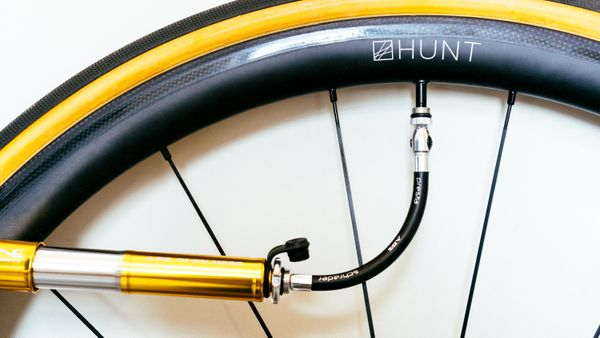
Heading out on a bike ride involves very few must-carry items. You can forego a water bottle if you must, and beyond a bike you actually need very little. Punctures are, sadly, a fact of life despite advances in tubeless technology and being able to fix them by the roadside is a necessary skill. Whether you carry the kitchen sink, or pack as light as possible, you should be bringing some sort of pump with you on every ride, as well as a spare tube or patch kit, and some tyre levers at the absolute minimum.
The best bike pumps though don't just encompass portable mini pumps. There are also floor pumps (aka track pumps) for accurately setting your tyre pressures at home and reaching higher pressures than handheld options can. There are the best CO2 inflators for speed and ultra-portability. Frame pumps, too, exist for those who choose higher pressures over weight and size, though they are far less frequently seen nowadays.
While every reasonably serious cyclist should have a floor pump at home, if you must only pick one mini pump then I suggest you make it the Lezyne Pressure Drive. The one I owned lasted just shy of a decade, only being retired because I insisted on keeping it in my jersey pocket for aesthetic reasons and my sweat eventually corroded it beyond the point of useability. It'll do a bang-up job for both road and gravel, and while it may not be the fastest, or be able to reach the highest pressures, it is very well made, reasonably priced, comes in a variety of colours (this is important, honestly) and comes with a valve core tool built into it.
Quick list
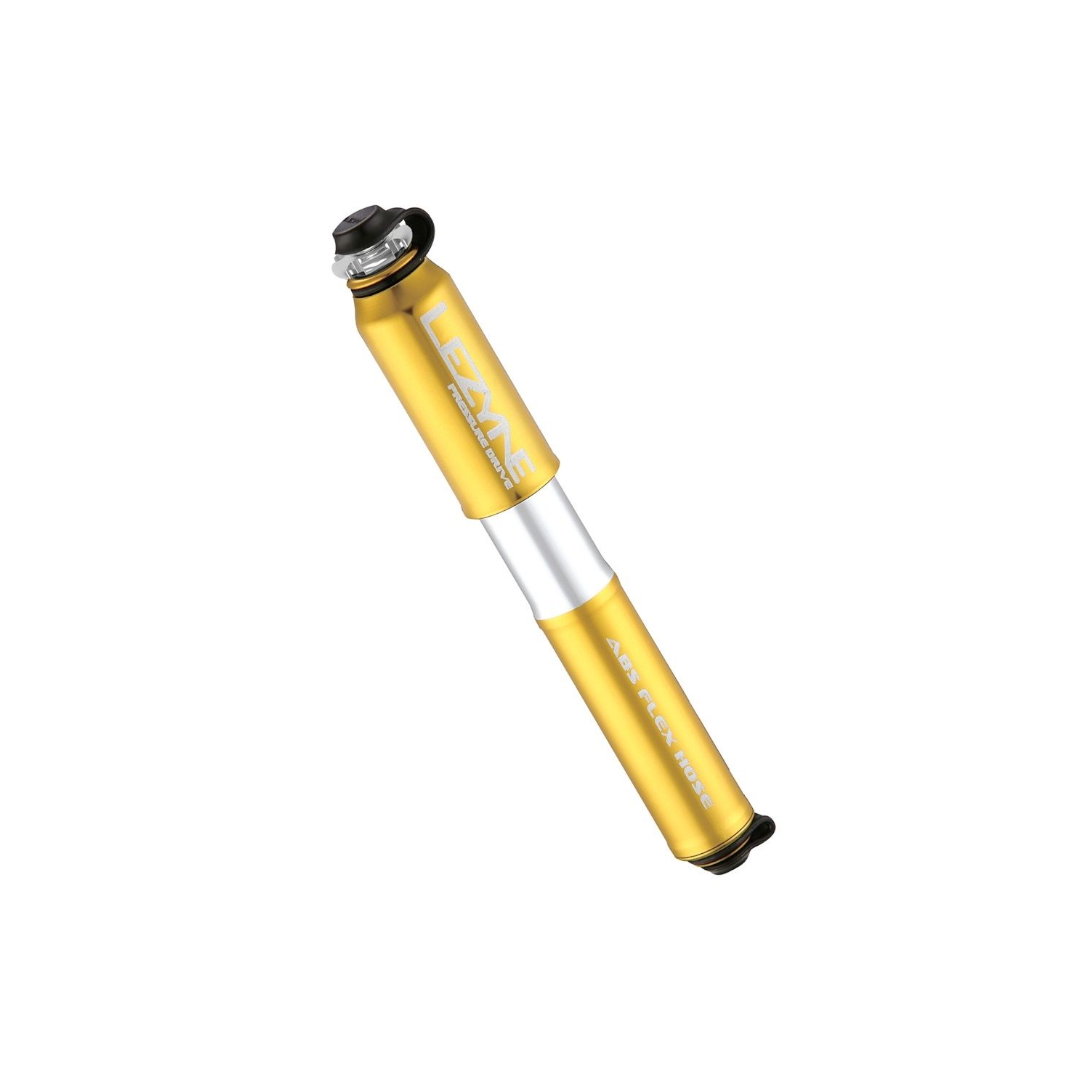
Well made, pocket friendly, with a hose attachment to reduce pressure on the valves and an integrated valve core too, all for a reasonable price.
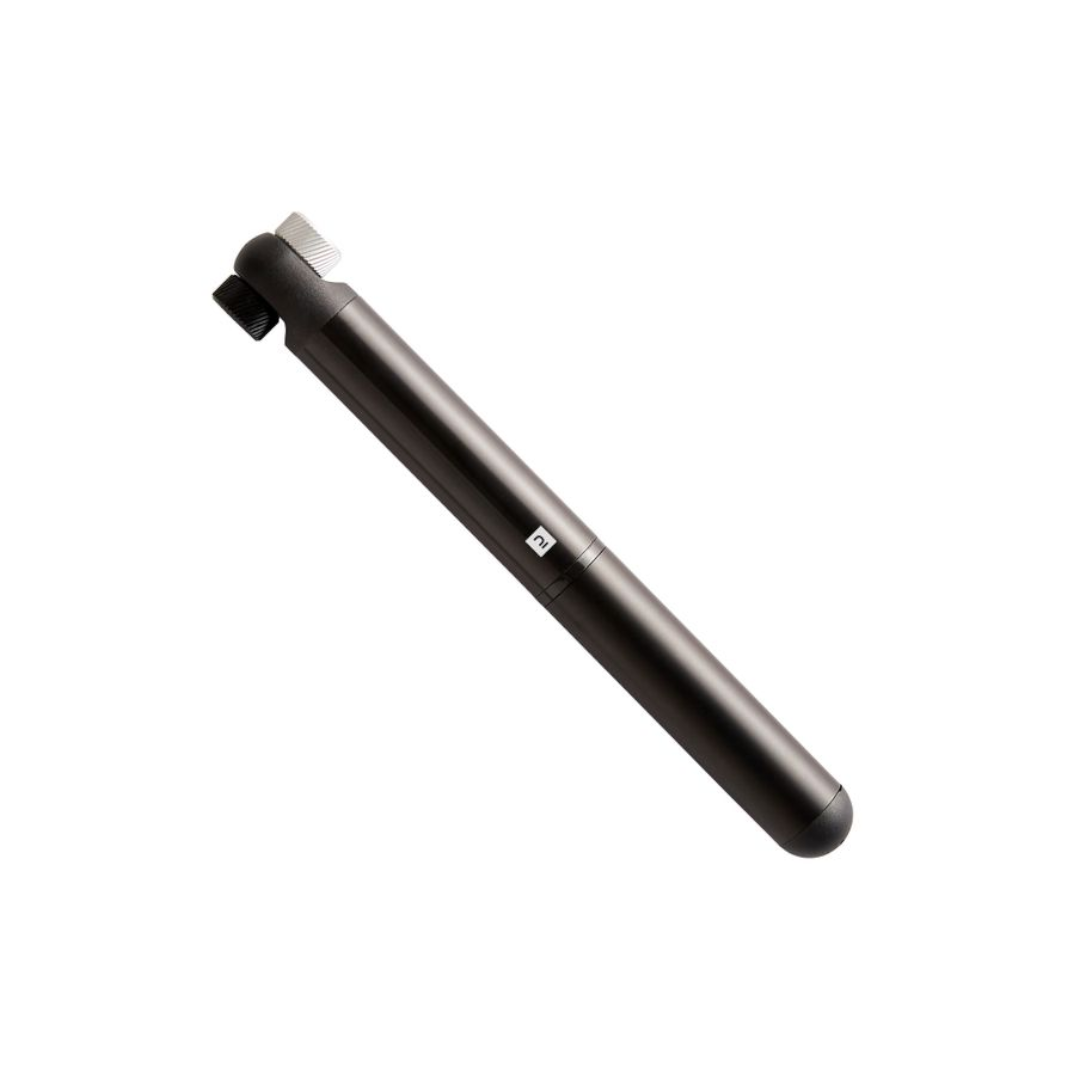
Cheap, with excellent build quality, slim design, and a screw-on head that'll do both presta and schrader valves. A real bargain.
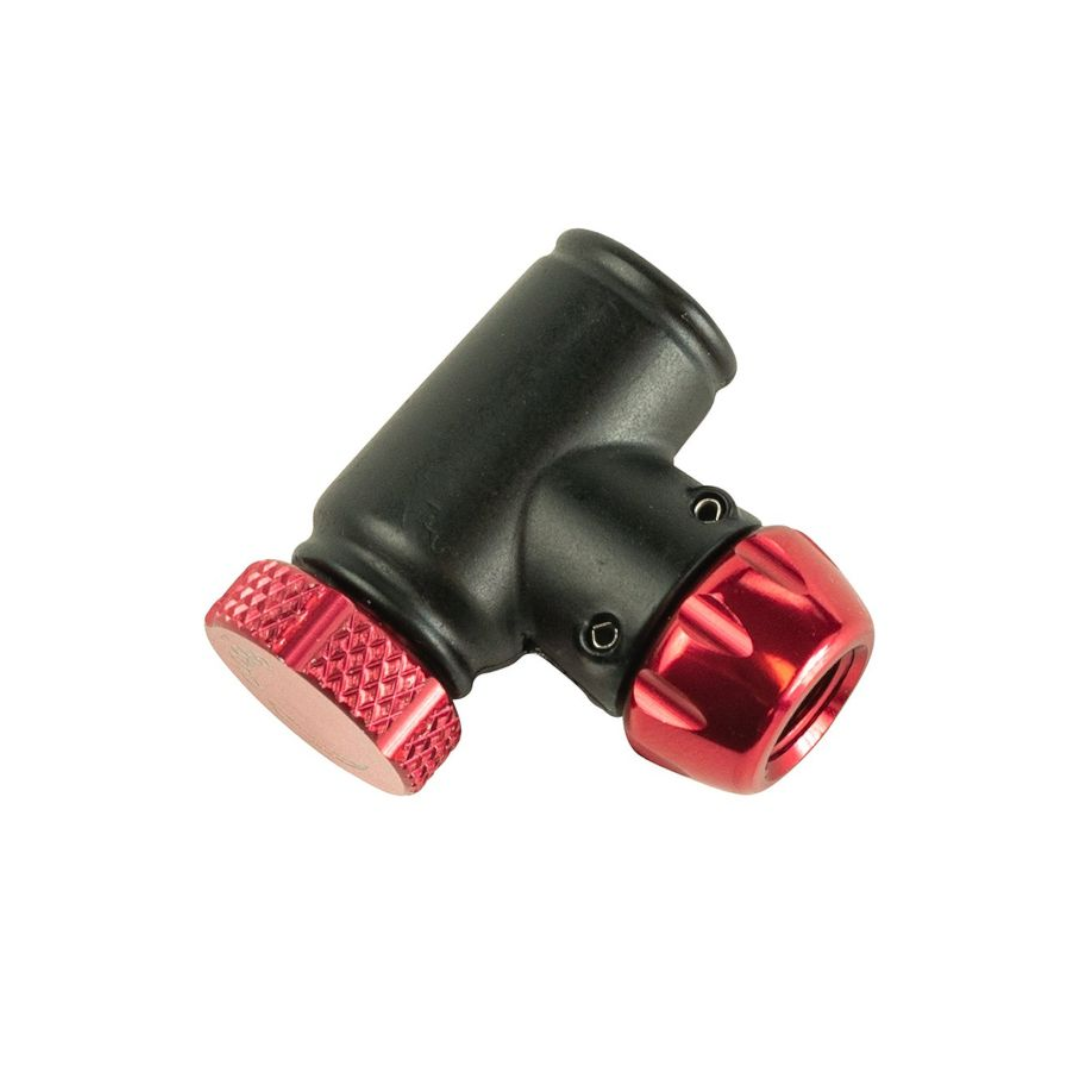
Small but perfectly formed, the Eolo IV has a built in regulator dial to allow you to control the flow of gas so you don't over-inflate and waste half a cartridge.
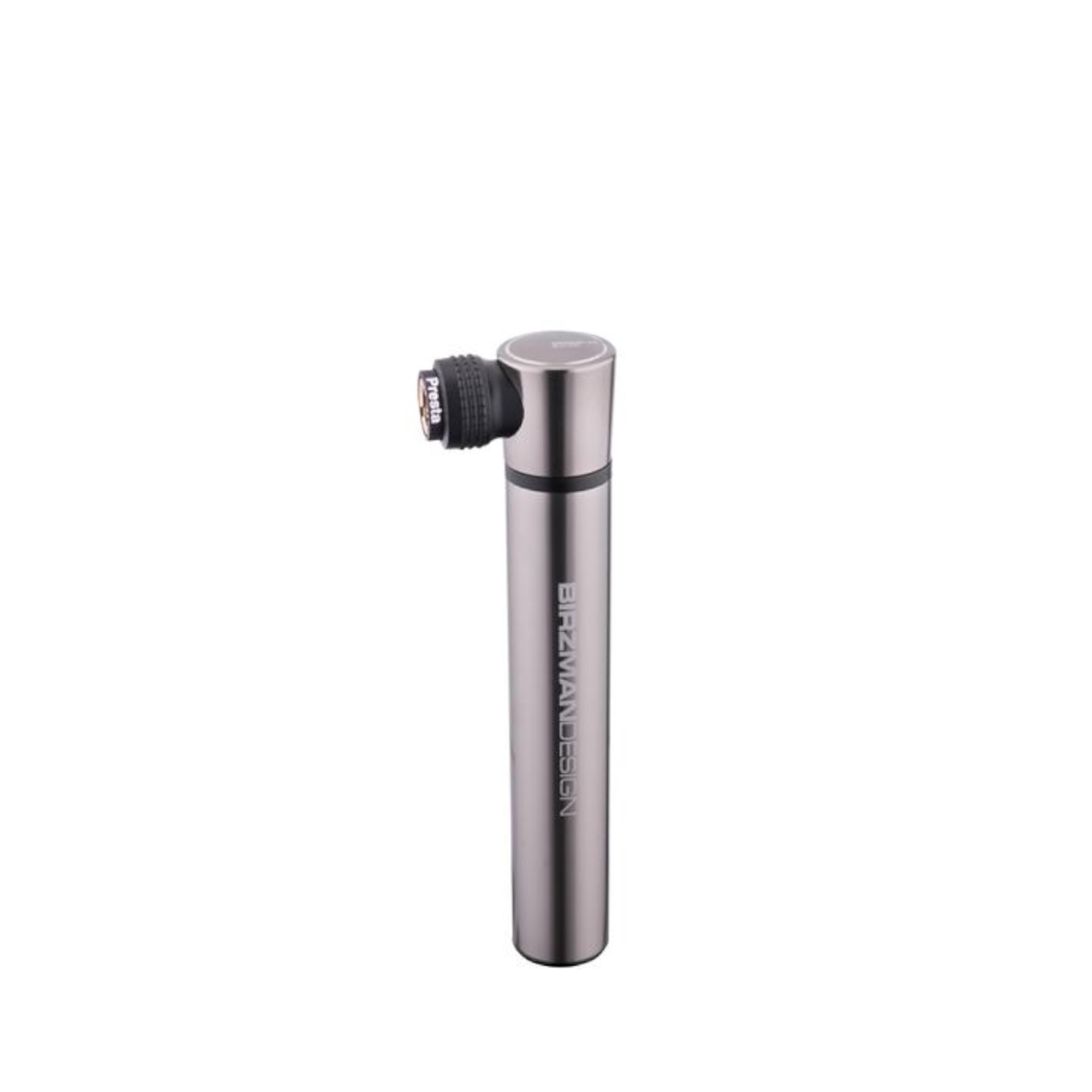
Tiny but mighty, the Mini-Apogee will just about squeeze into a saddle bag alongside your tools and tubes, and can still reach sufficient pressures to get you home.
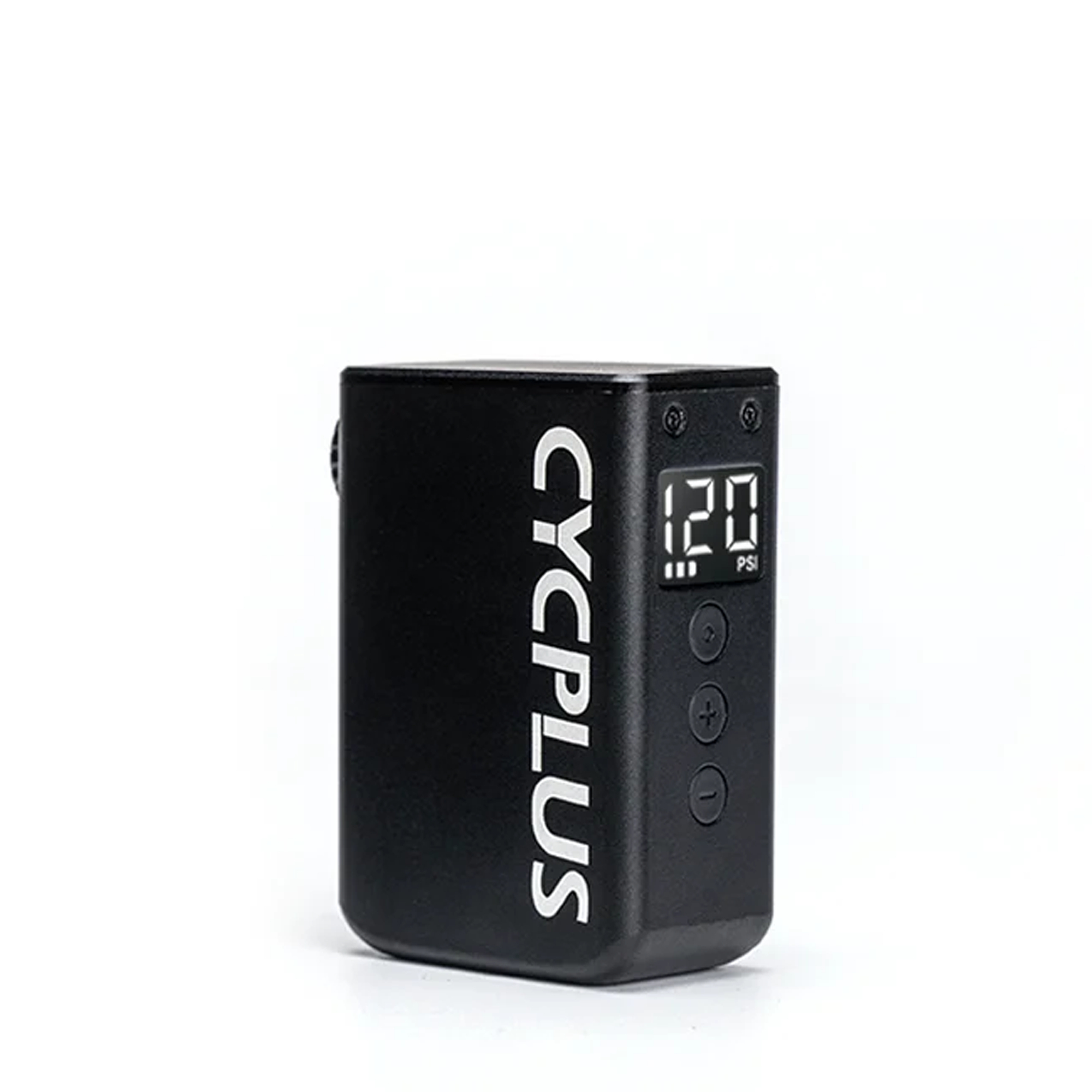
Cycplus's electric pump takes all the effort out of inflating tyres, this pocket sized compressor lets you set your desired pressure and let it do all the work.
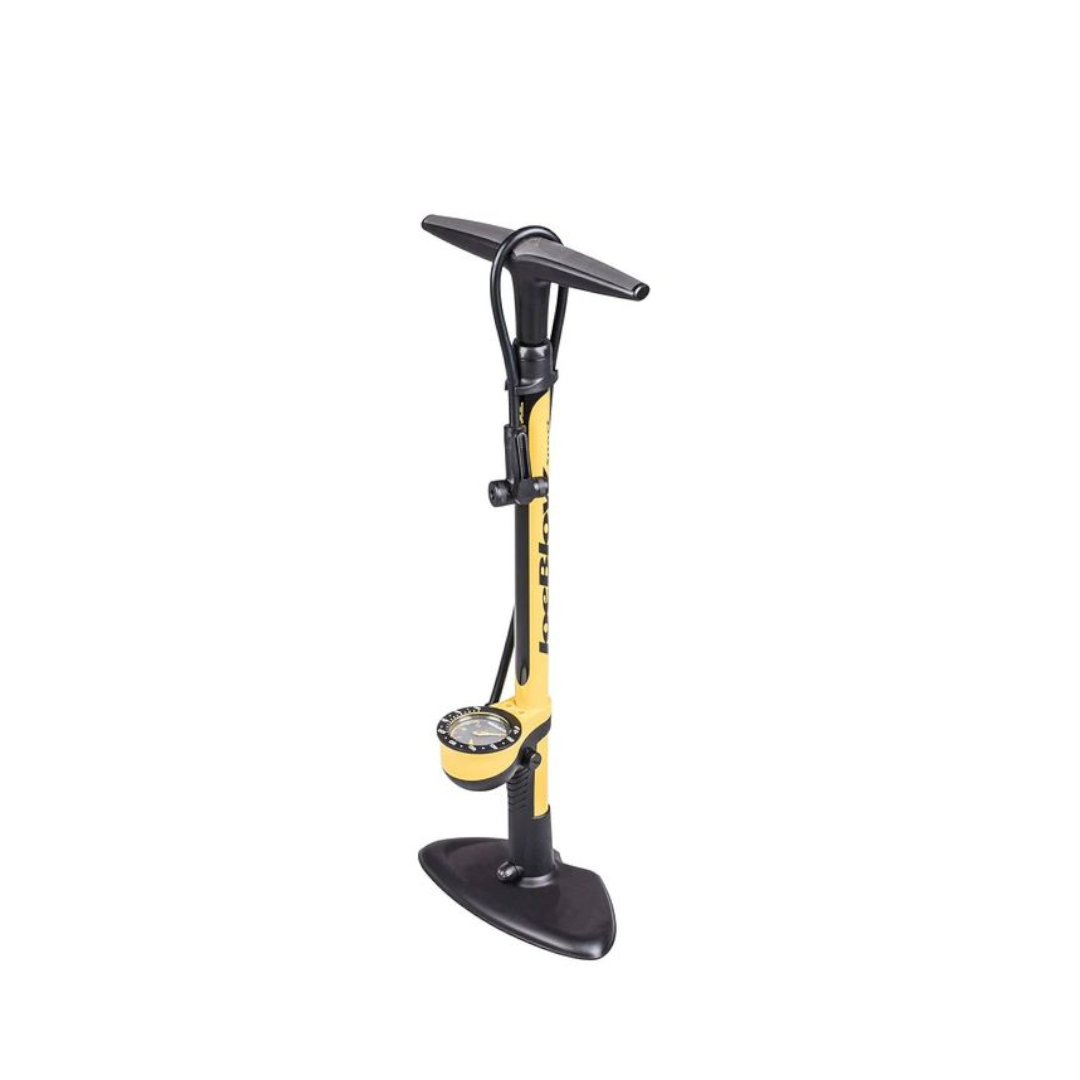
Tall, well made, with a stable base and large easy to read dial. All that for a price that won't break the bank. A workshop or garage must for any home.
Last updated on 29th of April 2025
Checked that all products are still up to date and refreshed images. Added the Cycplus electric pump to the quick list and linked to the Lezyne Pressure Drive review and Topeak JoeBlow Sport III review.
The best bike pumps you can buy today
Best Mini Pump for Road
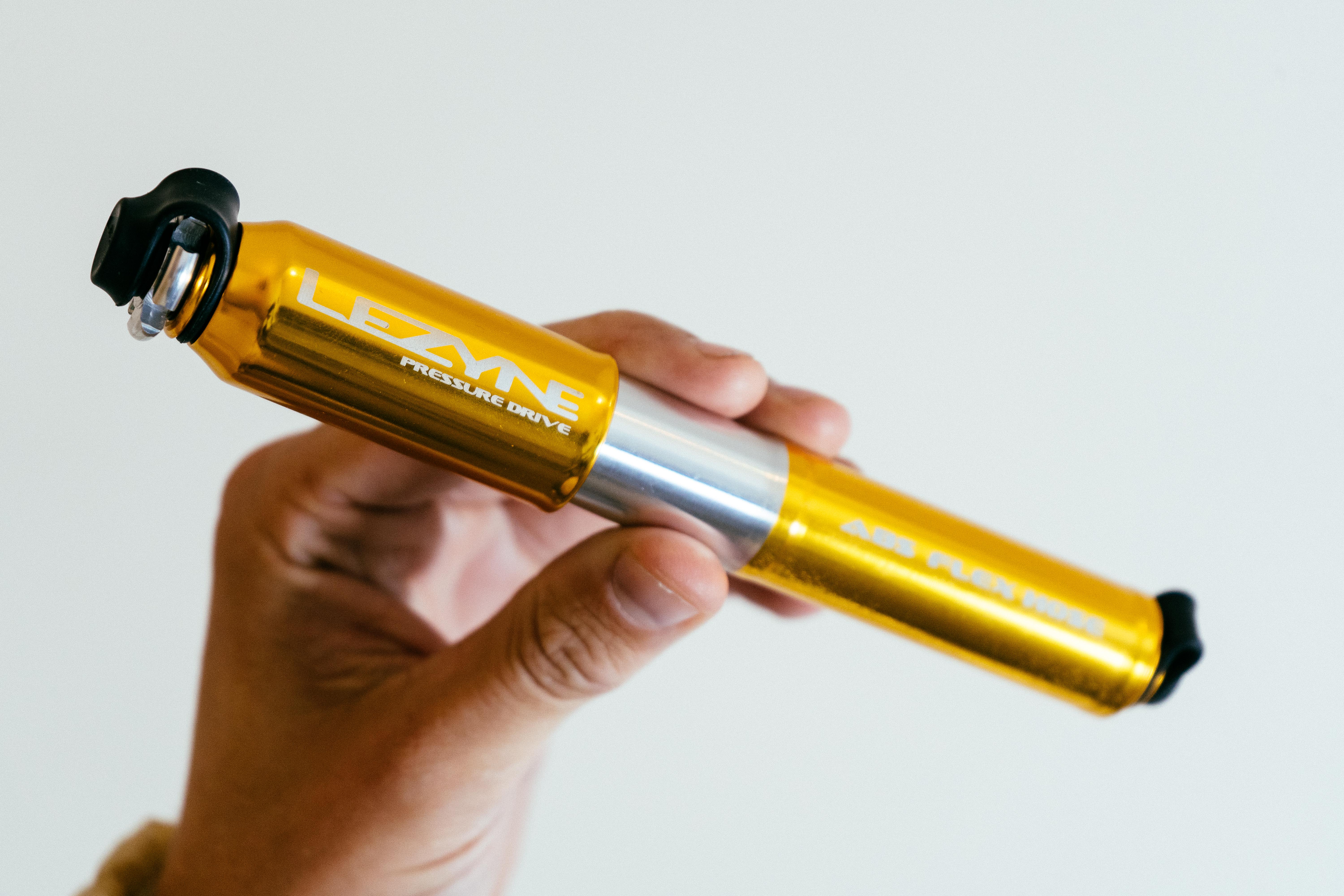
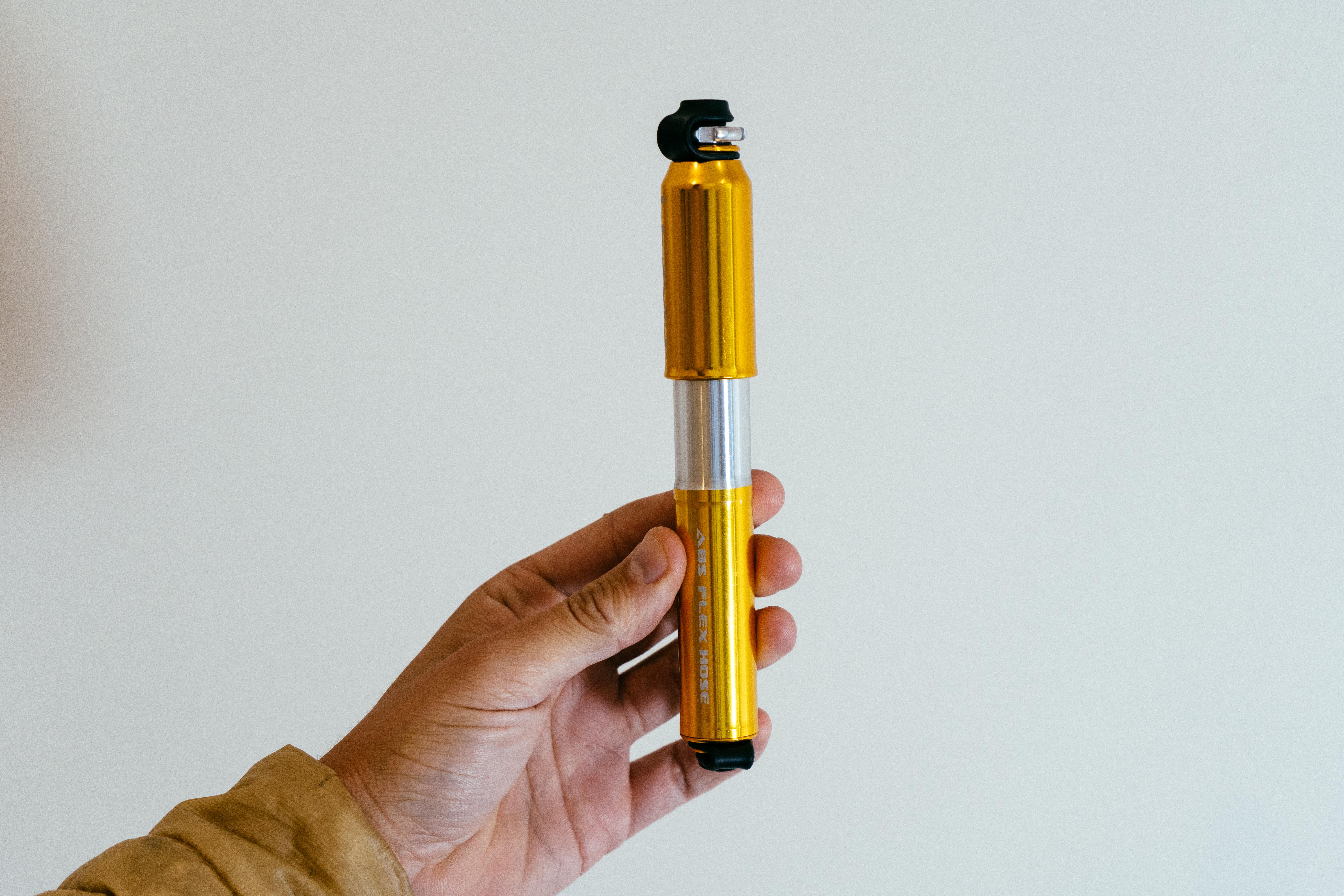
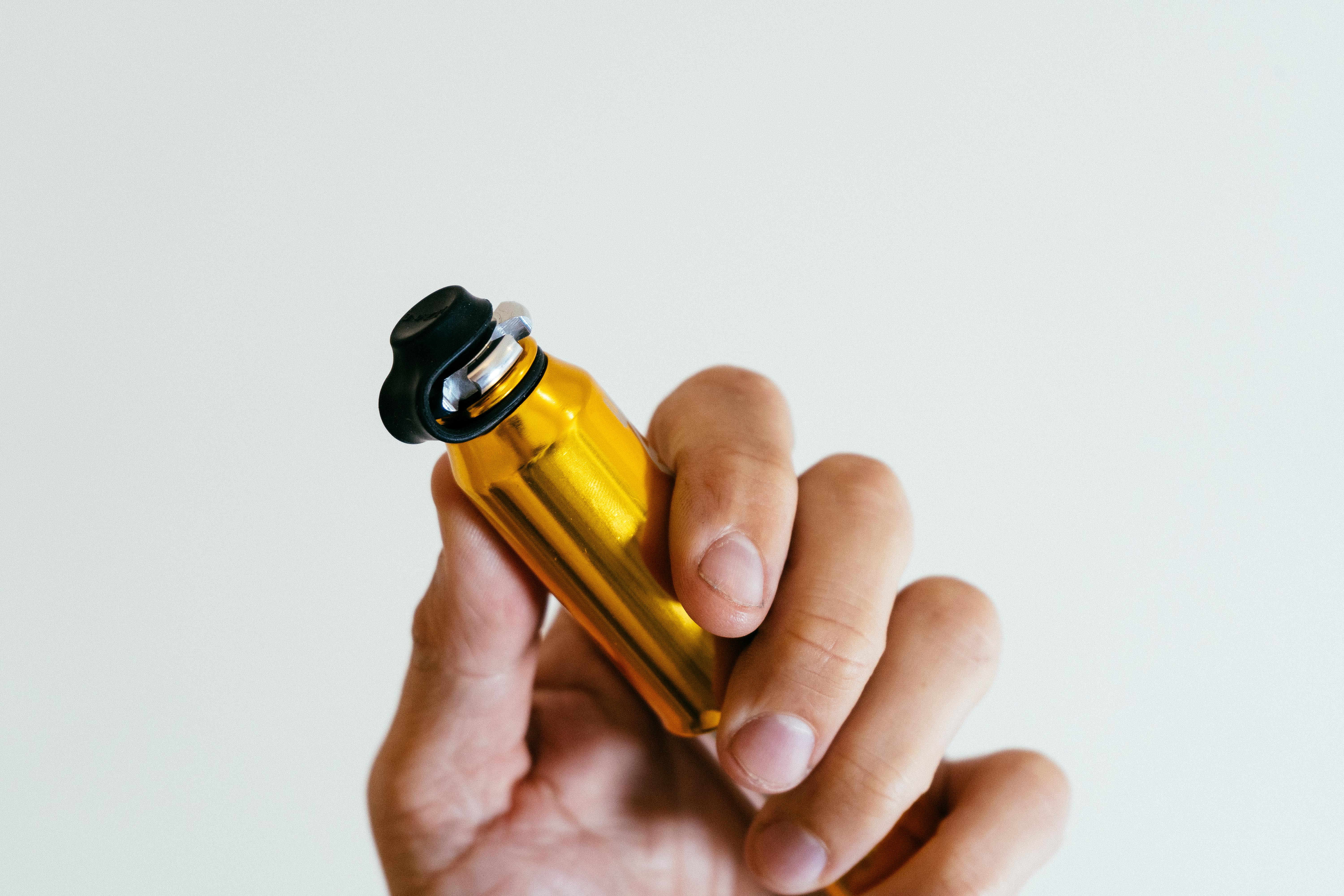
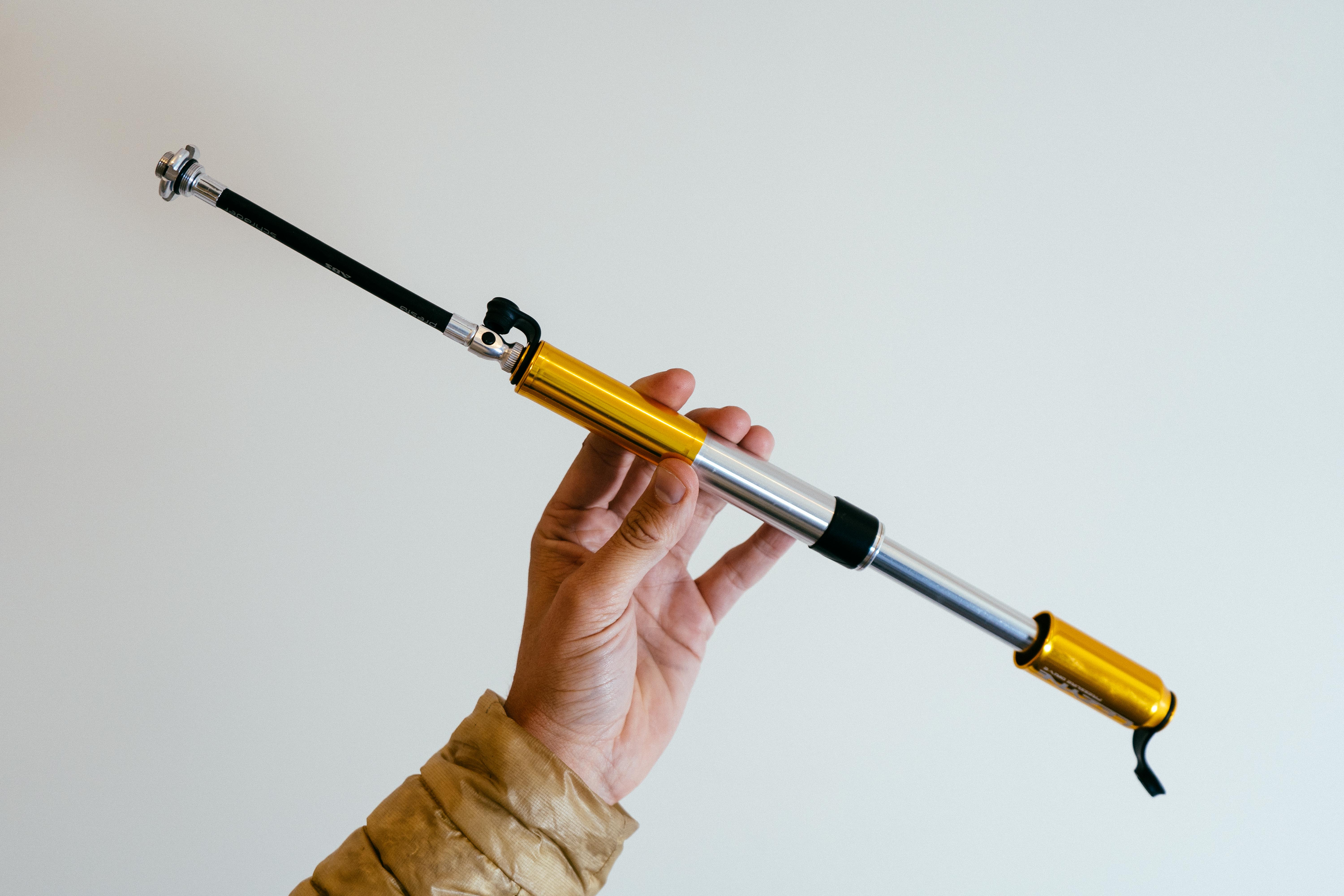
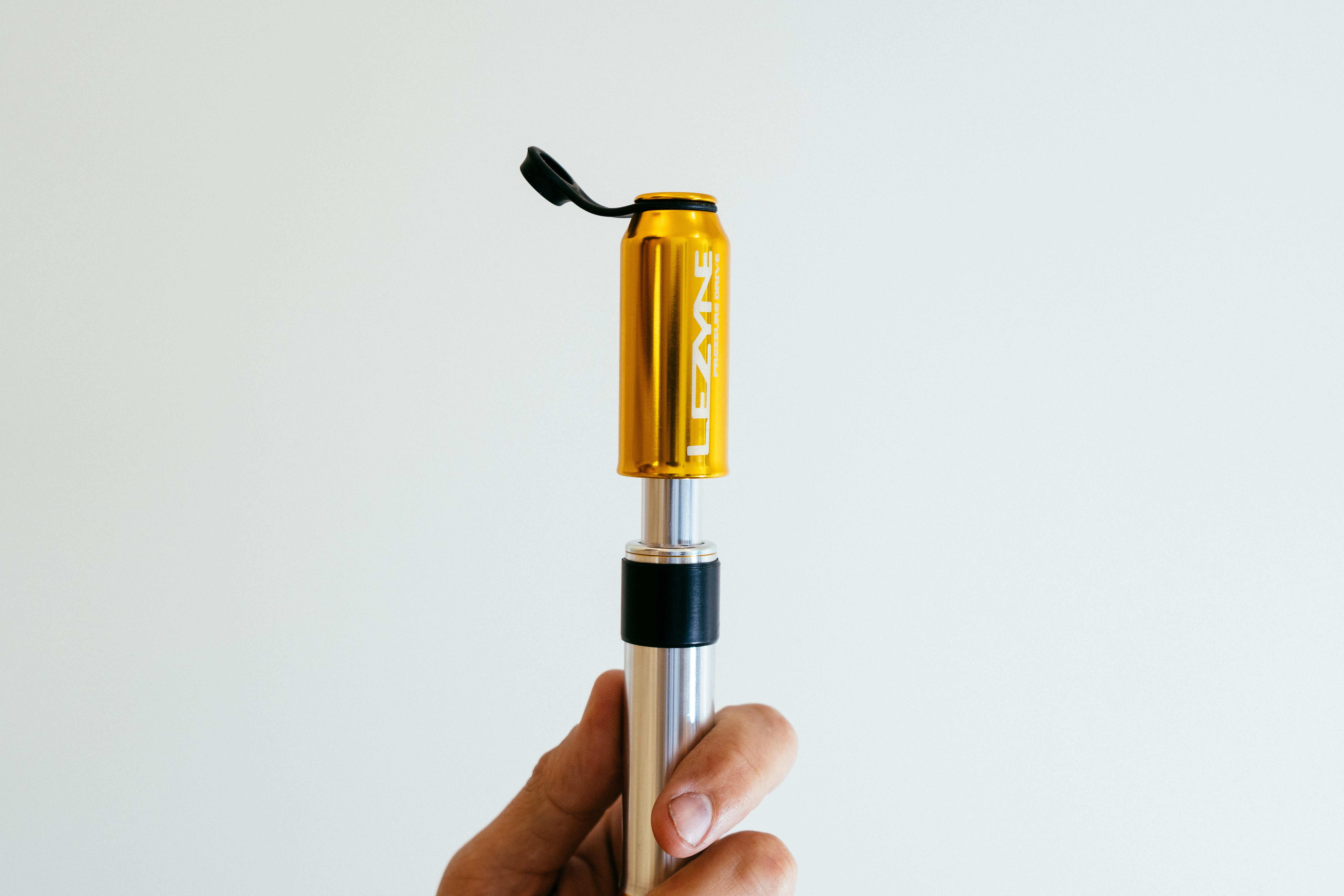
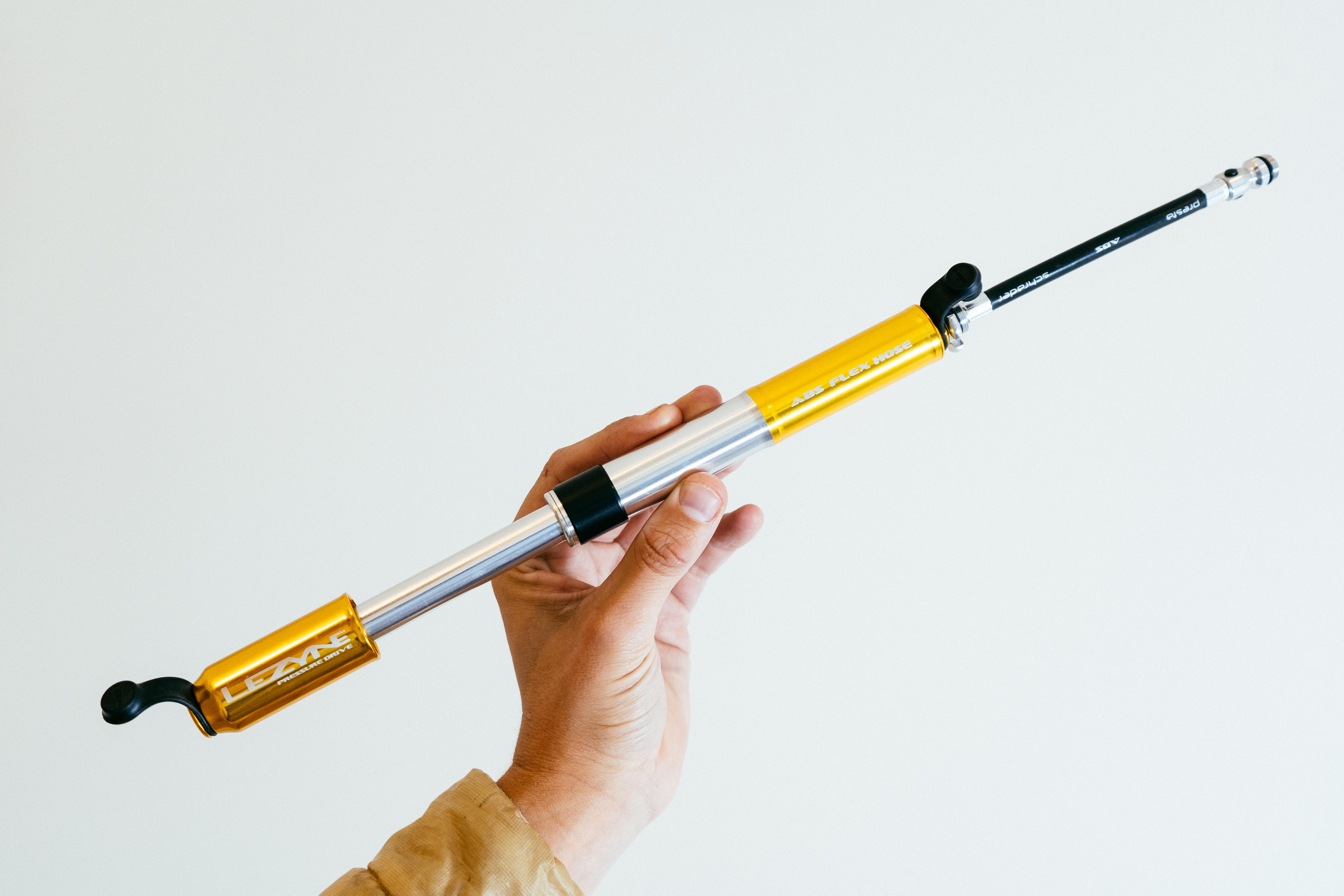
Specifications
Reasons to buy
Reasons to avoid
✅ You want one pump that'll do well in most situations: It's not the smallest, not the biggest, but it's a Goldilocks size that will cover you for most eventualities.
✅ You want build quality without paying top dollar: My own original Pressure Drive lasted close to a decade, only failing because I always stowed it in my jersey, where sweat eventually corroded the hose threads.
❌ You want fiddle-free pumping: Here you do have to unscrew the hose, screw it on the other end, then screw the hose onto the valve. All of which takes time, and can be annoying with cold, numb hands.
❌ You want a silent ride: The pump head can rattle on the body. It's easily fixed, but if you don't know the knack to stopping it, it can be a pain.
I say this is the best mini pump for road but really it's just the best overall for a bit of everything. I'd take it out for gravel riding too; while the volumes and pressures differ they do ultimately both use air.
I particularly like the size of the pressure drive. It's large enough that you can achieve a reasonable pressure - not so much as a frame pump like the Topeak Masterblaster, but certainly enough to get you home even on 25c tyres - but small enough to fit in a jersey pocket or be mounted to a frame behind a bottle cage with the included mount without looking cumbersome. It also comes in colours other than black or silver, so you can actually use it as a visual accessory if you're that way inclined.
Mounted to a frame the top head can rattle against the body. The trick to get around this is to simply wrap the body with a few turns of electrical tape. This also has the added use of giving you some emergency electrical tape in a pinch, in case your bar tape comes loose or some such emergency. Yes, it's a bit 'turn a bug into a feature', but it's such a useful and easy fix I find it hard to mark it down on this front.
It's a bit more of a fiddle to use than some, given it involves a separate hose, but you get a perfect connection to the valve every time and the hose means you're not transferring a load of force to the valve itself directly, which can have disastrous consequences if you're not careful.
Lezyne pumps have in the past had a bit of a reputation for removing valve cores that aren't done up nice and tight. An upgrade here that I'm really pleased to see versus my own old one is the addition of a valve core tool built into the Schrader end of the hose, so you can make sure everything is appropriately done up.
To find out more, check out our full Lezyne Pressure Drive pump review.
Best Mini Pump for Gravel
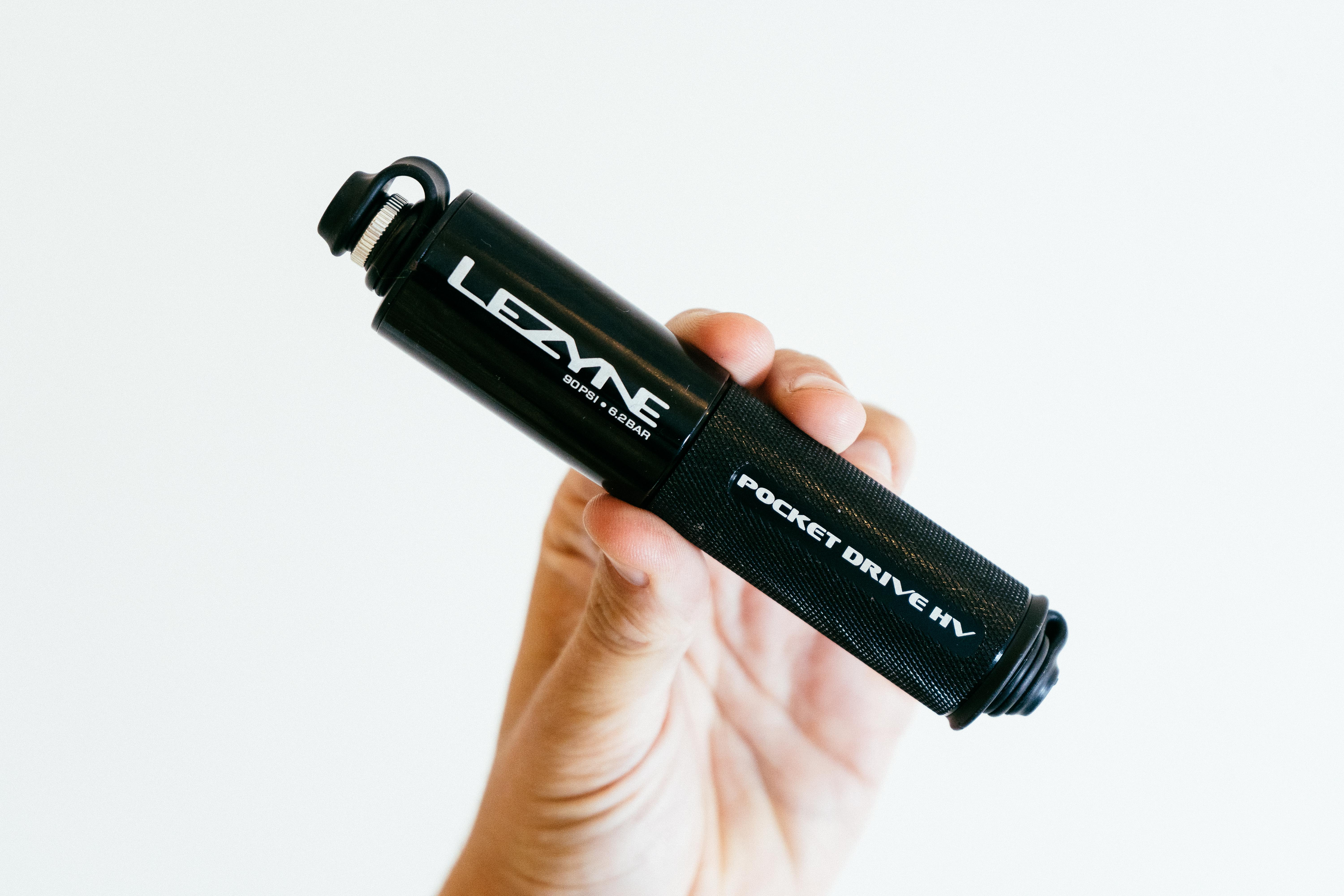
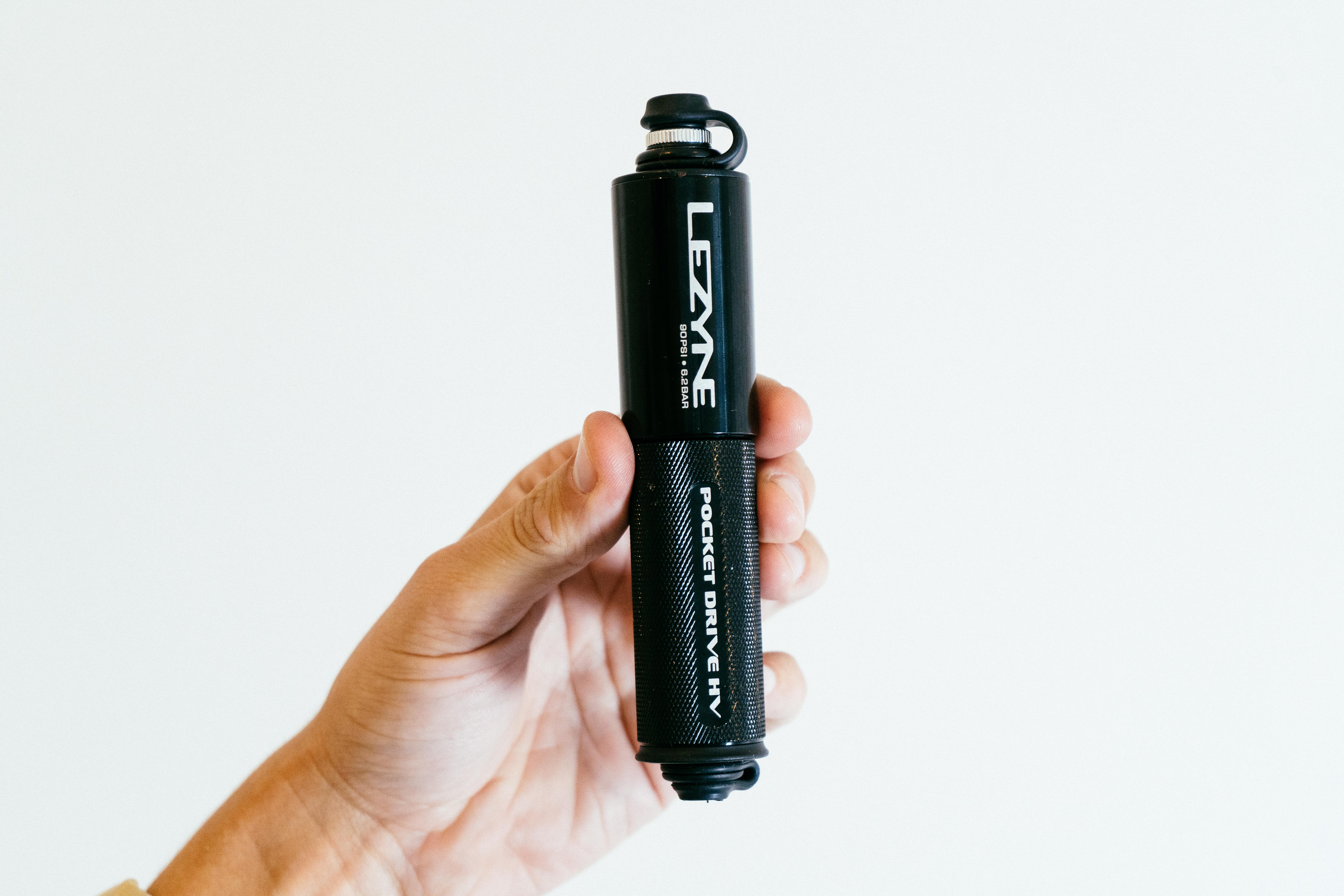
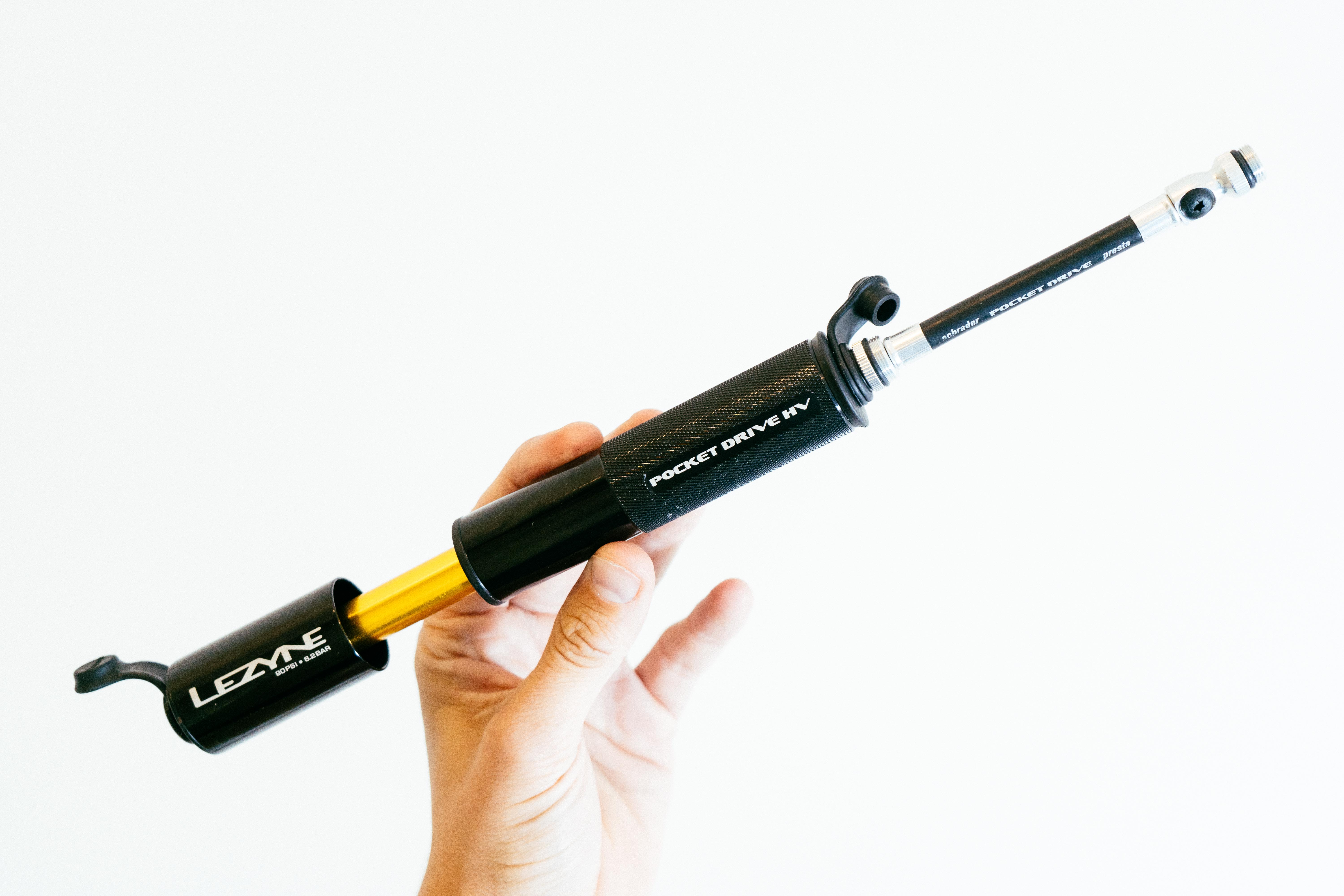
2 Lezyne Pocket Drive HV
Specifications
Reasons to buy
Reasons to avoid
✅ You only have higher volume tyres: Road pumps work pretty well for gravel, but 'high volume' pumps struggle to get to road pressures, so this is for you only if you're a die hard graveller.
✅ You value repairability: If a seal should ever go inside it's a job that takes less than a minute to take the pump apart, replace the seal, and rebuild. You can even clean and service the internals if it's been exposed to particularly grim conditions.
❌ You want a small form factor: The Pocket Drive HV is a little stout, especially when compared so something like the Birzman Mini-Apogee.
❌ You want to mount your pump to your frame: There's no included mount, so it's pockets or bags only for this one.
If you only have gravel (or high volume all-road) tyres then you can shift your focus for mini pumps away from something that'll get to a reasonable pressure, and instead focus on air volume. Big tyres just need lots of lower pressure air, so a higher volume pump like the Pressure Drive HV is ideal in this regard.
It's got a lot of the advantages of the Pressure Drive above, but tweaked for gravelly applications. The handle is knurled, meaning it's easier to hold when your hands are potentially wet and slippy and covered in mud. To be honest I'd have preferred it if the whole pump was knurled, and I don't really understand why the body is and the head isn't.
The included hose protects the valve from shearing during pumping, though it does lack the valve core tool addition of the pressure drive. Sadly the two aren't interchangeable, so you can't swap hoses if that's your plan.
Unlike the pressure drive you can't clip it to your frame as there's no mount included. Given gravelleurs are always awash with cargo pockets and frame bags I'm sure you'll still find space for it even if your jersey pockets are full - I just toss it in the frame bag and forget about it.
Aluminium can corrode with time, especially if you either sweat into it through your jersey or it gets exposed to a lot of grime in other ways. The good news is that taking it apart, cleaning and irrigating it every now and then, and rebuilding it takes very little time at all, and no special tools, so you'll be able to keep yours running for years.
Best Value
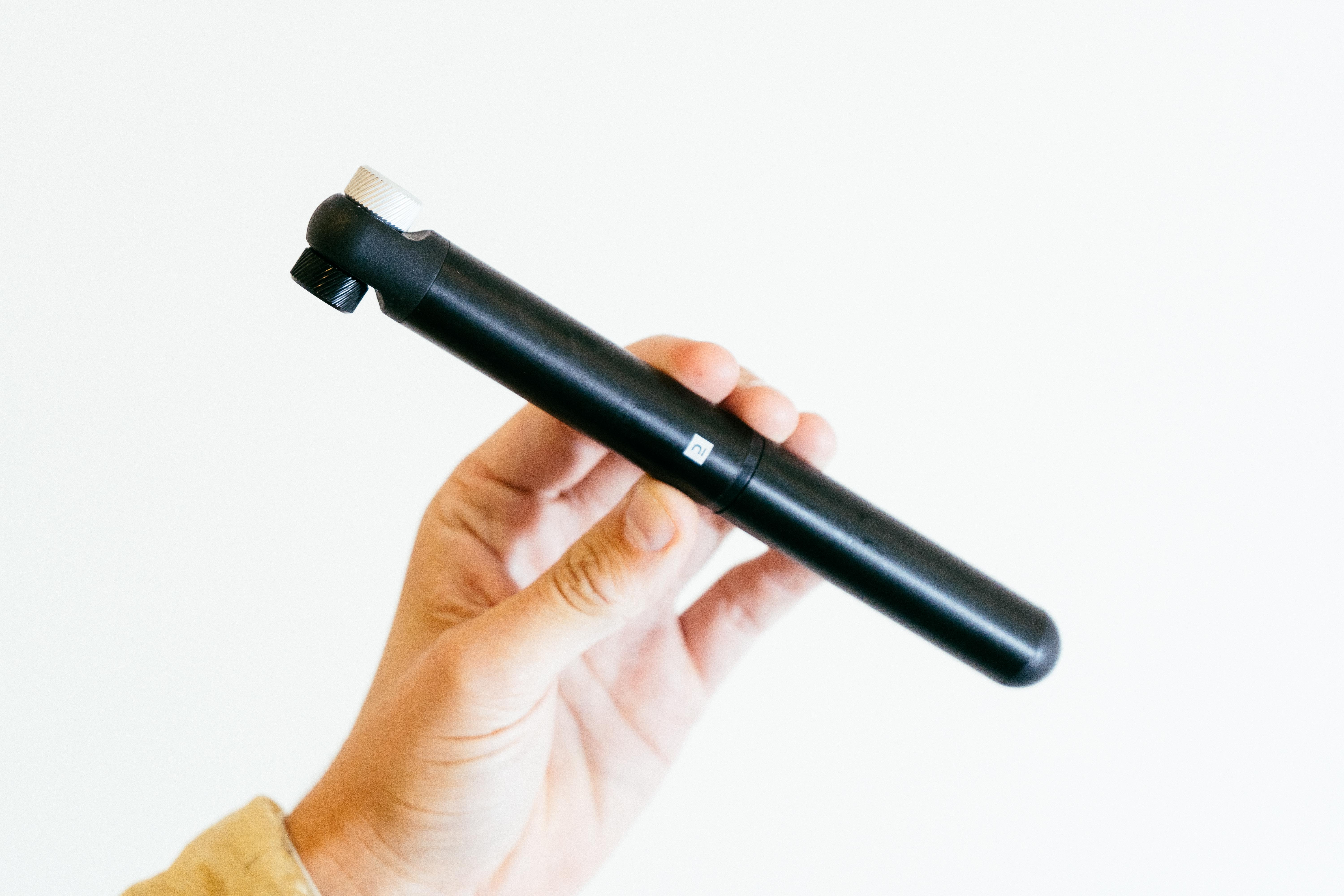
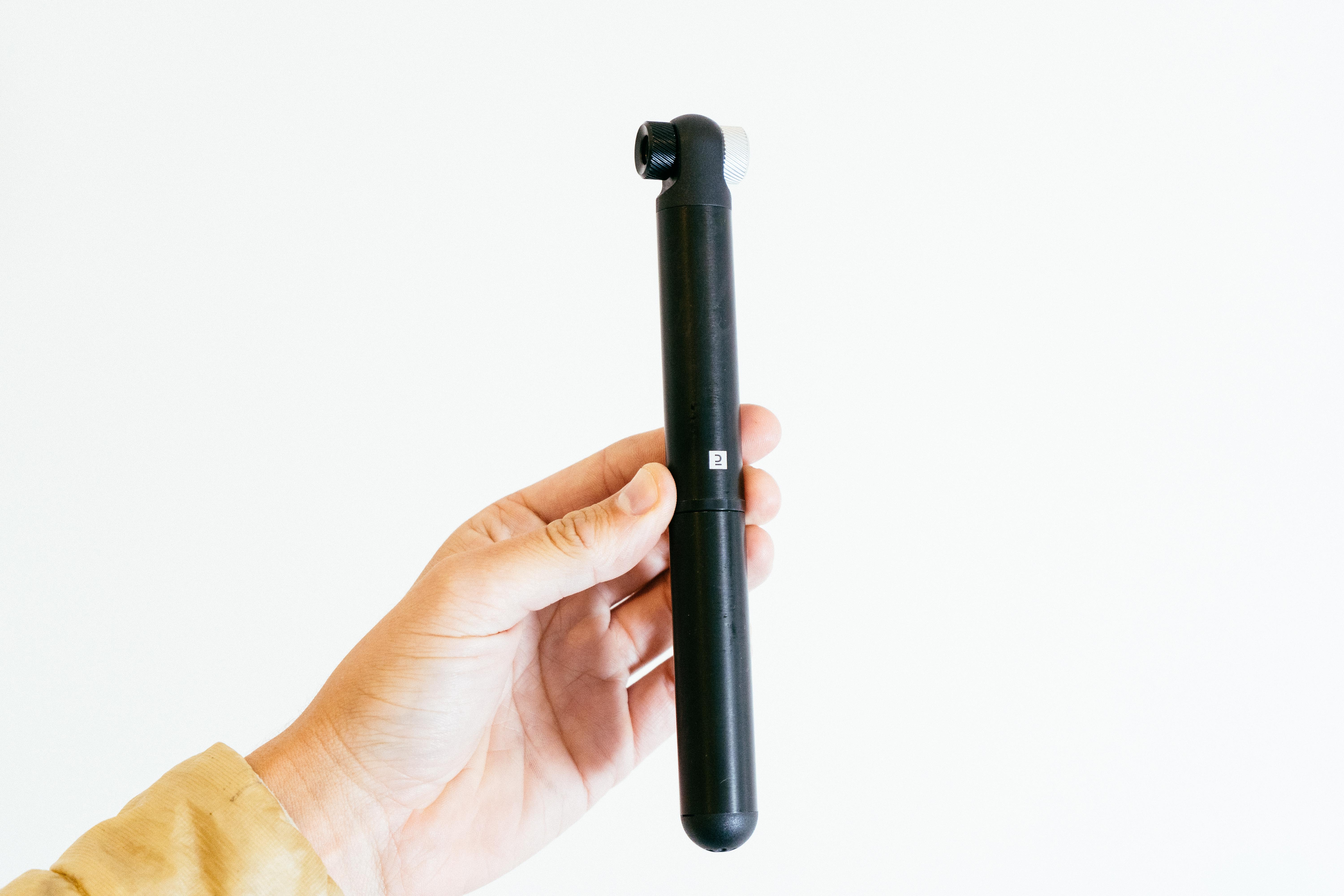
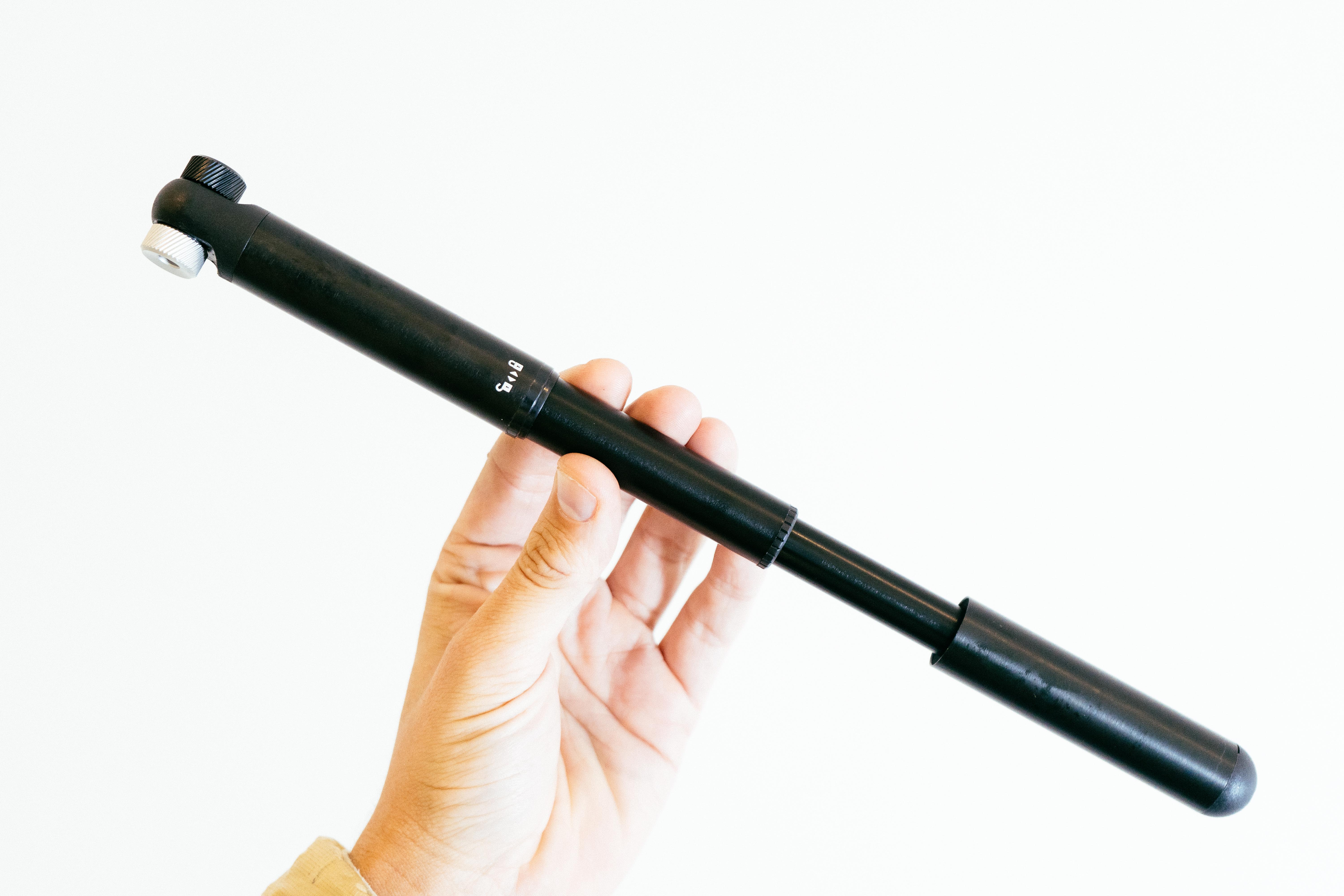
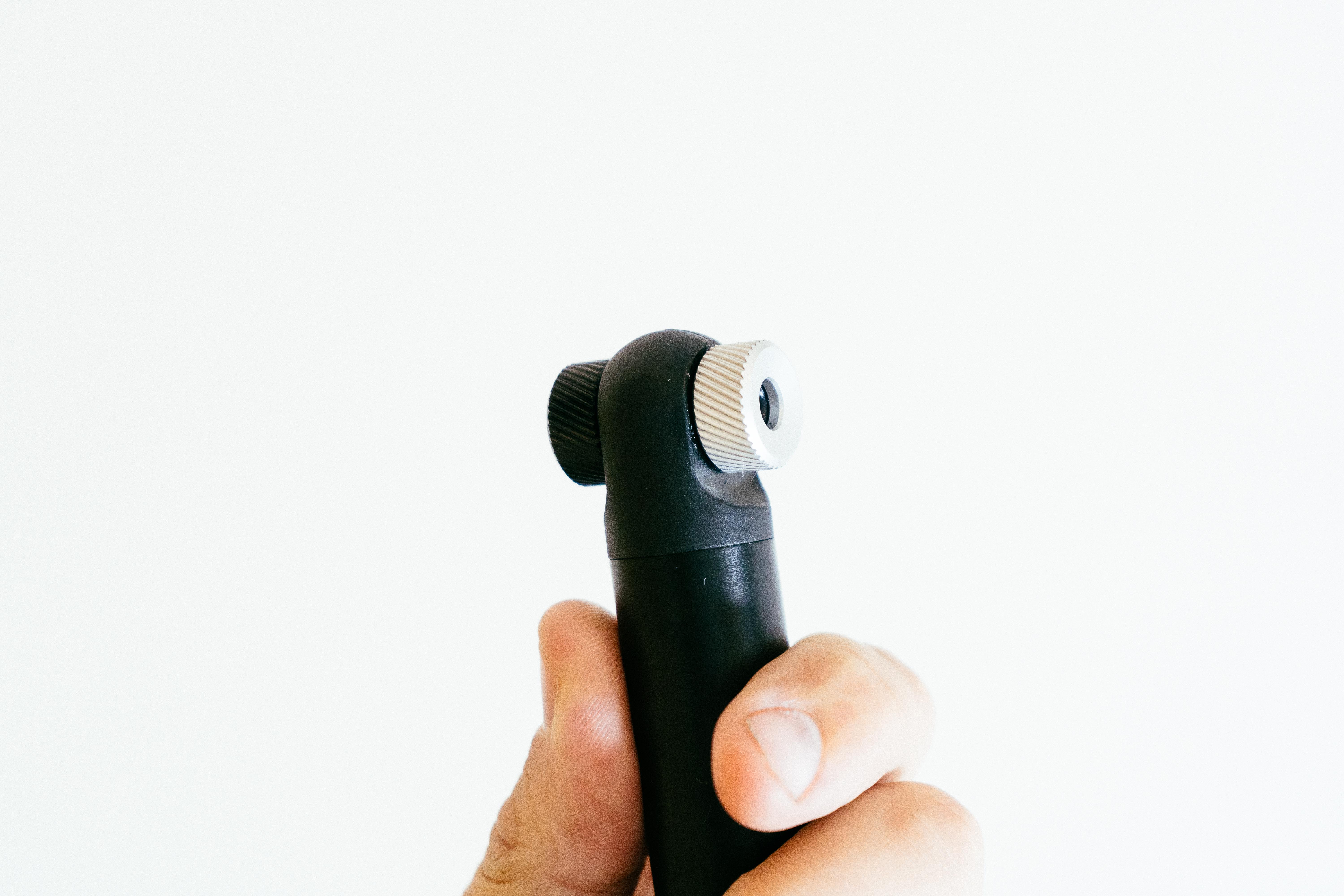
3. Riverside Compact Road Hand Pump
Specifications
Reasons to buy
Reasons to avoid
✅ You don't want to spend a fortune: It's cheap, but there isn't any noticeable drop in quality to many other pumps here.
✅ You want to mount it to your frame: There is an included mount, but the key is the lockable piston handle so the pump won't extend at random if you hit a bump.
❌ You want a built-in hose: A hose protects your valves from shearing forces. They aren't vital, but without them you do need to be more careful.
❌ You want a small pump: It's narrow, but among the longest of the mini pumps I've tested. It'll certainly fit in a pocket, but it will protrude from the top.
Cheap pumps really have come on a long way since I bought my first one. This mini pump from Decathlon's in-house brand Riverside is a lot more premium than the £15 / $20 would have you believe. The body is a lovely brushed finish anodised aluminium, and the dual-purpose head screws on rather than just pressing on for a secure connection.
The body is slender and long, and ergonomically the rounded end of the handle helps when getting to higher pressures as it doesn't cut into your hand. It's not got the knurled grip of the Lezyne or Silca options, but it also doesn't have the same price tag.
There's no included hose, so do be careful to brace the head with your hand while pumping to protect the valve from shearing, and while this is a feature it lacks it does have a locking mechanism that stops the pump extending, making it a really great option for mounting to your frame. It's totally rattle free, and the narrow shape will sit well against a downtube.
If you want an inexpensive little pump that works well and won't fall apart then I think you can do a lot worse than this. Like the more premium Lezyne options you can also easily disassemble the body and replace the O-ring seal. I don't believe decathlon sells them separately, but you'll be able to find one that fits with a bit of effort if you want to avoid waste.
The main drawback, as you might have gathered from the specs sheet, is the speed of inflation. It's slow going, and the head is rather fiddly. For such a long pump it delivers relatively little air, with an imperfect seal. It'll get the job done, but it's just not as easy or quick as it is with other more expensive options.
Easiest to use
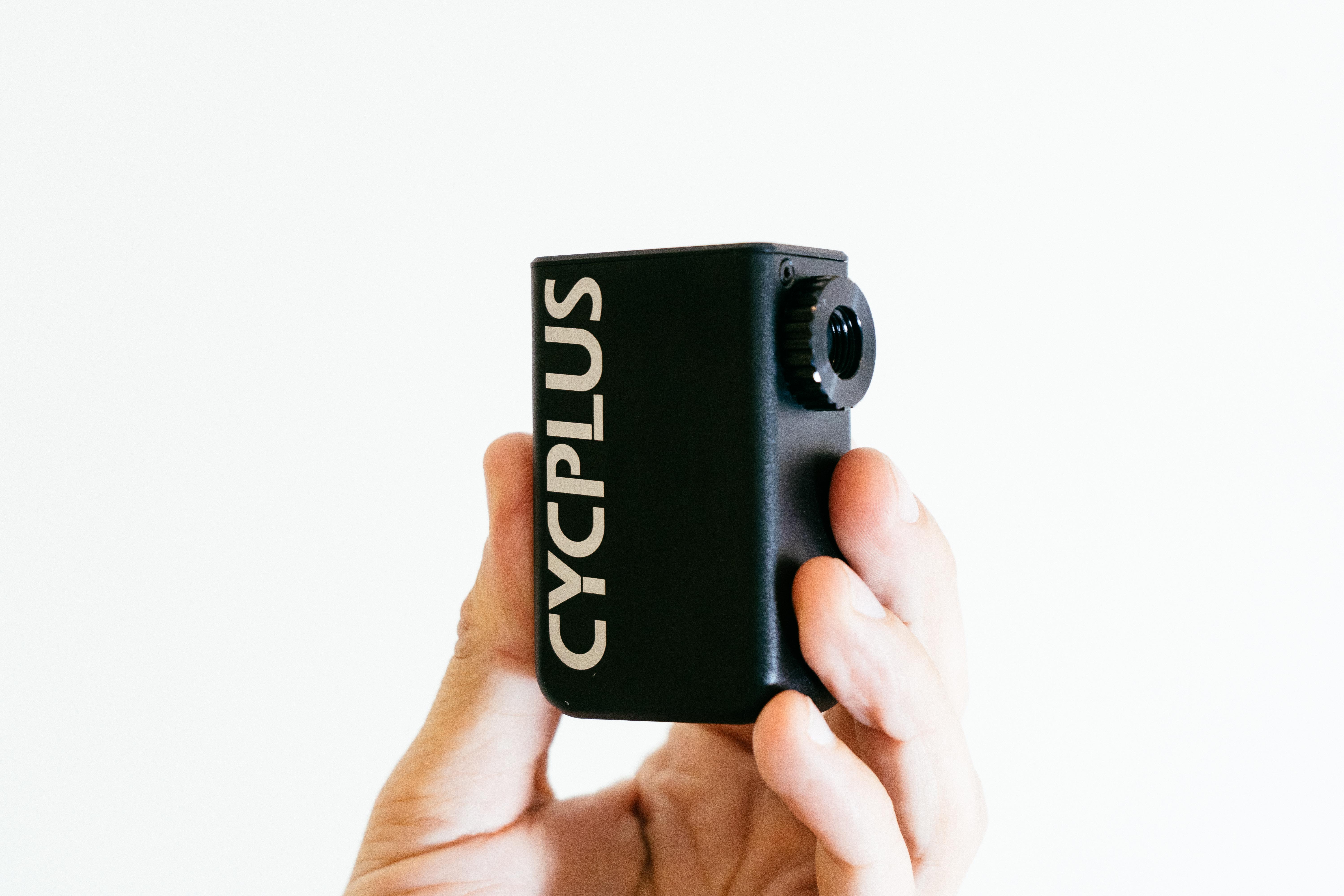
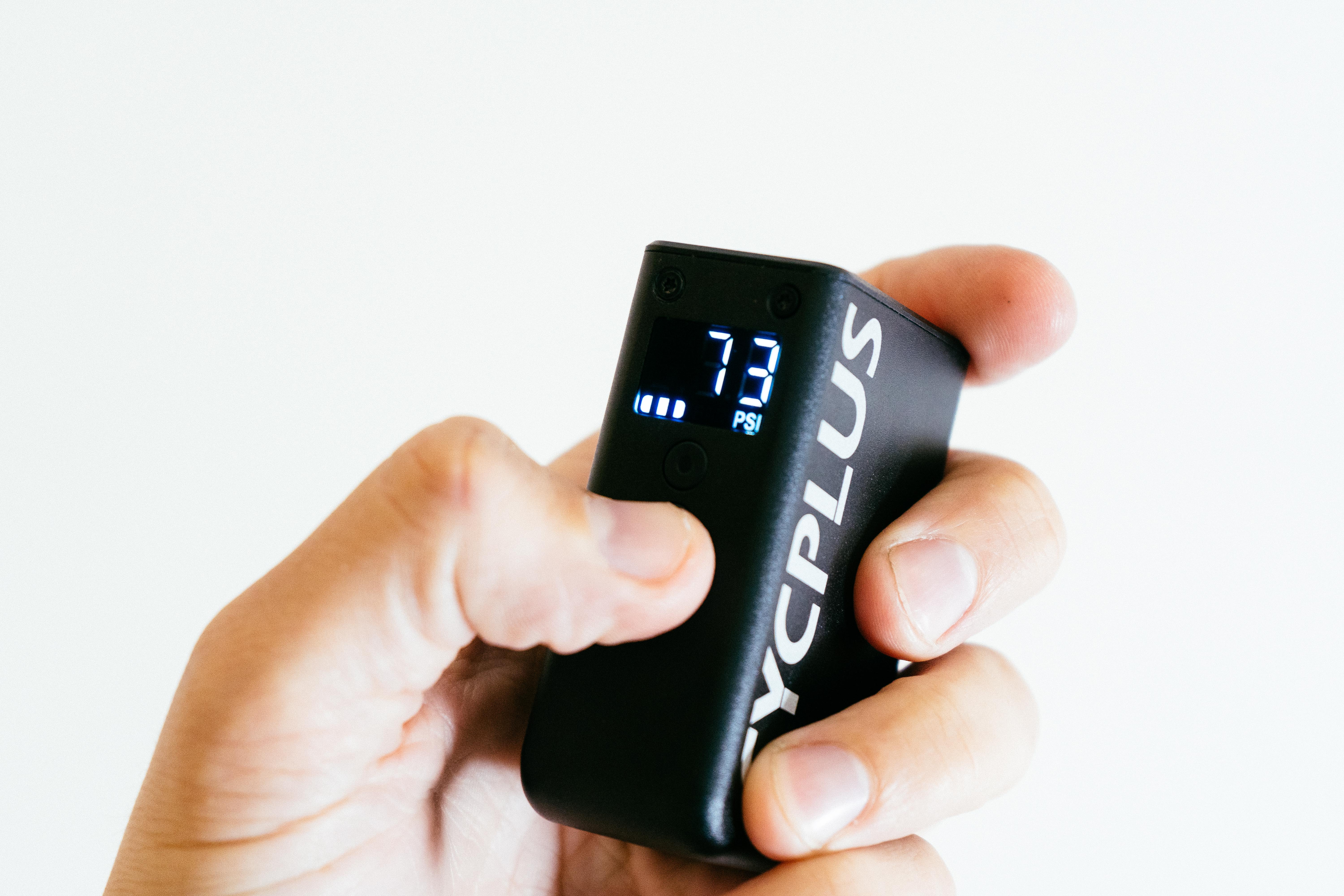
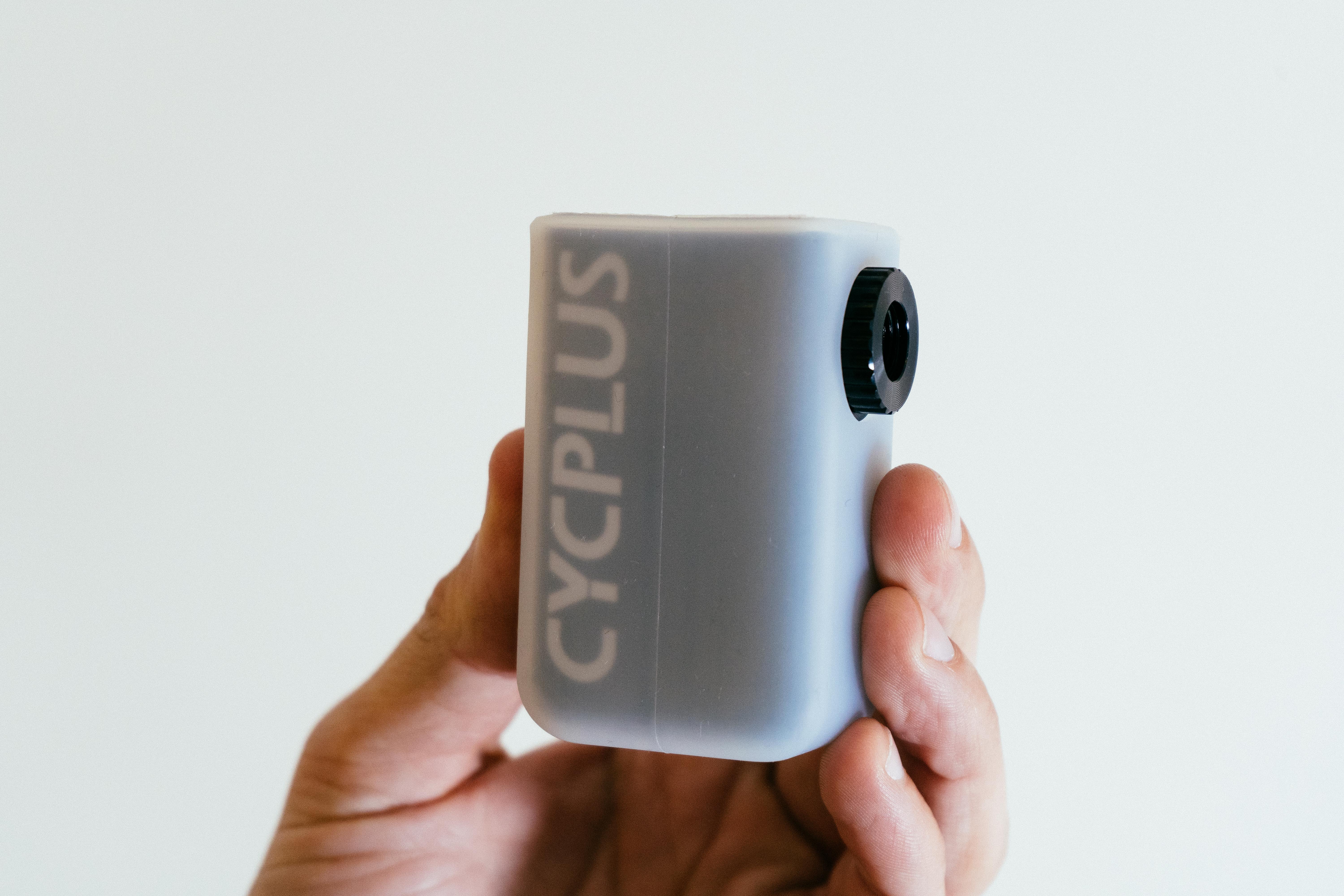
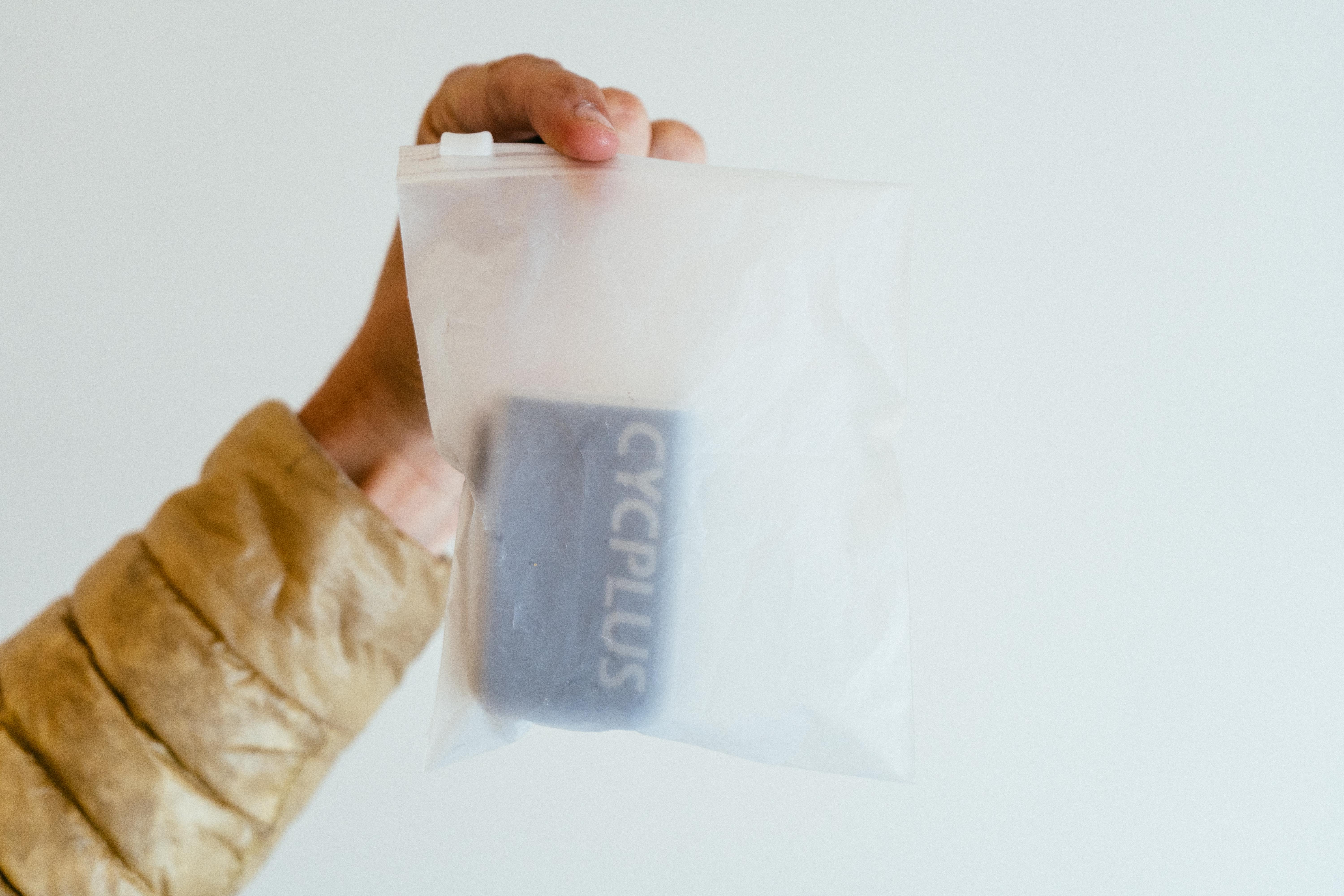
4. Cycplus AS2 Pro
Specifications
Reasons to buy
Reasons to avoid
✅ You can't be bothered pumping: Sit back, relax, let the small pocket-sized motor do all the work so you don't have to.
✅ You want the right pressure, even after a flat: Some mini pumps just can't get to road tyre pressures. This can.
❌ You're a forgetful charger: If you let your electric gears go flat it's annoying, but if you forget to charge your pump it could mean an S.O.S. call to a friend for a pickup.
❌ You live somewhere very wet: It isn't waterproof without the included ziplock bag, which is an oversight. It's a workaround that works, but in my opinion something like this should be IPX4 or 5 waterproof.
Yes, I was a sceptic too, but bear with me. I have always harboured luddite tendencies but one of the worst things about mini pumps is that you simply can't get to the higher pressures that 28c or below road tyres require for optimum ride quality. Even with the Lezyne Pressure Drive, the mini pump I'd take out myself, I know that if I puncture I'm going to spend the remainder of my ride below the 70psi or so that I like to put in my 28s. As I discovered when I took 24 tyres to a lab this doesn't really have any impact on performance, but it does make me more nervous about hitting my rims, and can affect how cornering feels.
The Cyplus pumps, regardless of their drawbacks, can get your tyres up to 'proper' pressure. If you're riding road and gravel you probably want the AS2 Pro. If you're going to buy a mini compressor you may as well get the one with a screen and the ability to select the pressure you want to aim for. The larger version is too large, and the non-Pro doesn't have a screen.
The AS2 Pro is pocket sized, USB-C rechargable, easy to use, and will inflate a soft tyre to full virility in very short order indeed. Yes, you need to remember to charge it or it's useless, but if you're running electronic gears already then this argument does fall down somewhat. Just remember to charge it and you'll be grand.
There are a few key drawbacks though. If you use inner tubes with plastic valves you need to remember to use the additional hose or you can melt the valve, which really would be a disaster. This isn't the main drawback though, that's the fact that it's inexplicably not waterproof. It ships with a silicone case, but it does state that in the wet you should keep it in the included ziplock bag. Any old freezer bag will do the same job, and it's what I do with my phone in the rain, but it's still a bit of an oversight.
Finally, you have to put the valve at the bottom in order to easily see the screen while pumping to check your progress. This isn't ideal for tubeless setups, though it's not a fatal flaw by any stretch.
Most Durable
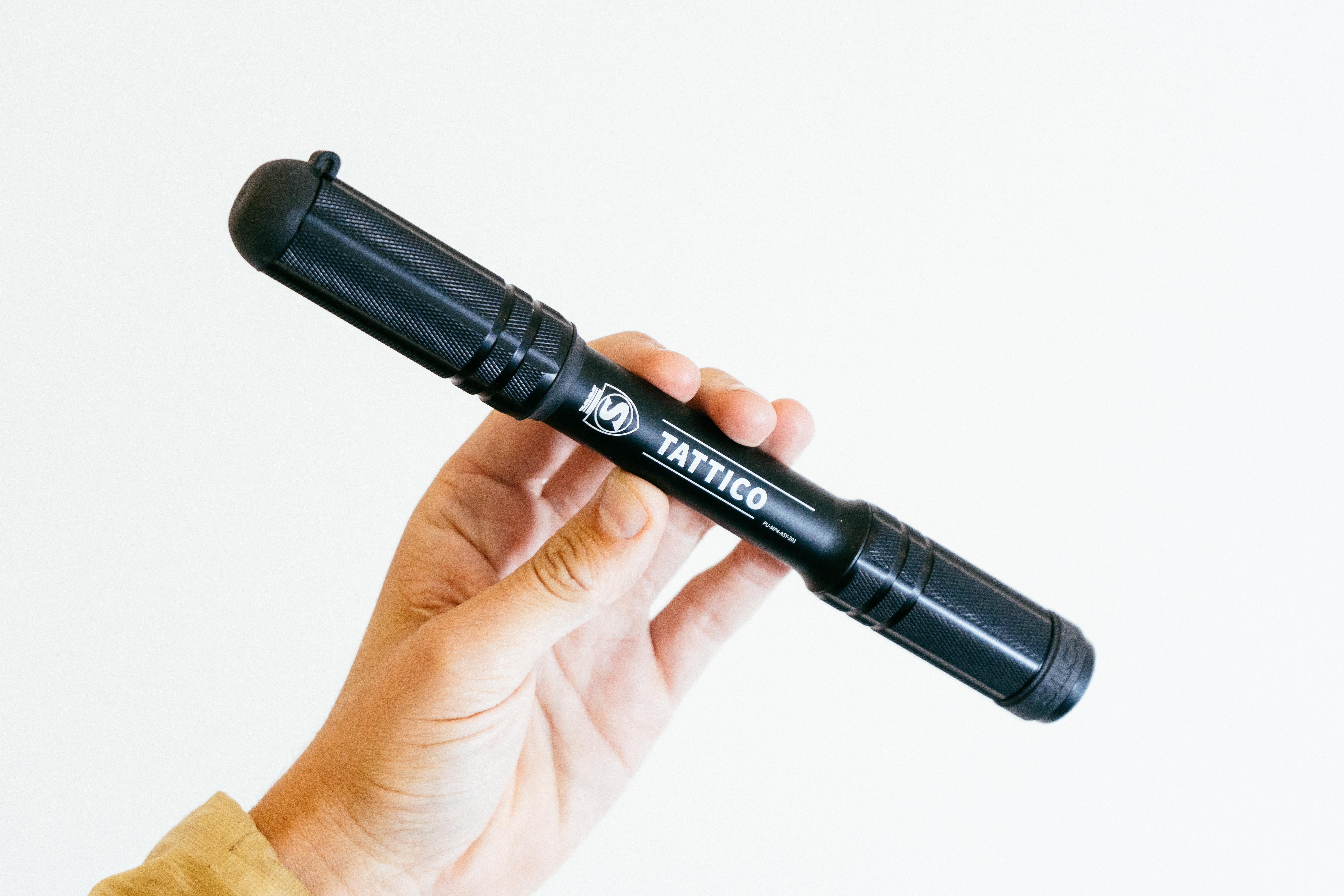
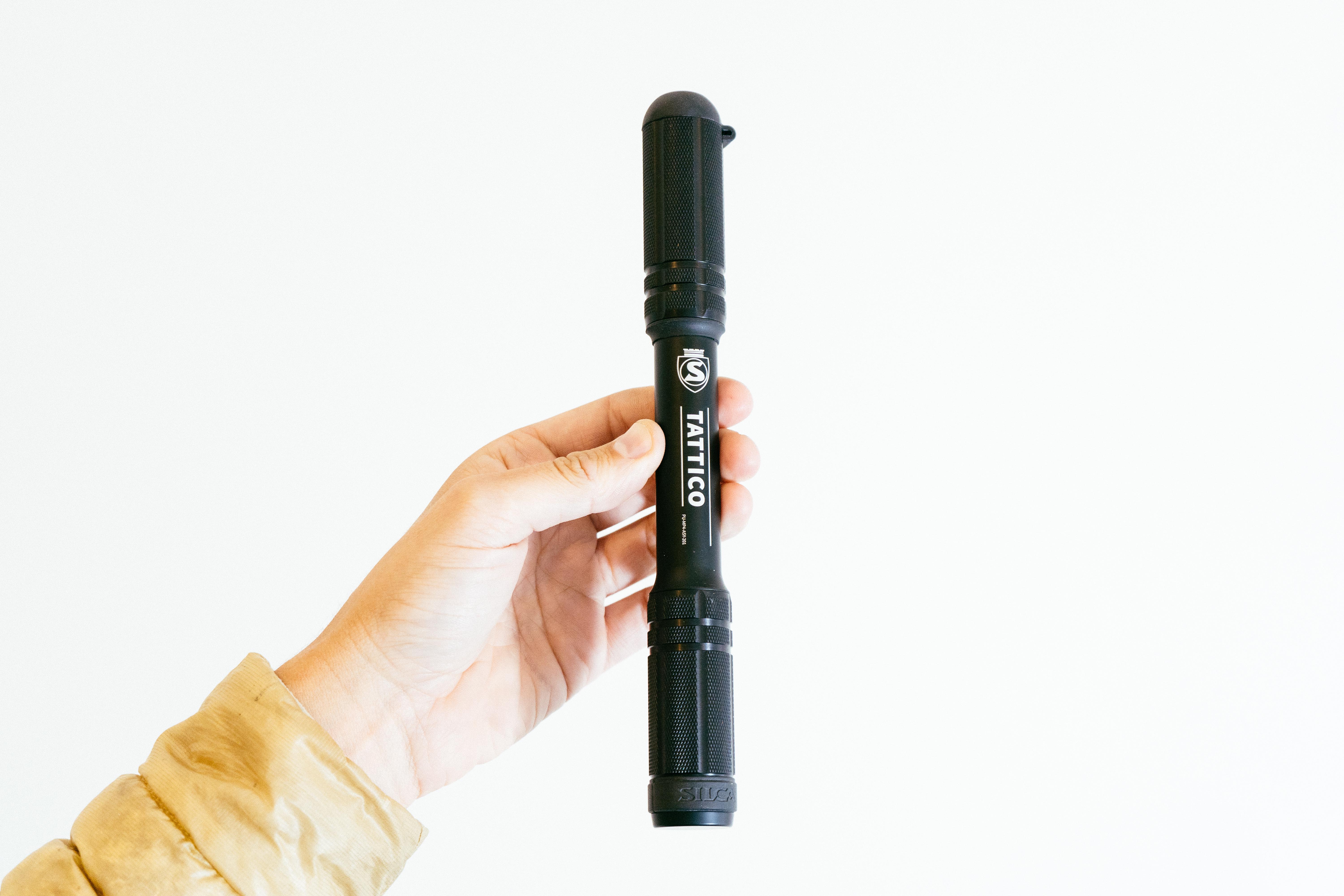
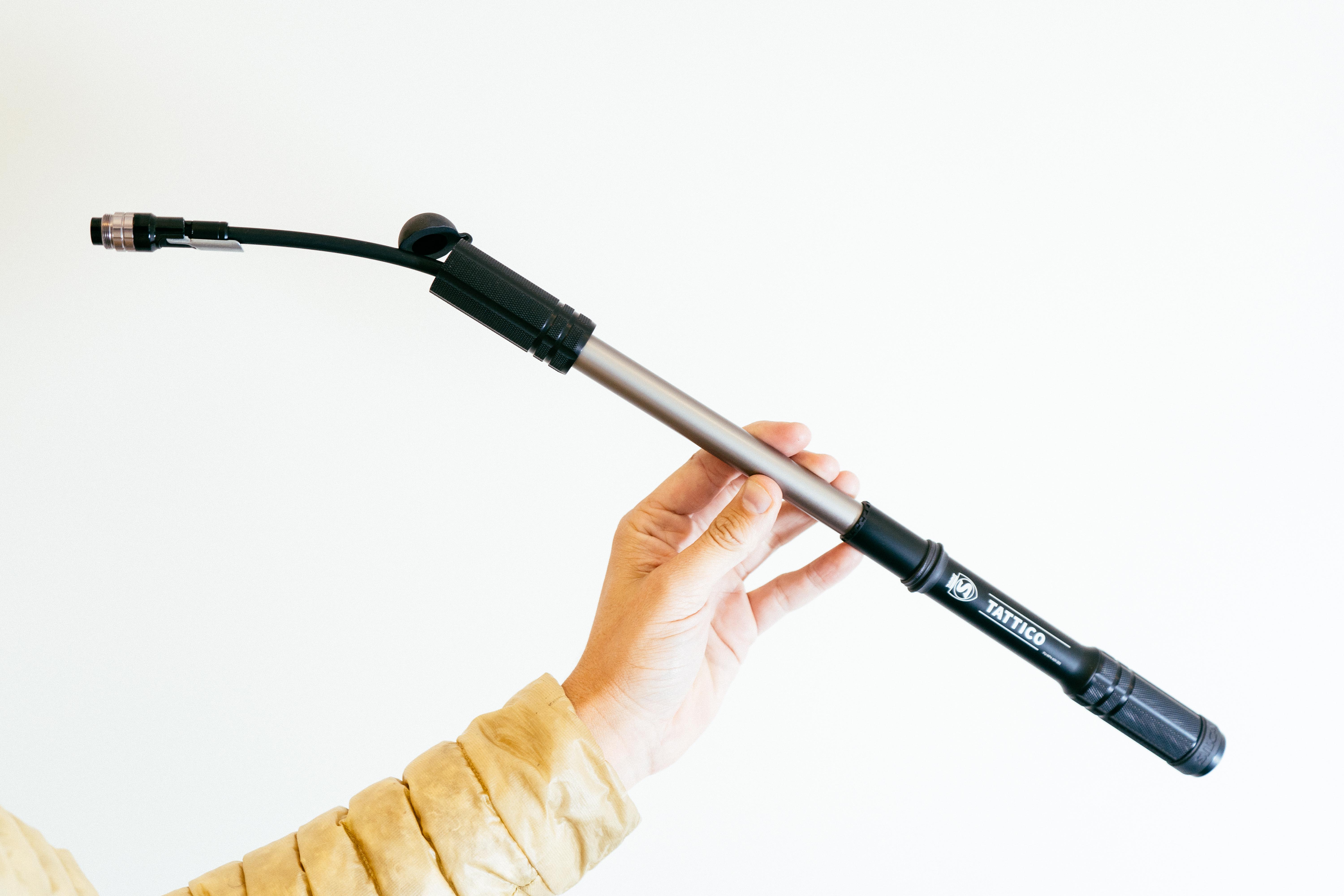
5. Silca Tattico
Specifications
Reasons to buy
Reasons to avoid
✅ You want a pump you can pass onto your grandkids: The Tattico is built to last. The quality of construction is beautiful, and it'll stand up to abuse time and again.
✅ You want a bigger pump, but don't want a frame pump: It's somewhere between the size of a 'normal' mini pump and a frame pump, so you get additional capacity whilst still just about being able to fit it in your pocket.
❌ You're on a budget: It is five times the price of the cheapest pump in this guide, so certainly not one for those watching the purse strings.
❌ You want a super compact setup: It is the largest of the mini pumps in this guide, and the largest I've come across. It'll just about fit in a jersey pocket, but I prefer to keep it in my frame bag.
Existing somewhere between normal size mini pumps and full sized frame pumps is the Silca Tattico. It's large, relatively weighty, and in a riot situation could be used as a weapon more than any other mini pump in this list.
The additional size makes it an absolute breeze for road tyres, and for larger gravel tyres it does perform better than all but a proper frame pump (or a larger size CO2 canister). The inbuilt hose is totally rattle free, with a locking head, and the knurled grip on both the head end and the handle end means it's easy to use even in the rain.
It does come with a frame mount, which includes a well executed rubber strap to keep things contained, but I normally just chucked it in a frame bag out of the way on my gravel bike. It is definitely big enough to have an aero impact if it's on your downtube.
It's the nicest to use of all the mini pumps, beautifully made, and gets up to decent pressures as well as having volume enough to not take forever for gravel sized rubber - why not say it's the best overall then? Well, it has an RRP of £70/$70, which is a lot for an item that hopefully you'll rarely have to use.
If you want the best of everything, and don't mind the size and weight penalty, then this is about as good as mini pumps get, but if you just want something that'll get you home in the event of an unfortunate deflation then you can very easily get something smaller and cheaper and lighter and you'll be just fine.
Lightest
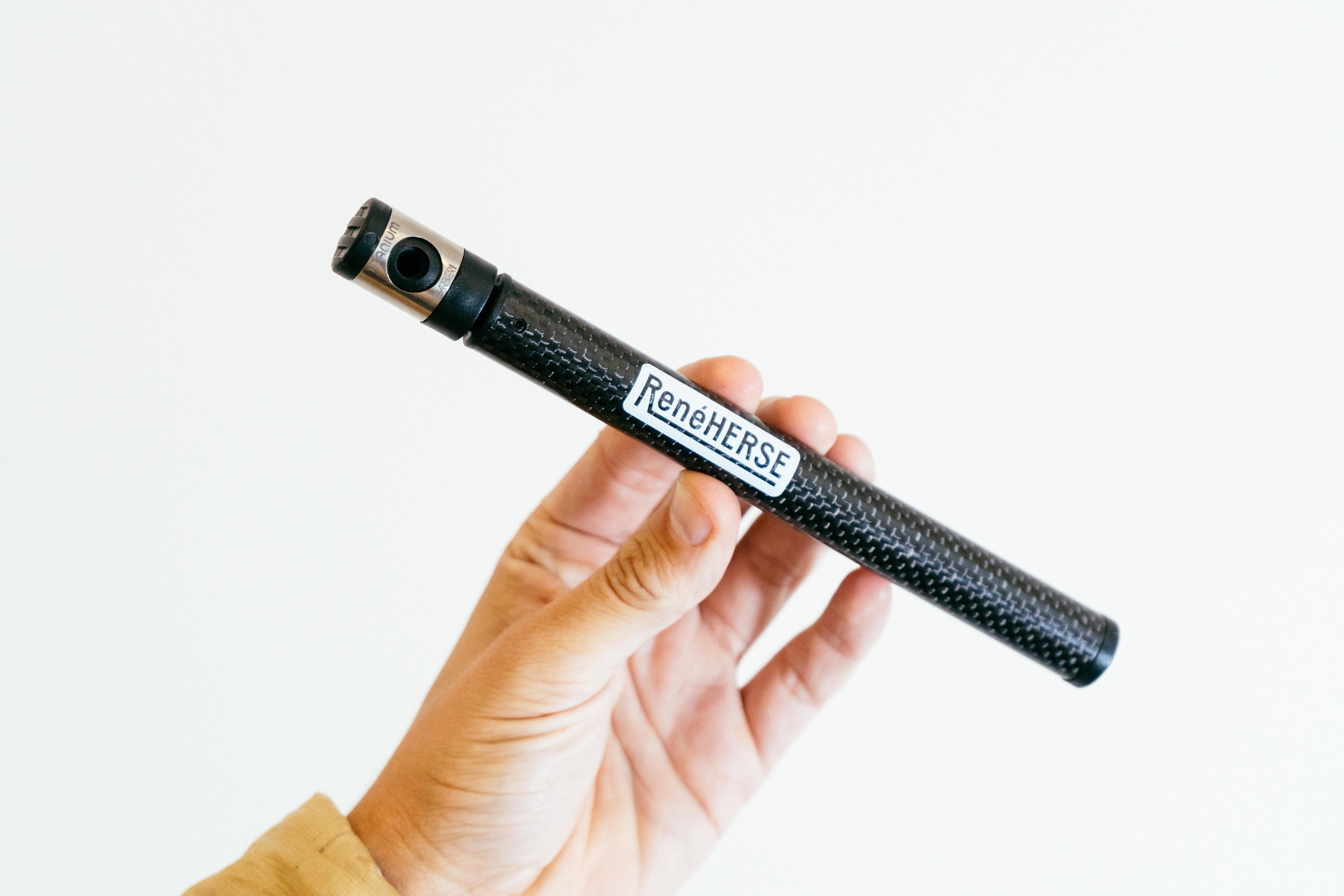
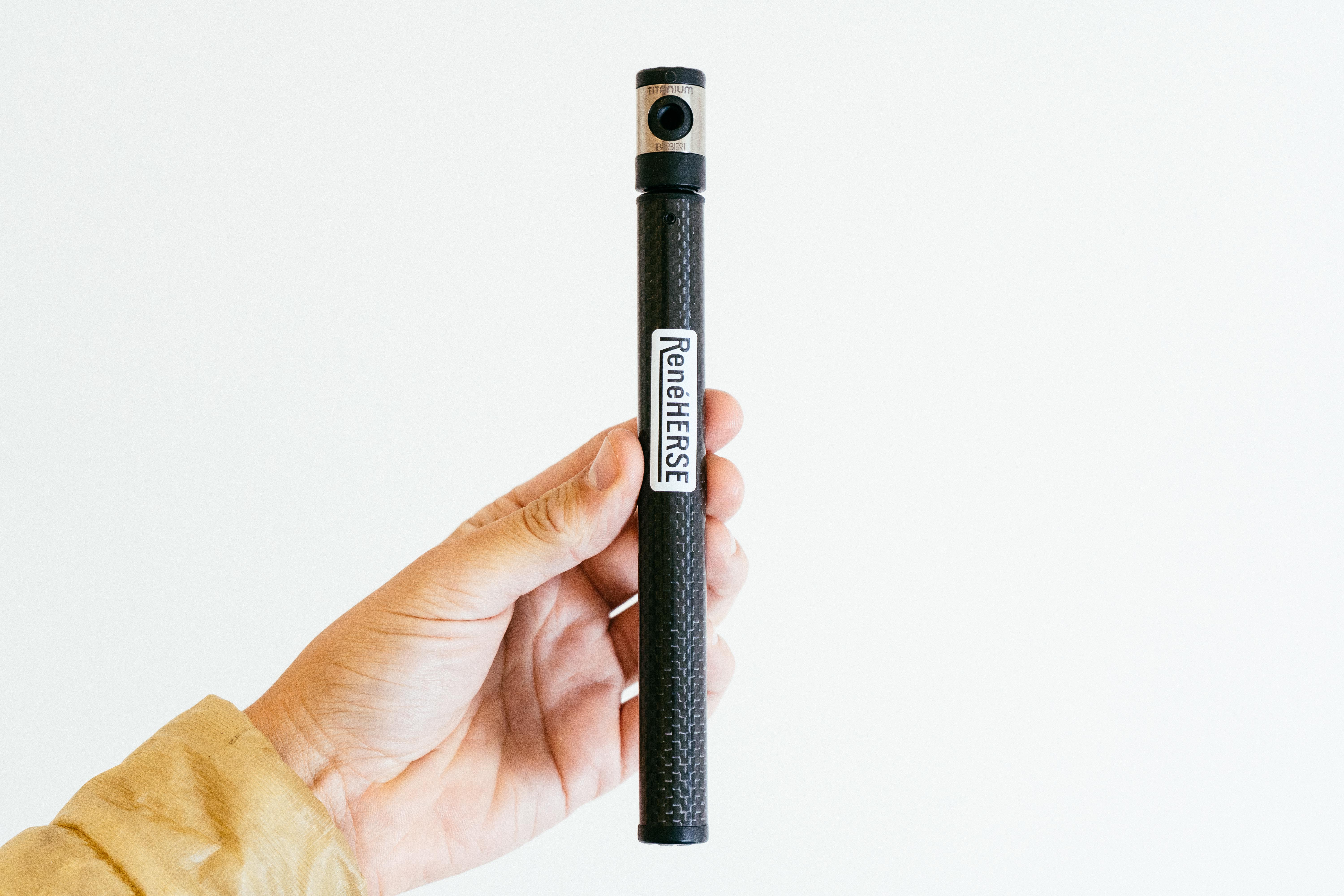
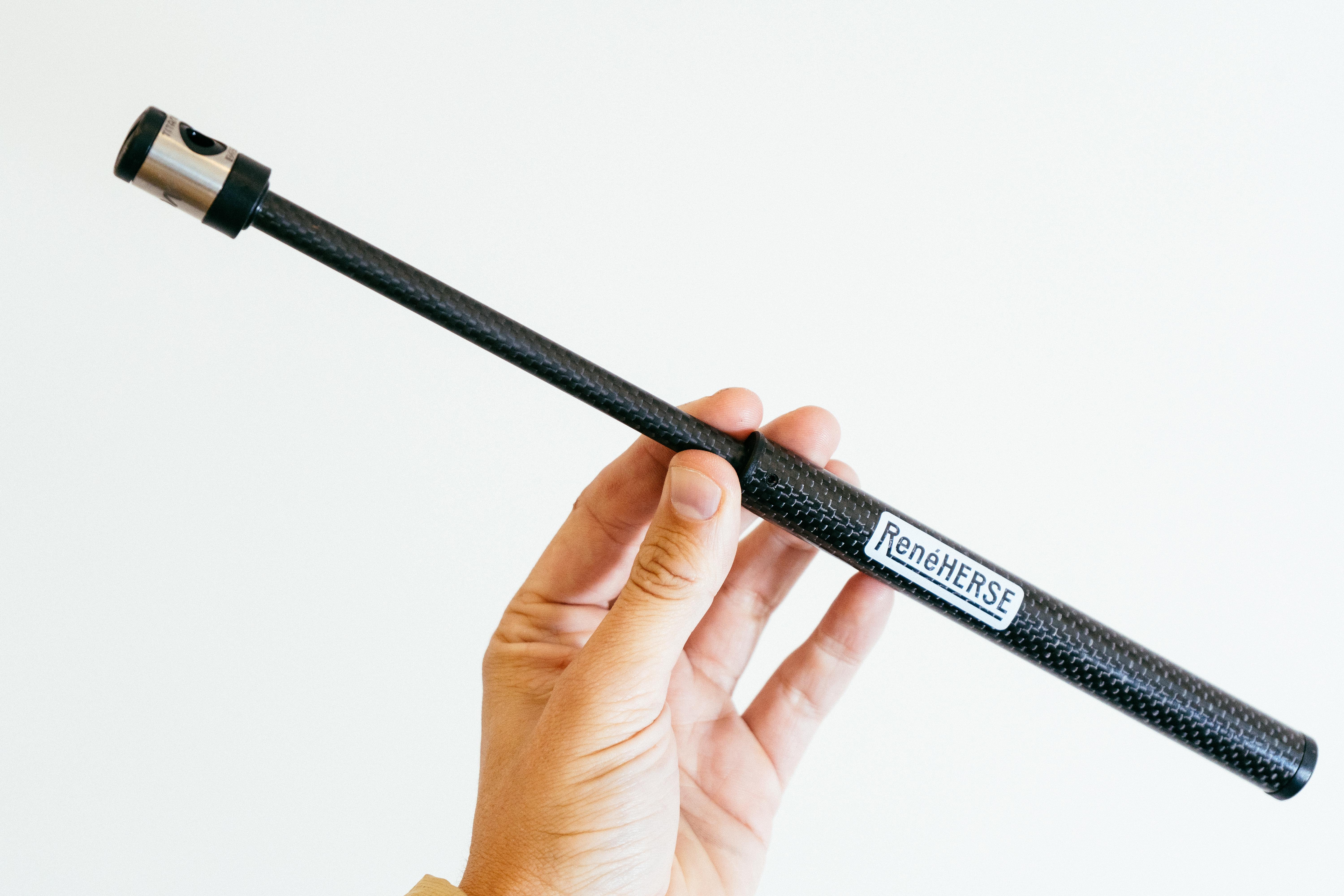
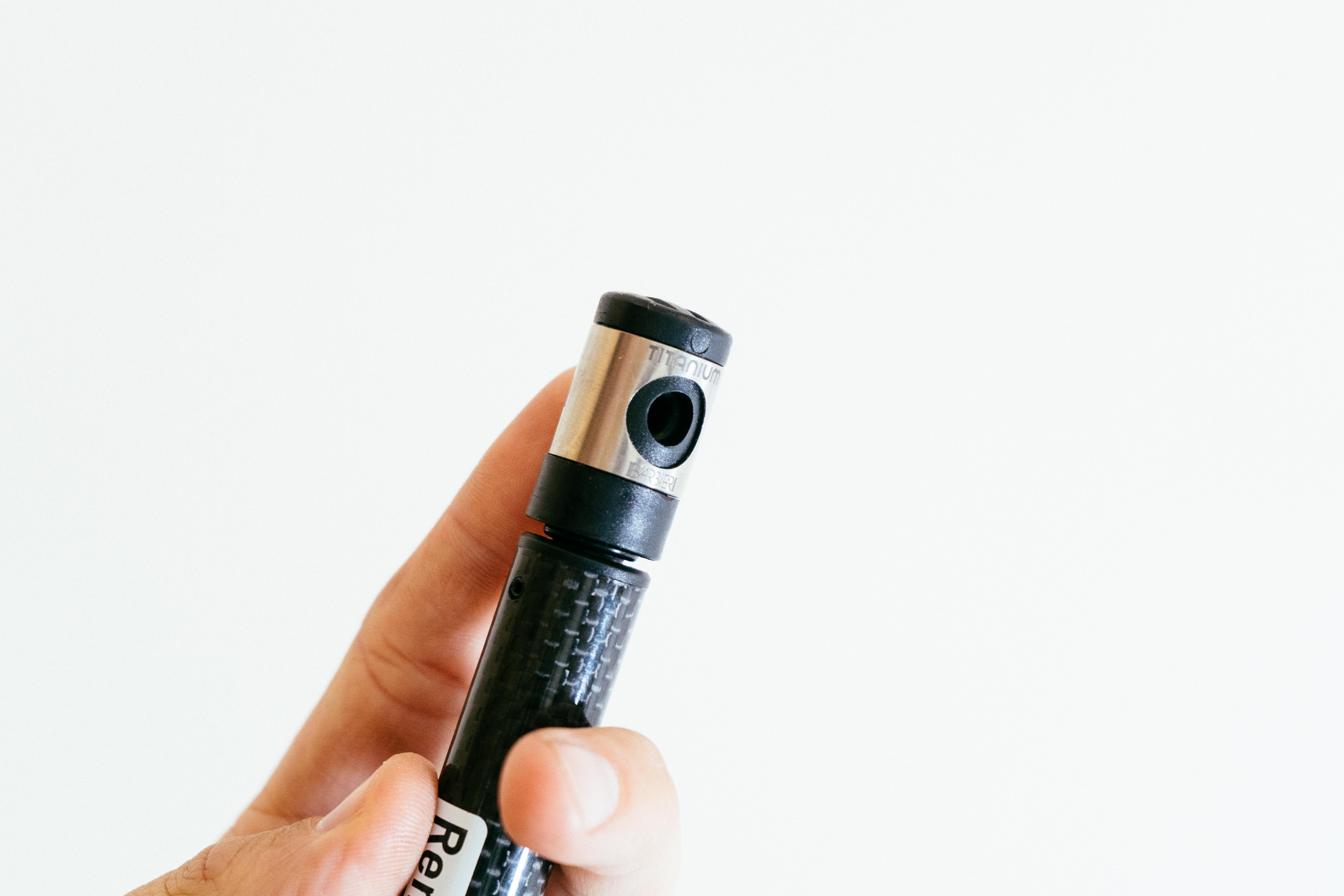
6. René Herse Nuda
Specifications
Reasons to buy
Reasons to avoid
✅ You're a gram counting maniac: It's incredibly lightweight, thanks to its carbon and titanium construction.
✅ You're riding speedy gravel: While it looks like a road pump it doesn't do so well for high pressures. For gravel, if you're a weight weenie off roader, it does well enough though.
❌ You want to reach road pressures: I'm afraid it can't get up to the pressures of a normal road tyre easily. Stick to large volume tyres.
❌ You're hard on your gear: I am not one of those people that automatically things all carbon is flimsy, but this isn't going to resist proper abuse like something like the Silca Tattico.
Ok, this isn't actually the very lightest, as René Herse does make a smaller version of this pump, but as I'll get into I don't recommend you buy that one even if you are a super weight weenie.
The Nuda is entirely made, save for a bit of injection moulded plastic and a few O-rings, from carbon fibre and titanium. As such it's incredibly light, so if having the lowest system weight possible is your thing then it's the one to go for. Considering the weight and construction it actually has a pretty reasonable price tag too.
Why not recommend the even smaller one, then, the Nana? Well, the Nuda is light, yes, but it does struggle to get up to proper road pressures. I wouldn't recommend taking it road riding, but it will get to gravelly pressures much more easily. As such I value the longer stroke of the Nuda, delivering higher volumes of air for larger rubber. The seal also isn't great, making higher pressures harder - You'll not get near the stated max pressure I'm afraid.
That low weight also means there's no hose, so brace the head when using to protect the valve. The added frame mounts are minimalist, as you'd expect, and the head features a titanium sleeve which can be rotated to keep muck out of the valve hole so you can mount it to your frame without worrying about clogging.
Smallest
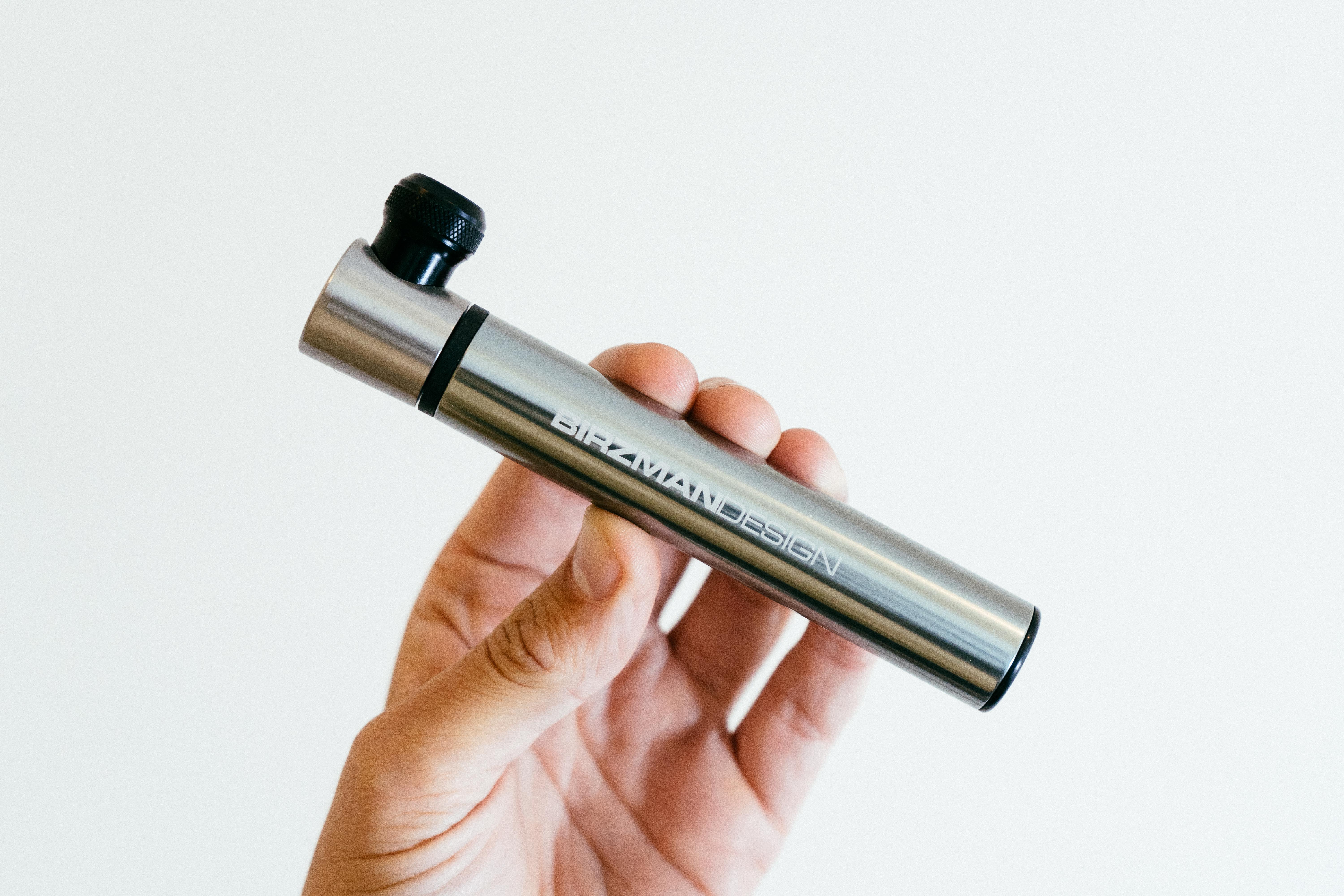
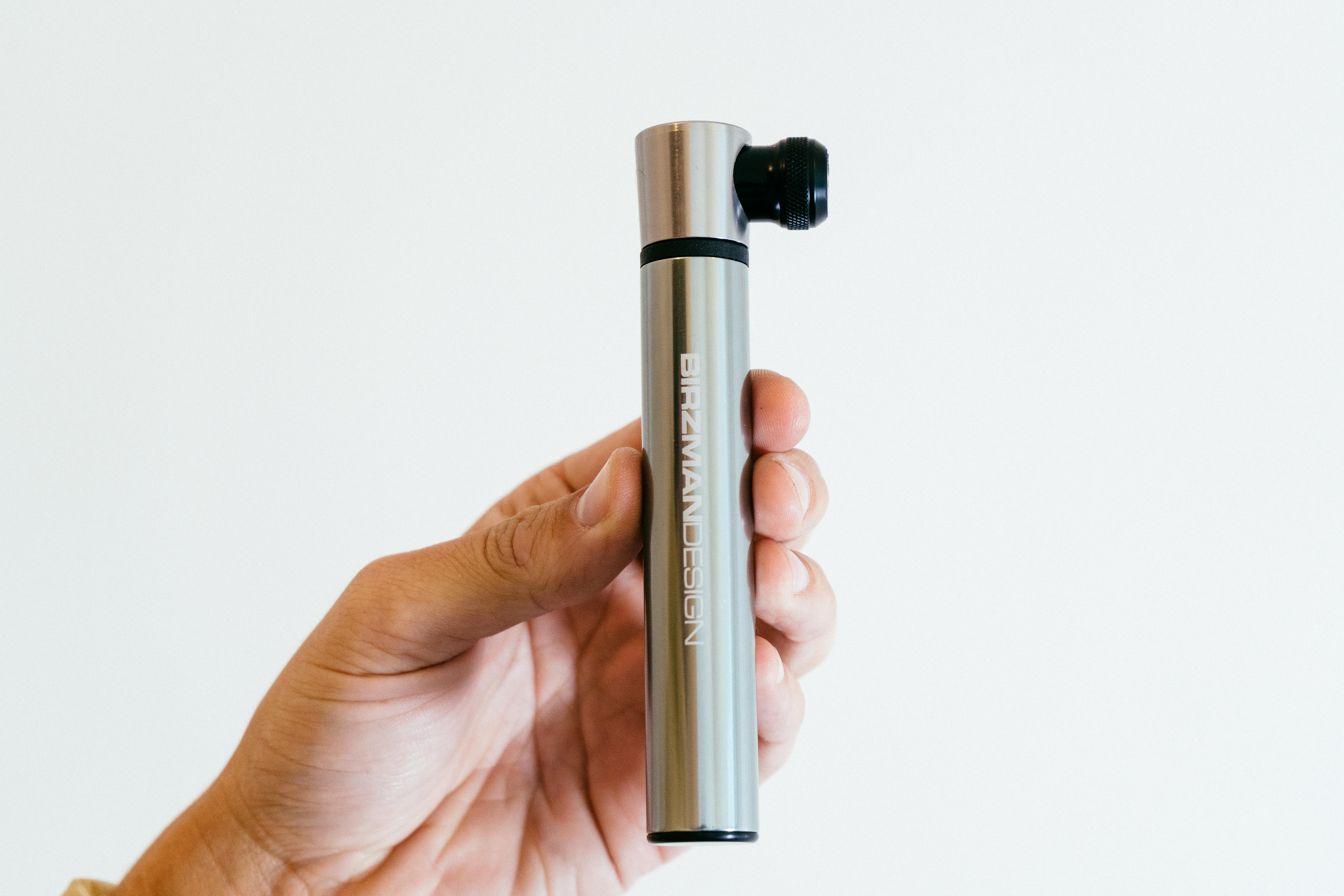
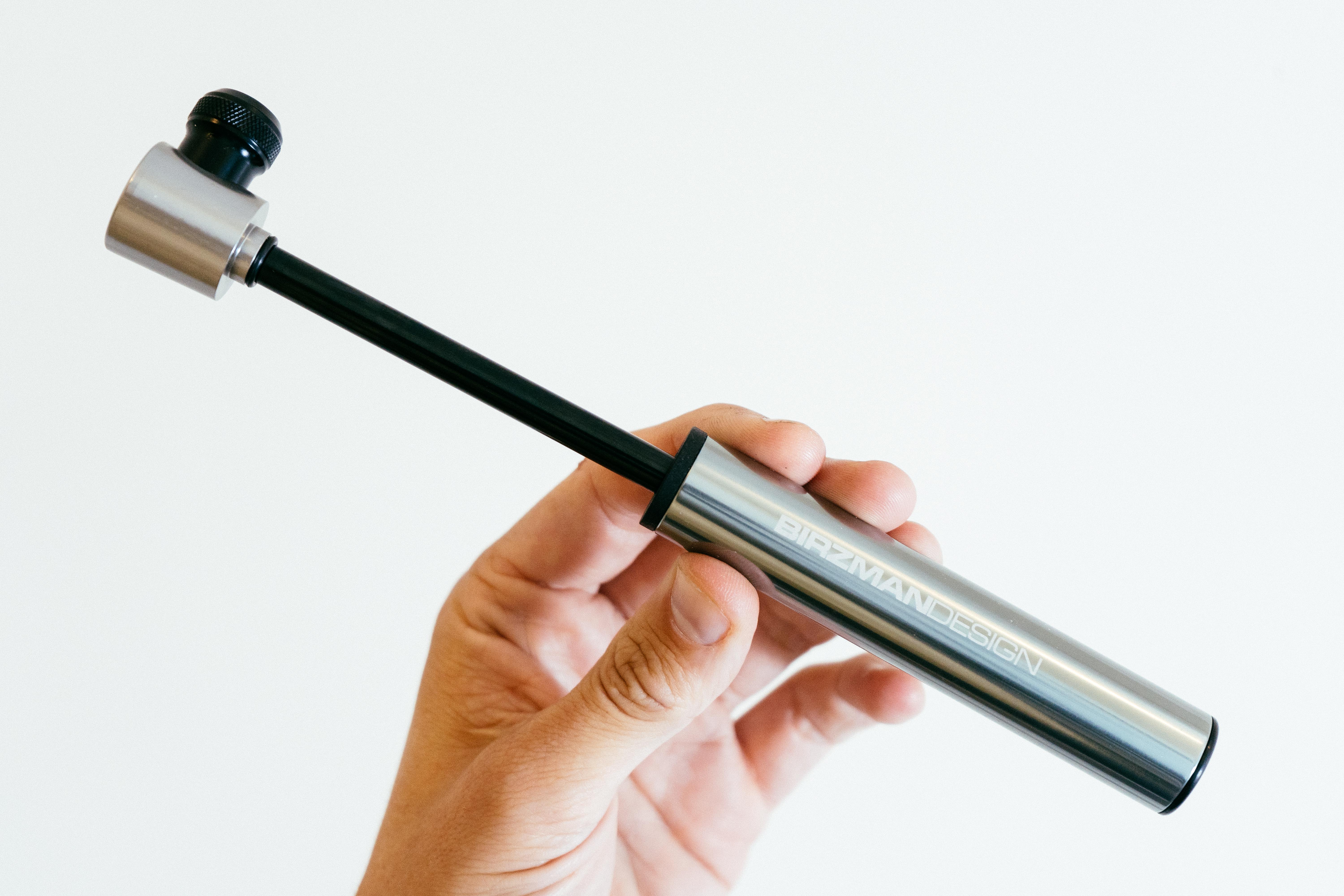
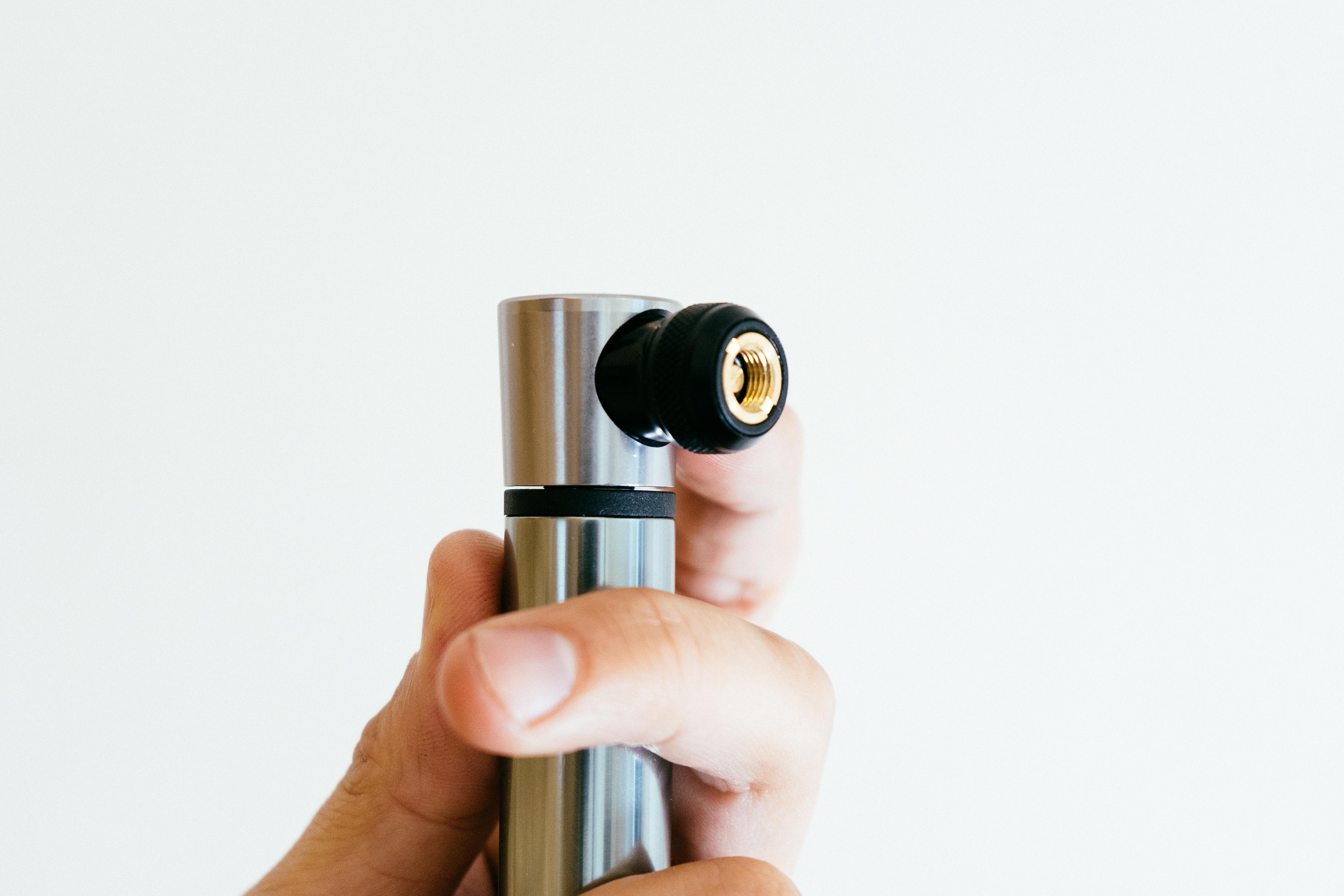
7. Birzman Mini-Apogee
Specifications
Reasons to buy
Reasons to avoid
✅ You want to keep your pump in a saddle bag: Mine lives in my saddlebag for my weekly hills ride in the city.
✅ You want unencumbered pockets: In a pocket this is about as unobtrusive as pumps get, taking up about the same space as a big gel.
❌ You want to get to full pressure: It'll get you home, but you likely won't be riding at your desired pressure, just whatever you can get to before giving up.
❌ You want to pump up fast: The tiny form of the Mini-Apogee means pumping with it at any sort of speed is a frenetic affair.
My Birzman Mini-Apogee has taken up permanent residence in the saddlebag of my inner city hill climb bike. It's small enough to just about fit in most of the saddlebags from my colleague Tom's guide to the best bike saddlebags, and if a clean aesthetic for your bike is your thing then it's great in this regard.
I have had to use it a few times in emergencies, and while it does the job well enough to get me home it isn't going to match the top-end pressure of a frame pump, or even something like the Lezyne Pressure Drive.
It's a little larger in diameter than the René Herse Nuda, and so delivers a similar amount of air despite being shorter. The head is a 90º setup too, with no hose, so again you need to watch how you brace the valve. Where it beats the Nuda in terms of useability is in its lockable head. Press the head onto the valve, and slide a metal ring down over the head to lock it in place to create a decent seal. It even has 'UNLOCKED' written on it so you know if you've done it right.
It's not the best at pumping, but there's more to pumps than pumping however mad that sounds. I do value the tiny form factor in some situations, and there's a lot to be said for having the sleekest, most uncluttered bike you can have, and this is a great way to help that endeavour. It takes a bit of time to get a good seal from a total flat situation, but once you do get a bit of air in things quickly improve.
Best floor pump for travel
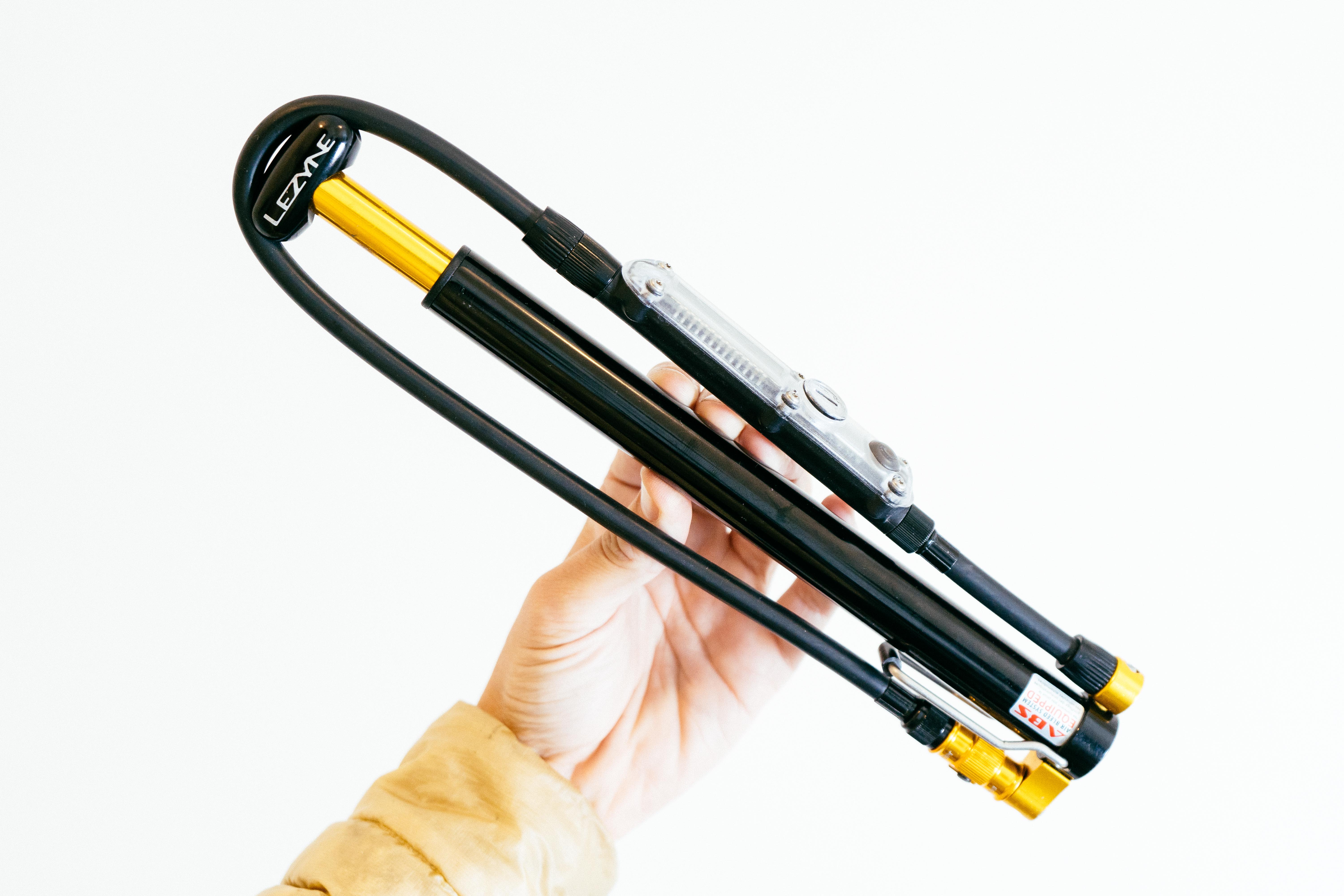
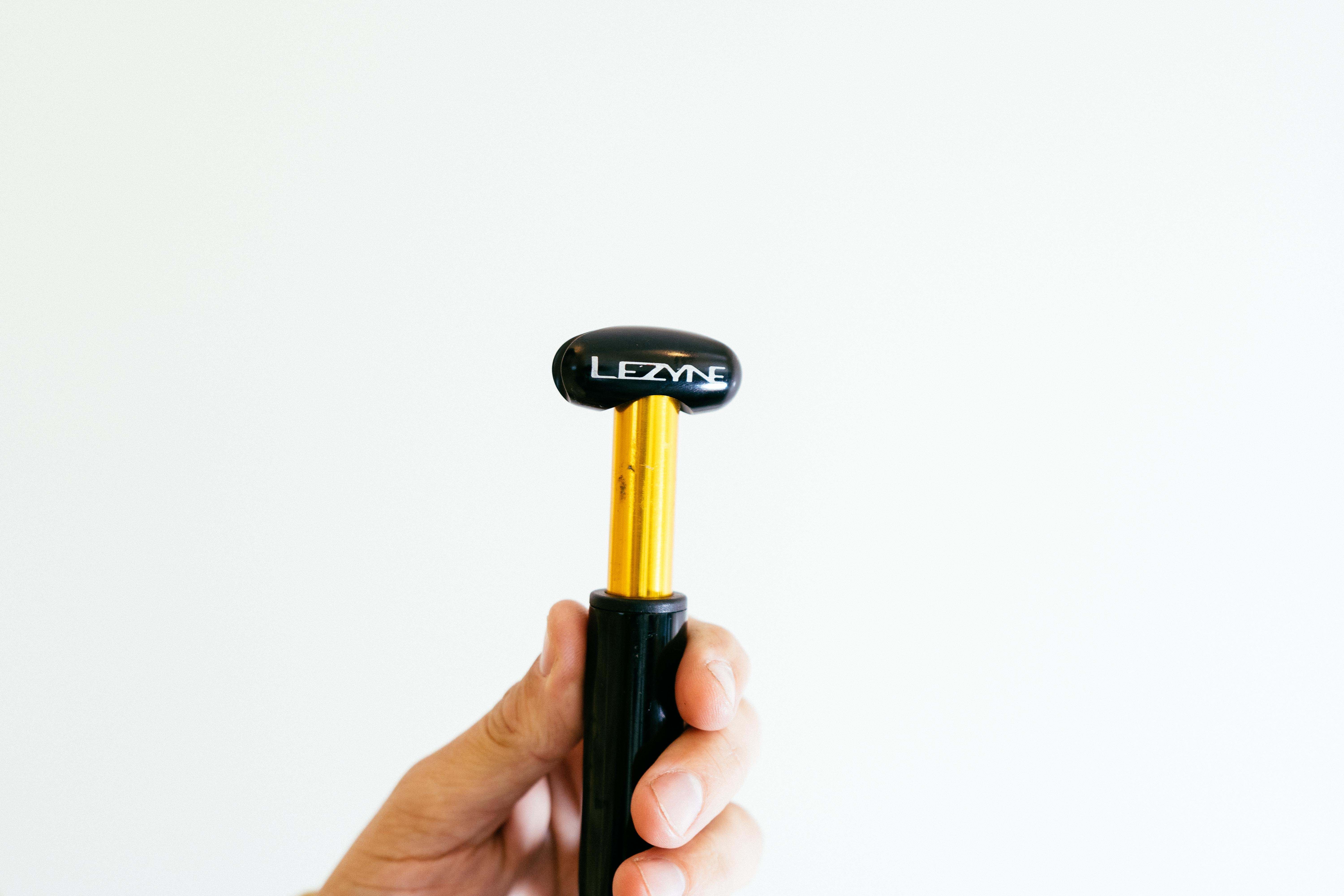
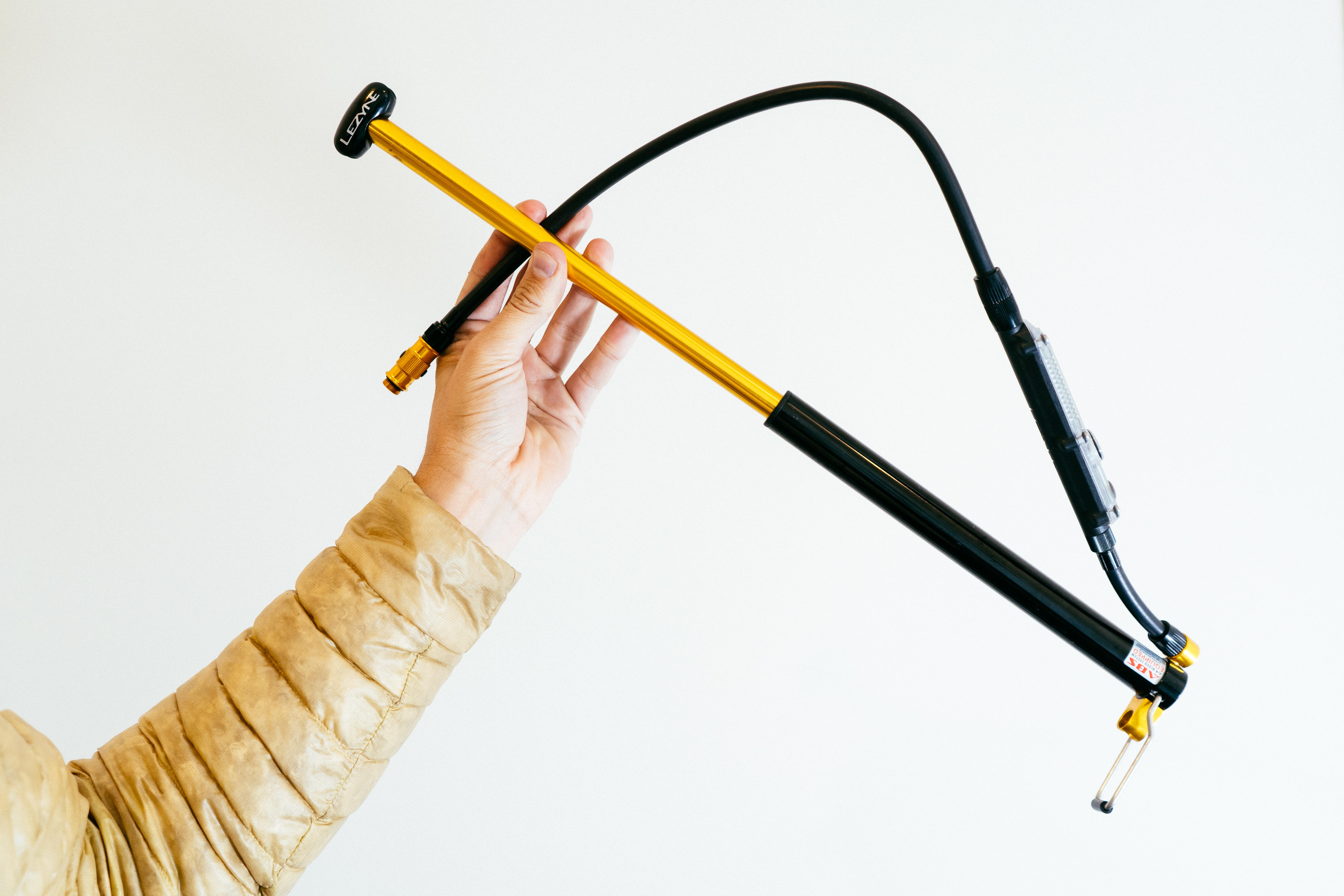
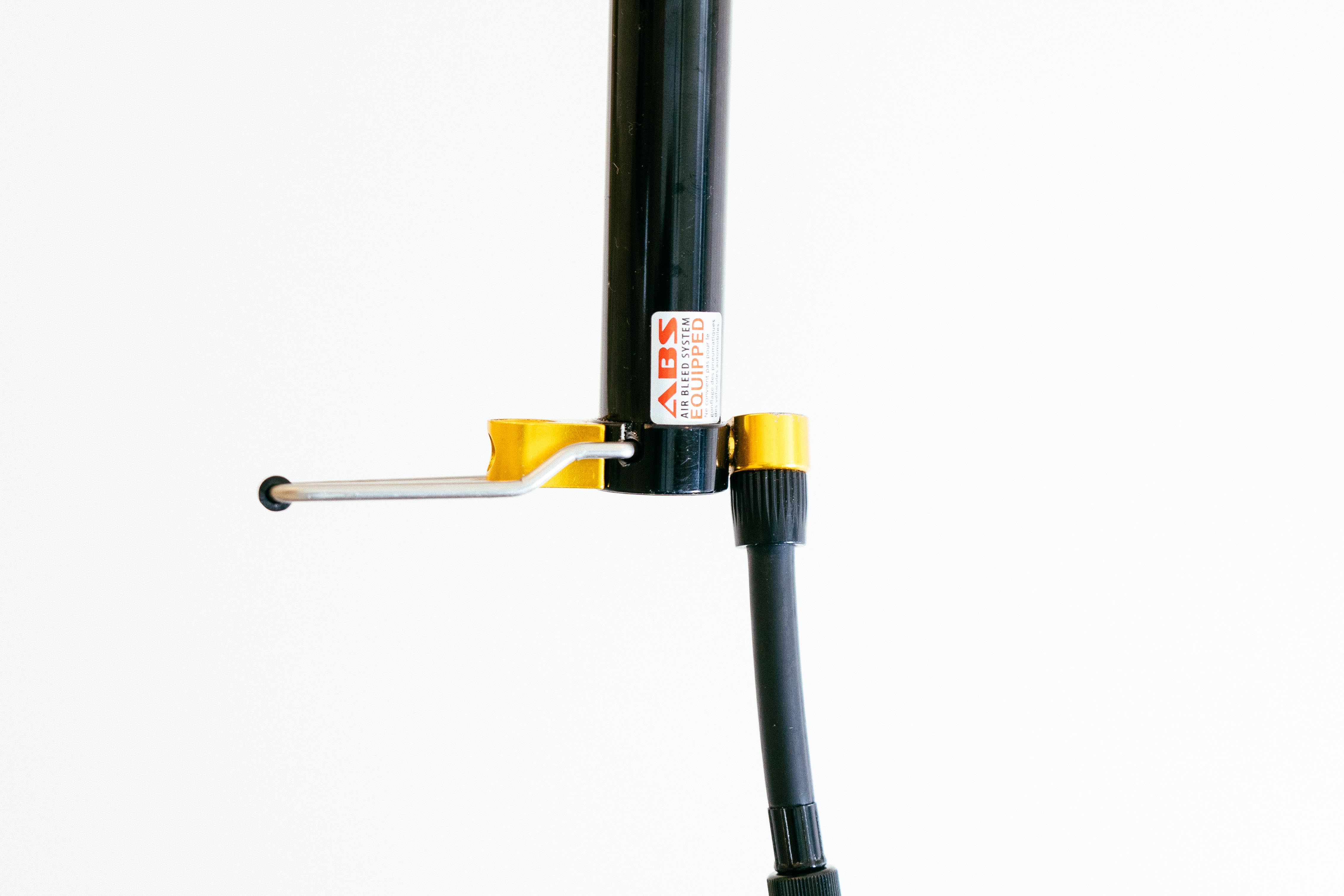
8. Lezyne Micro Floor Drive Digital HPG
Specifications
Reasons to buy
Reasons to avoid
✅ You want the ease of a track pump: By pressing down into the ground rather than sideways you can reach higher pressures than just about anything other than a track pump.
✅ You want to reach higher pressures: As the head screws on as per any other Lezyne pump you can focus on pumping, not bracing the valve. A better connection means higher pressures.
❌ You like to pack light: It's bigger and heavier than most pumps in this guide.
❌ You want a quick fire pump: Unscrewing the head, flipping the leg out and getting all set up is a lot slower than some mini pumps, or frame pumps.
This is a perfect option for touring, bikepacking, and bike travel in general as I'll get into shortly.
The trick here is to not think of the Lezyne Digital Micro Floor Drive as a mini pump, but instead as a miniaturised track pump. Unscrew the head which keeps the pump handle secure va the hose, flip out the foot pad, screw the head onto the valve for a perfect connection, foot on the foot pad, and pump away into the ground rather than sideways. You can easily reach road pressures, and if you get one like this with a built in pressure gauge you can go on data rather than feel.
Yes, it's bigger, but it's only a little bigger than the Silca Tattico. If you're bikepacking or touring long distance you've likely got more capacity anyway, and you still can mount it to your frame under your bottles; it's big, but what are you doing with that space otherwise?
There is a high-volume version too, if you only use bigger tyres, but if you have both I'd go for the high pressure version. Where I think it really shines is for those bike holidays. Imagine you get to Mallorca with your bike and your tyre is flat. You either have a mini pump that won't get quite the pressure you want, or you go to a bike shop and have to awkwardly buy a gel you don't want to make up for the fact you had to borrow some air. Stick this in your hand luggage instead and you'll be self sufficient from your hotel room from the off.
Best Frame Pump
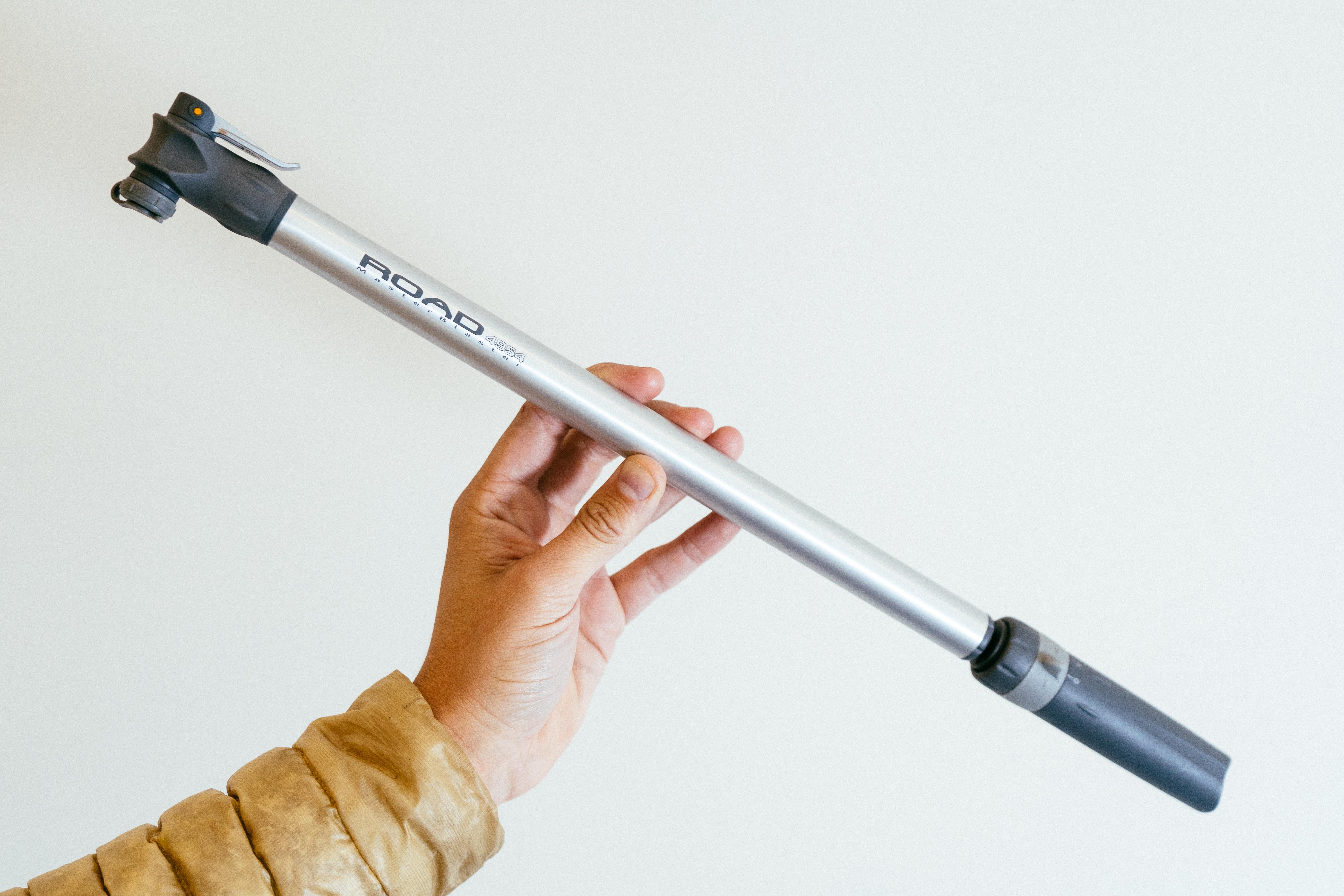
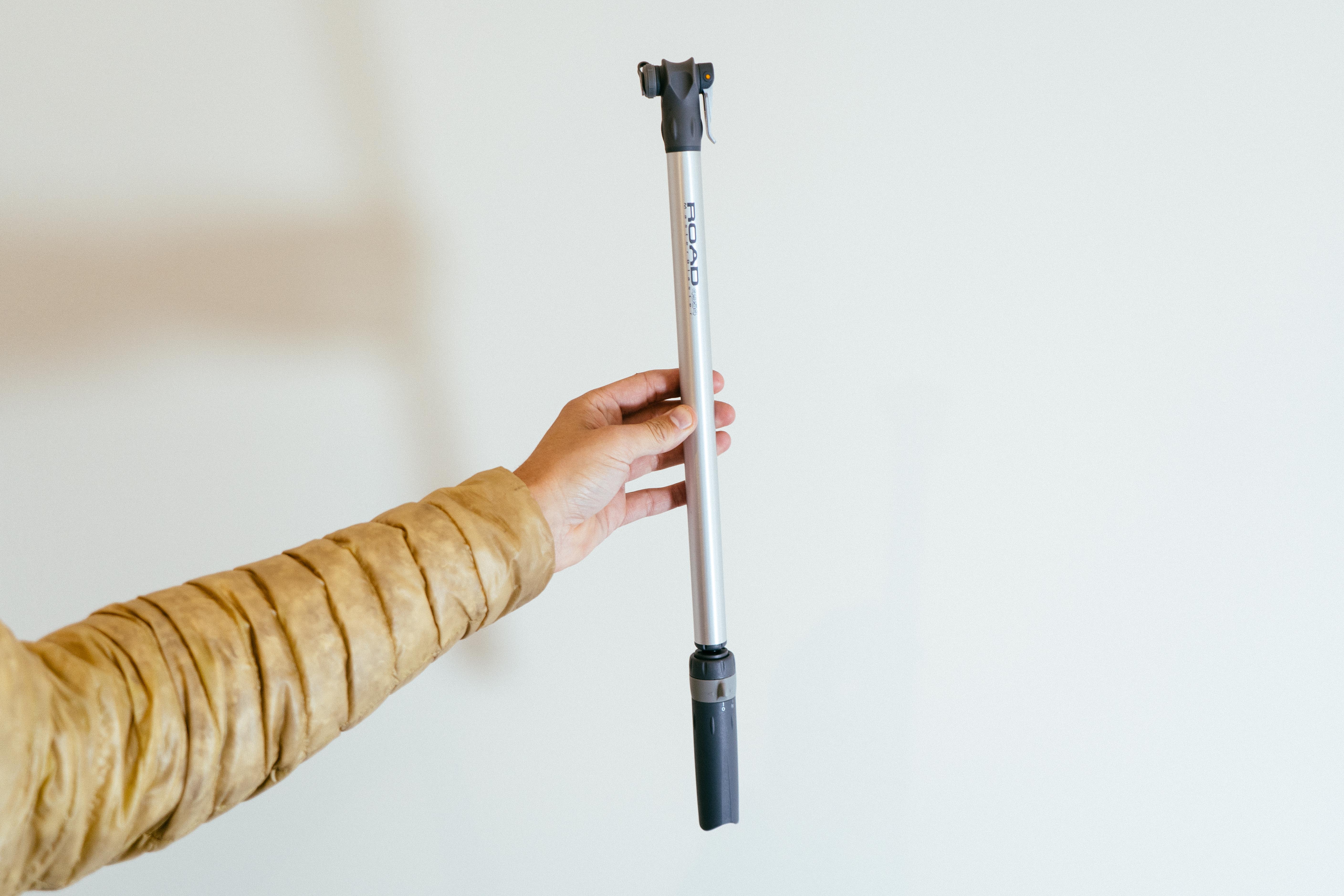
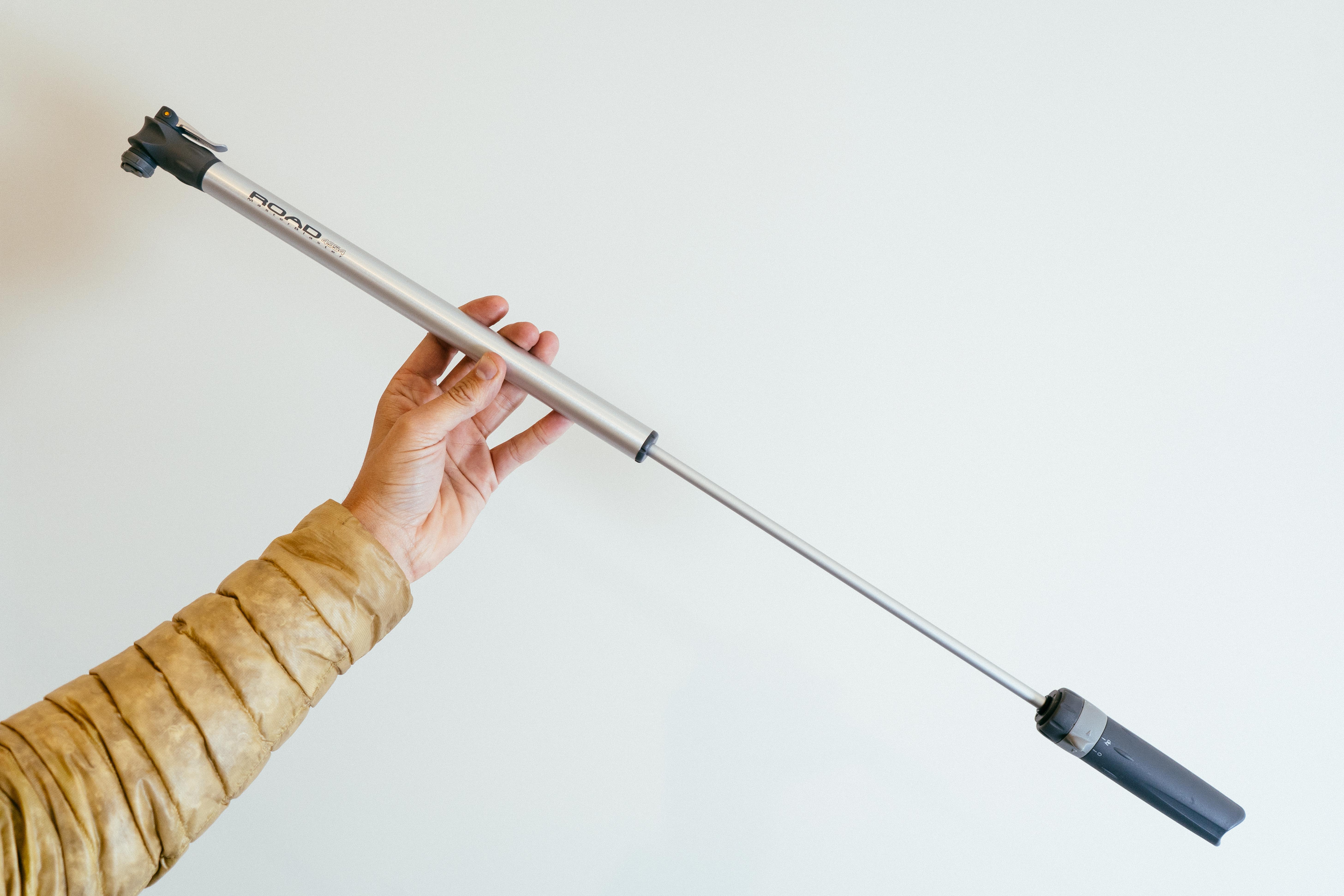
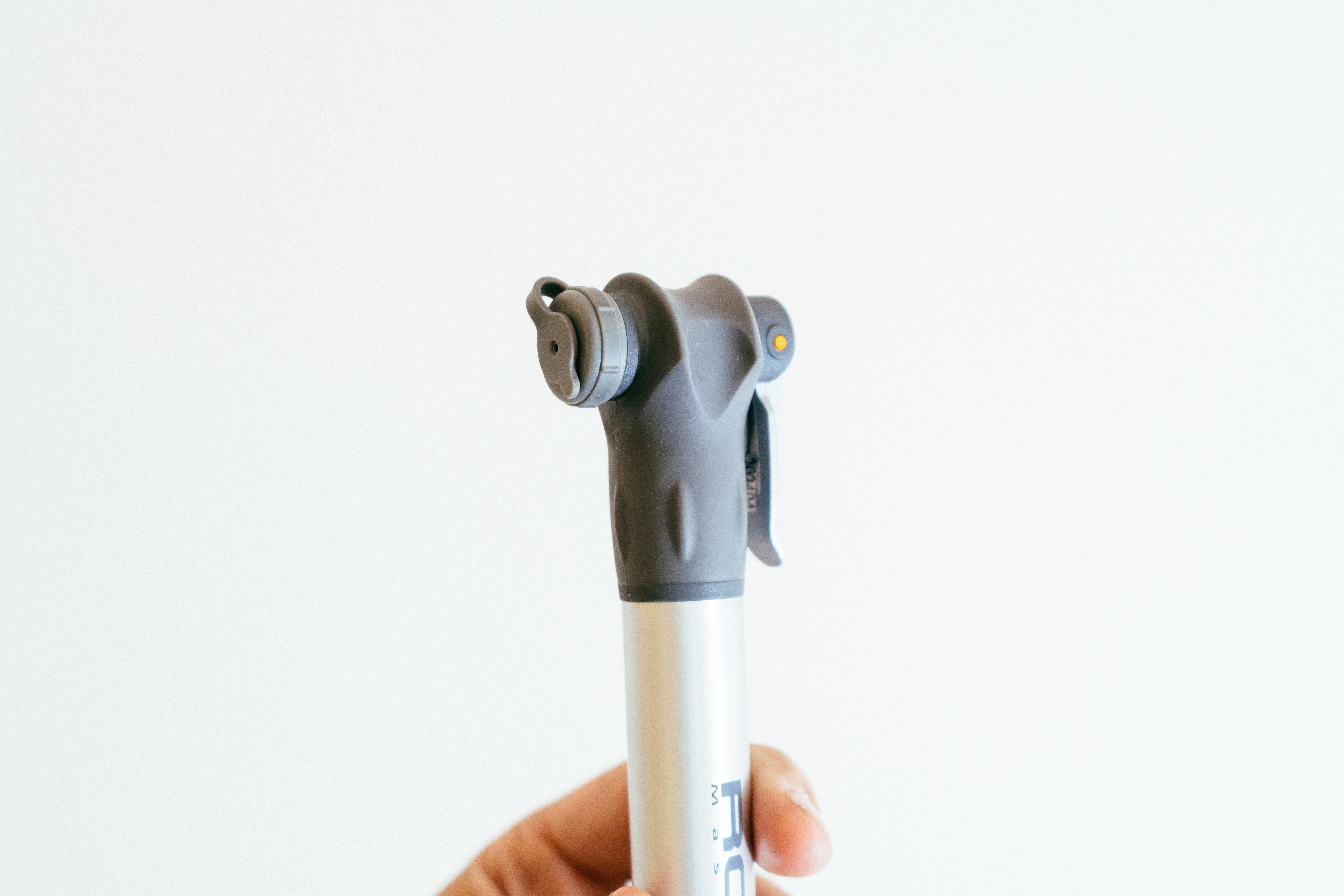
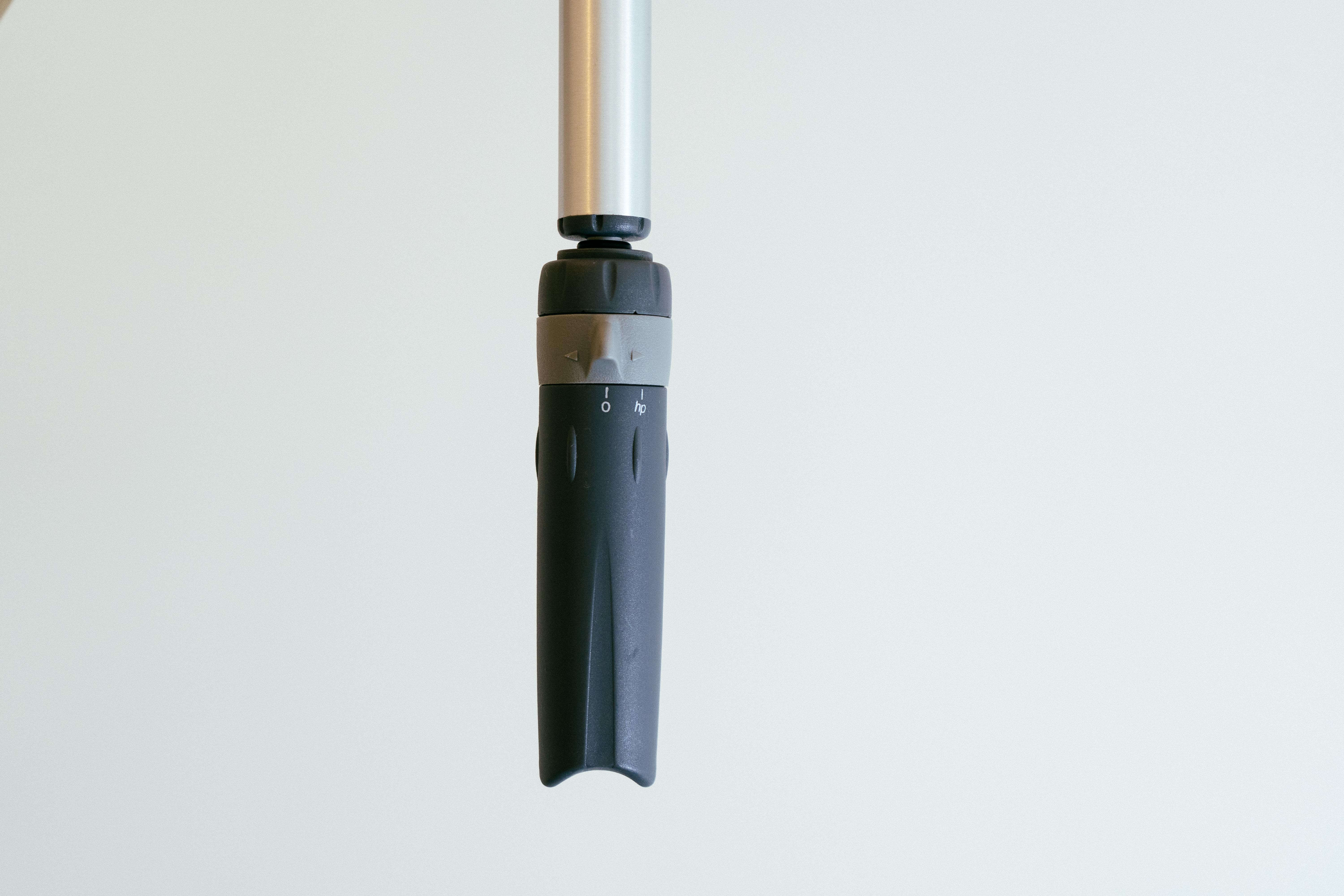
9. Topeak Masterblaster
Specifications
Reasons to buy
Reasons to avoid
✅ You want the easiest roadside inflation option: Frame pumps are bigger, faster, and easier to use than mini pumps.
✅ You want to reach road pressures without CO2: You can get to road pressures pretty easily, especially with the high pressure switch engaged.
❌ You want a light setup: As frame pumps are 2-3 times bigger than mini pumps they're not going to win the grams competition.
❌ Your bike has a curved top tube: Frame pumps do work best with classic, round tubes. Modern frame shapes on carbon race bikes may not play nicely.
I'm a big fan of a frame pump. I tend to use them more in the winter than the summer, mostly because when it's freezing I just want to fix a flat as fast as possible before I get chilled. In the summer, basking in the sun, an extra few minutes isn't a huge issue, but when your hands are cold the bigger size helps too.
Of the bunch I've tried the Topeak Road Master Blaster fits the best overall billing. Sure, some purists say the Silca Impero is better, and while it is certainly better made and is more easily custom painted to match bespoke frames, it is heavier, a lot more expensive, and not able to reach the pressures the Master Blaster can. Go for an Impero if you're a fashionista (like me, it is what I have on my bike), but the sensible choice is the Topeak version.
The thing I really like about the Master Blaster is the spring that sits within the handle. It buffers the impact when the handle meets the body, and puts far less stress on the valve as such. Then, when you start to struggle and you're only getting inflation at the final bit of the pump stroke you can switch the 'high pressure' switch on, disengage the spring, and add that final bit of pressure. It works really well.
The head is rubberised, but the handle end is hard plastic. Both have indents for pump pegs - little brazed on blobs of steel often seen on vintage bikes to hold a frame pump at both ends - but the included strap helps keep it in place for those without. I'd protect your frame at the handle end though, as it's less kind on paint than the rubberised bumpers at both ends of the Impero.
Best Floor Pump
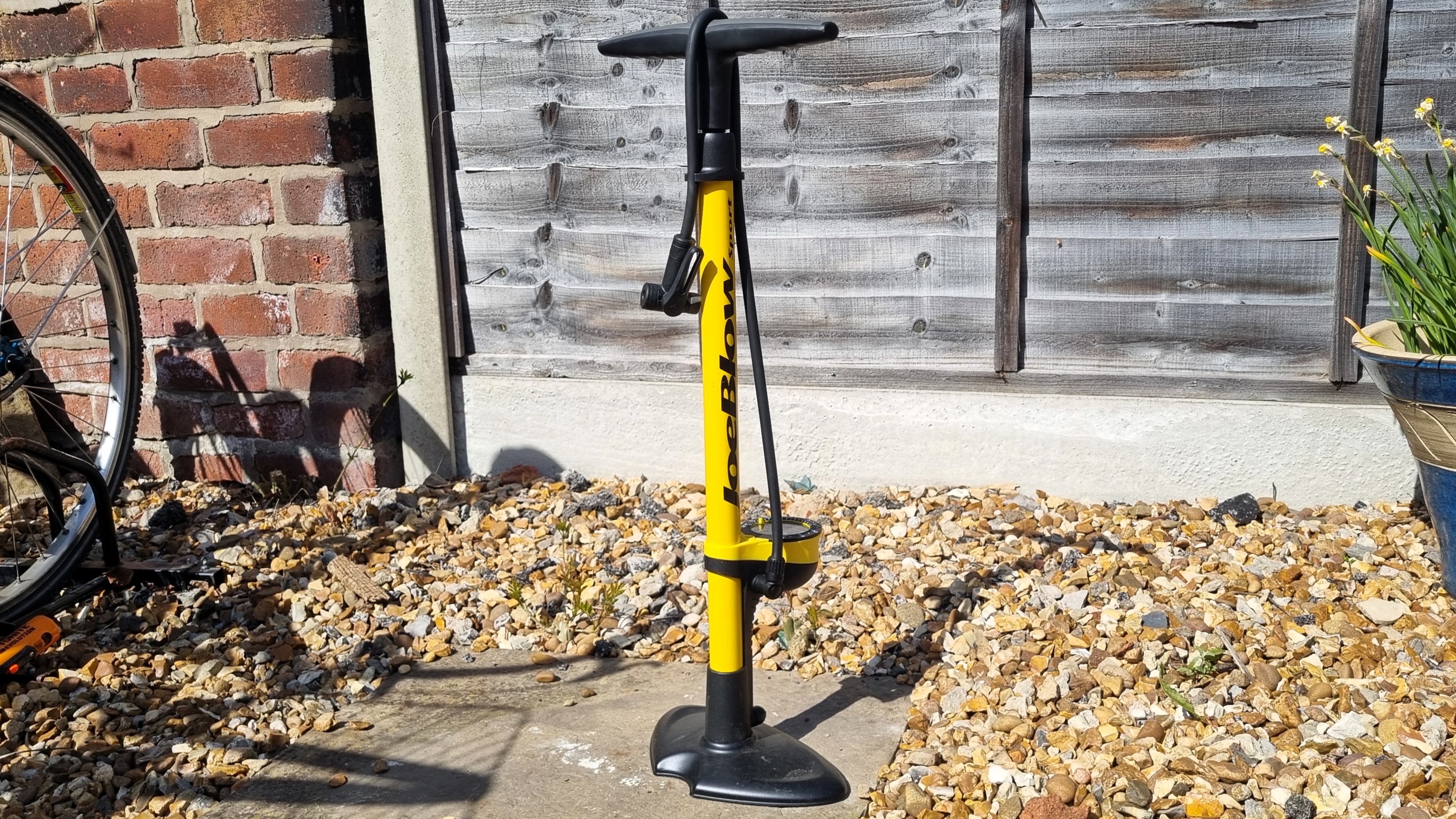
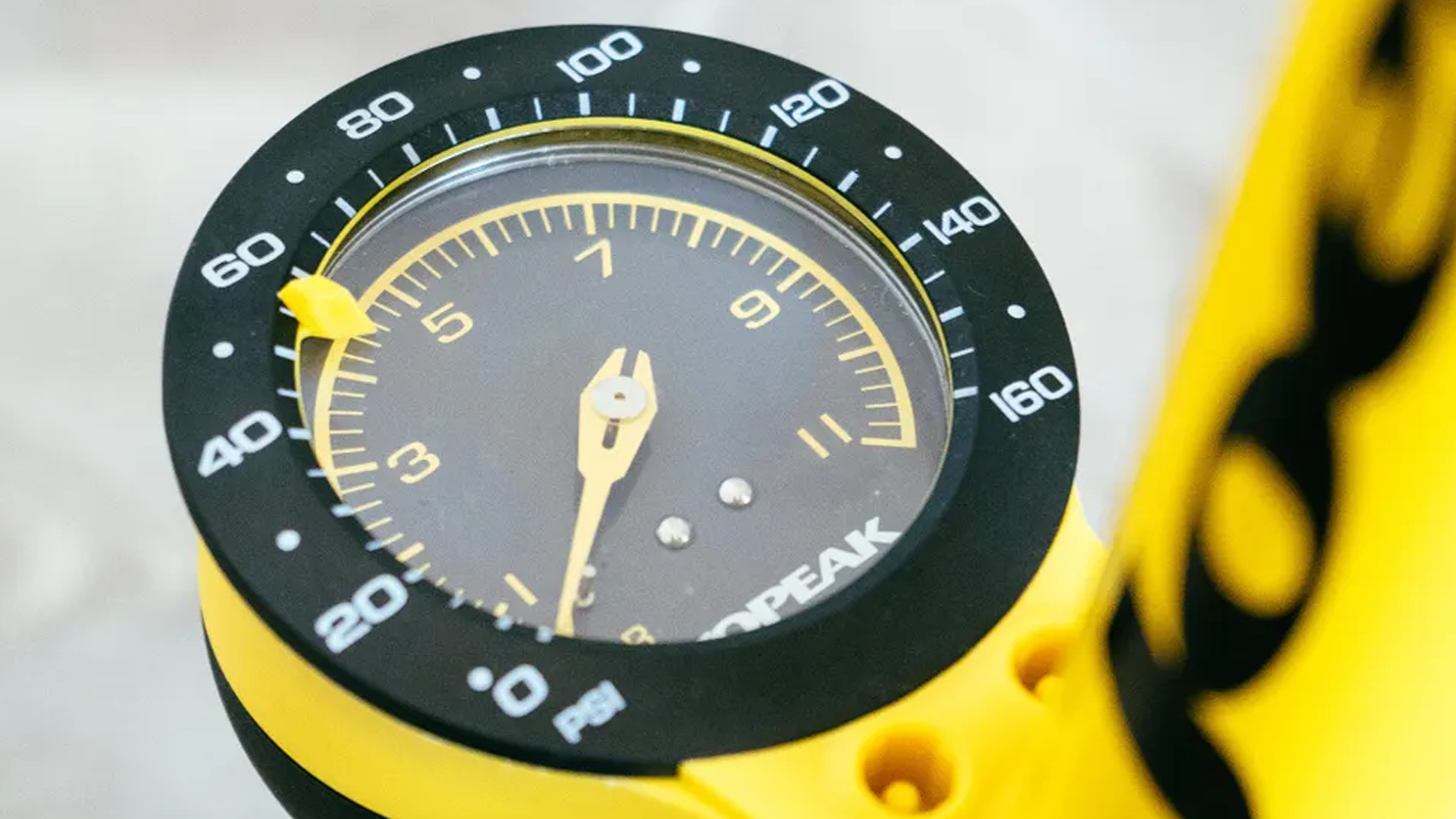
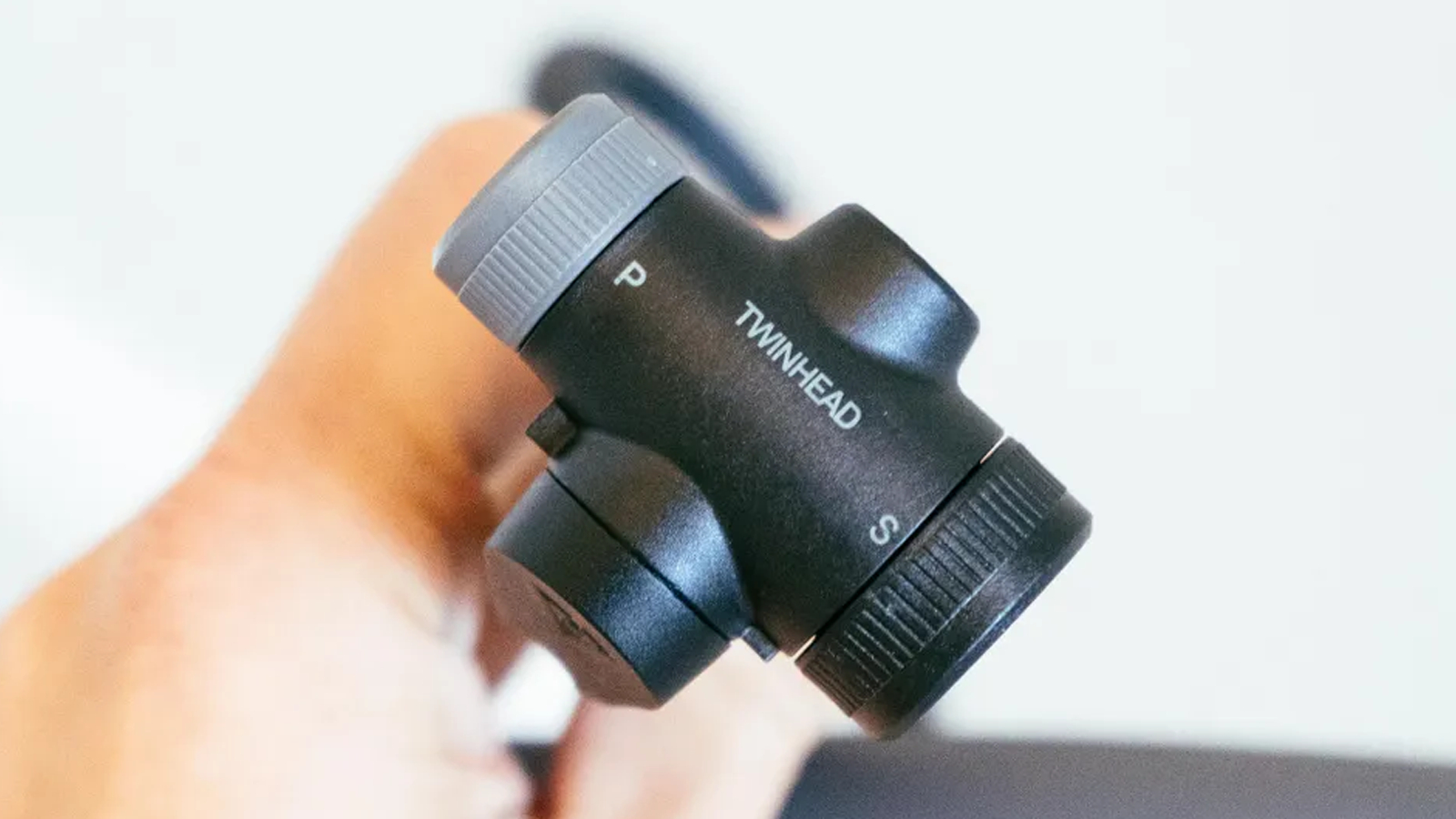
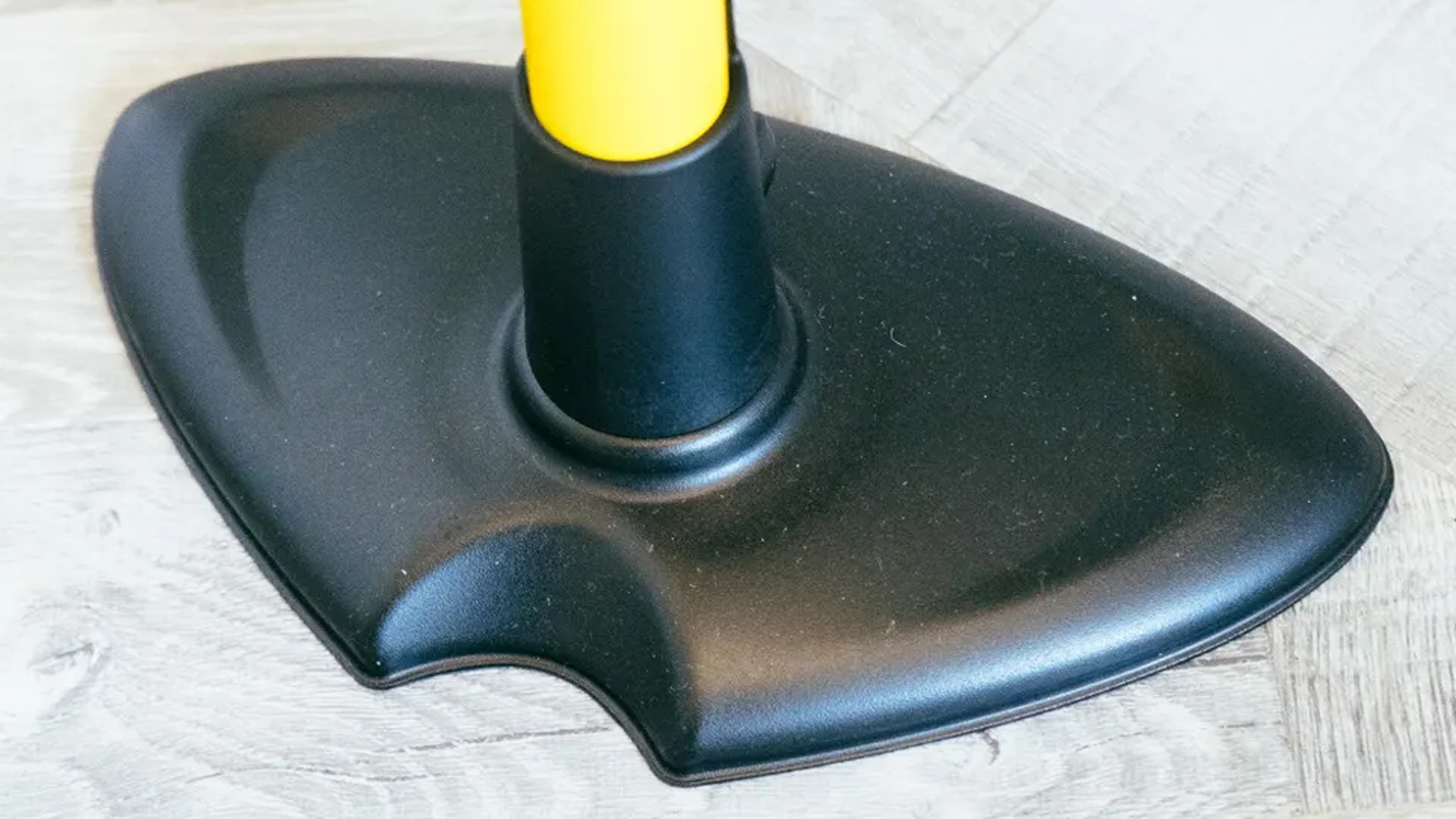
Specifications
Reasons to buy
Reasons to avoid
✅ You want fast and easy workshop pumping: The Joe Blow is the easiest track pump I've used so far. The big base makes it super stable when you're trying to pump a lot of air fast, too.
✅ You don't want to break the bank: Considering I've seen some track pumps priced at nearly £500 / $500, the SRP for the Joe Blow is extremely reasonable.
❌ You want a screw-on valve connection: The quick-lock head isn't quite as secure as a screw on, but it is faster and isn't going to risk unscrewing your valve cores either.
❌ You want fancy materials: The body and base are metal, but the dial, handles, and head are all plastic. The ergonomics are sound, but it doesn't feel particularly premium.
I have an ancient old Lezyne Steel Floor Drive of my own but since having access to the Joe Blow Sport III it's kind of been sidelined to backup duty. The Joe Blow is a little faster, mostly thanks to the head which quickly locks on rather than screwing, and a lot more stable thanks to its wider base.
Floor pump (or track pump, if you'd rather) base stability may sound like a really nitpicking thing to pull out in a review, but when you're trying to get a lot of air in fast for tubeless setups it's surprising how much difference it can make. Also as a taller person, the added height of the Joe Blow also means it's a little kinder on my back.
The handle is plastic, with a grippy top, and the ergonomics are sound even if it does feel a little cheaper than say a lovely rounded wooden handle. The dial is plastic too, but it's large and easy to read, and comes with a handy movable indicator to give you something to aim for.
If you want absolute accuracy then maybe go for something like the Lezyne Steel Digital Drive, but as I found out when testing tyres in a lab, as long as you're in the right ballpark for pressure there's really very little impact on performance, so to my mind an analogue dial is easier to read, more responsive, and perfectly adequate for the general cyclist. If you really care about pressure then just get a standalone pressure gauge - I use the Topeak Shuttle Gauge Digital for this if I ever need to get super accurate.
For more details, check out our full Topeak JoeBlow Sport III review.
Best CO2 Inflator
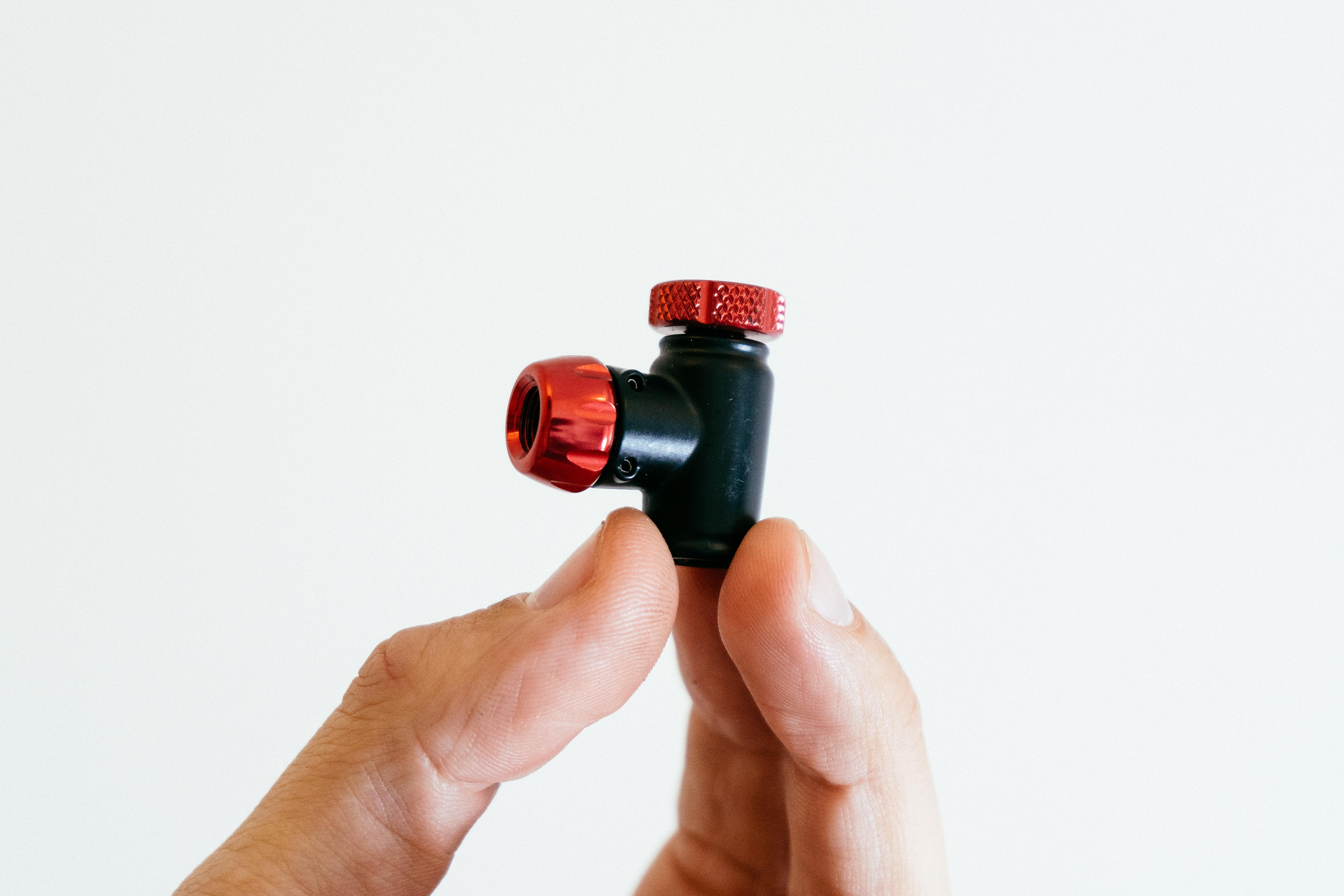
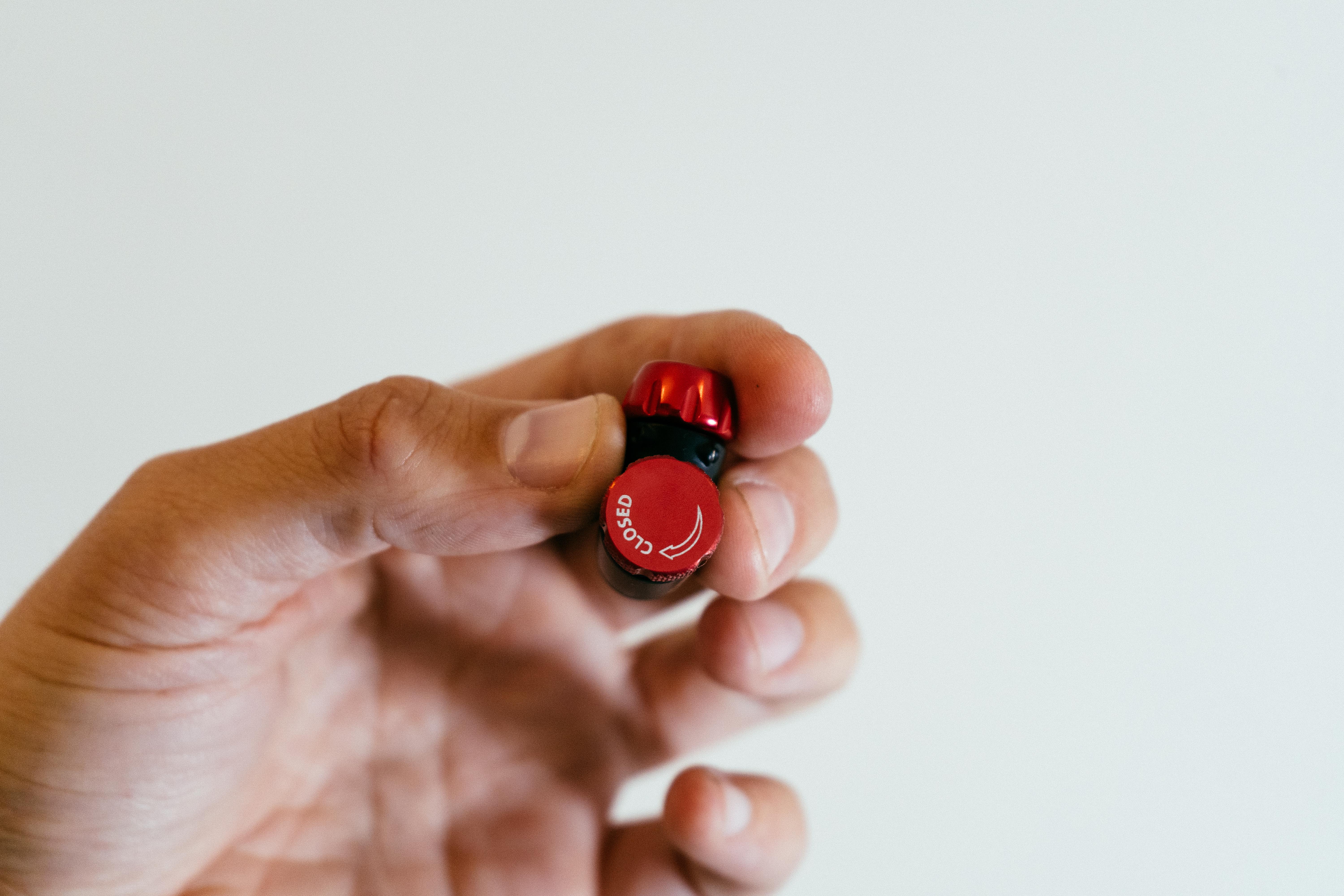
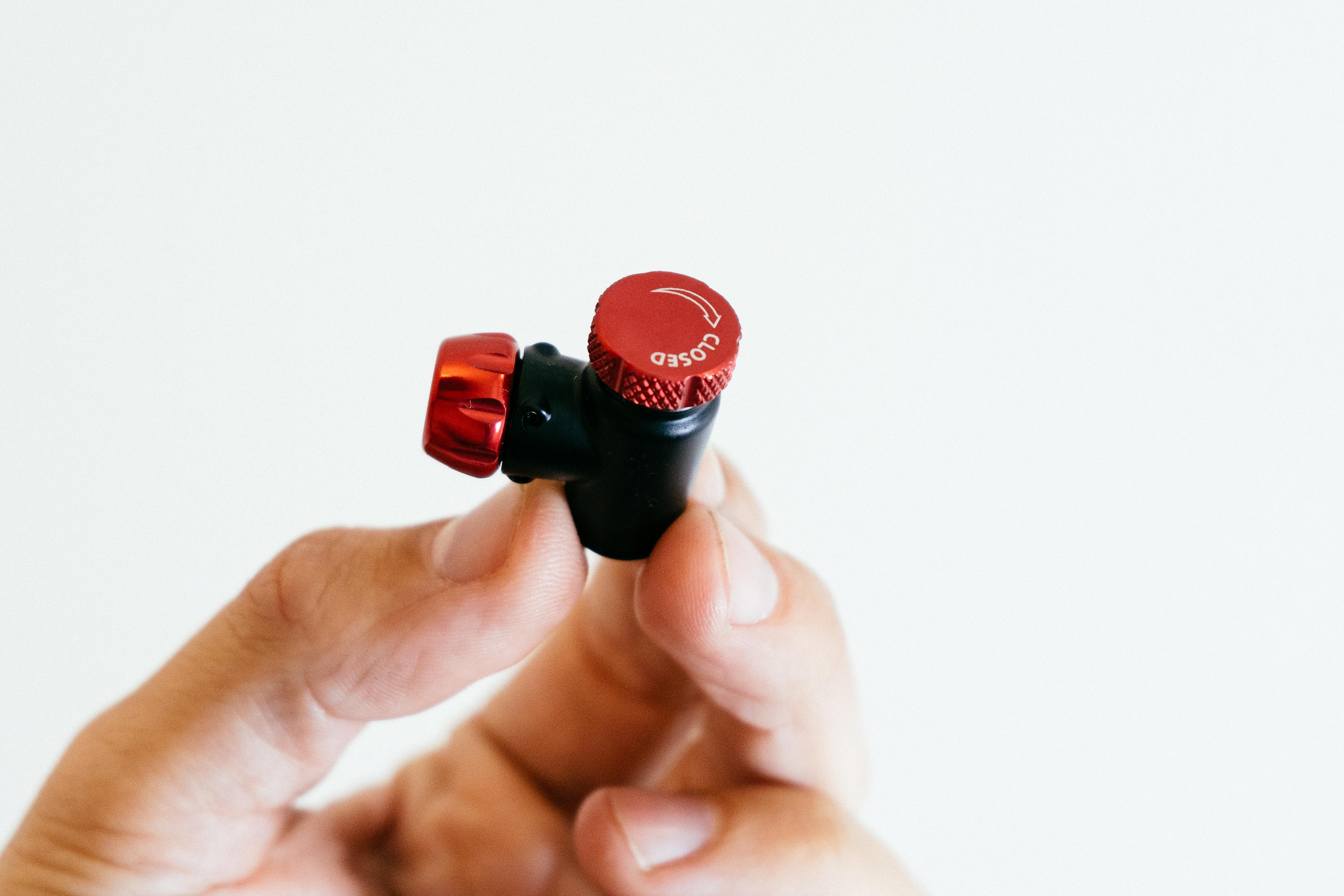
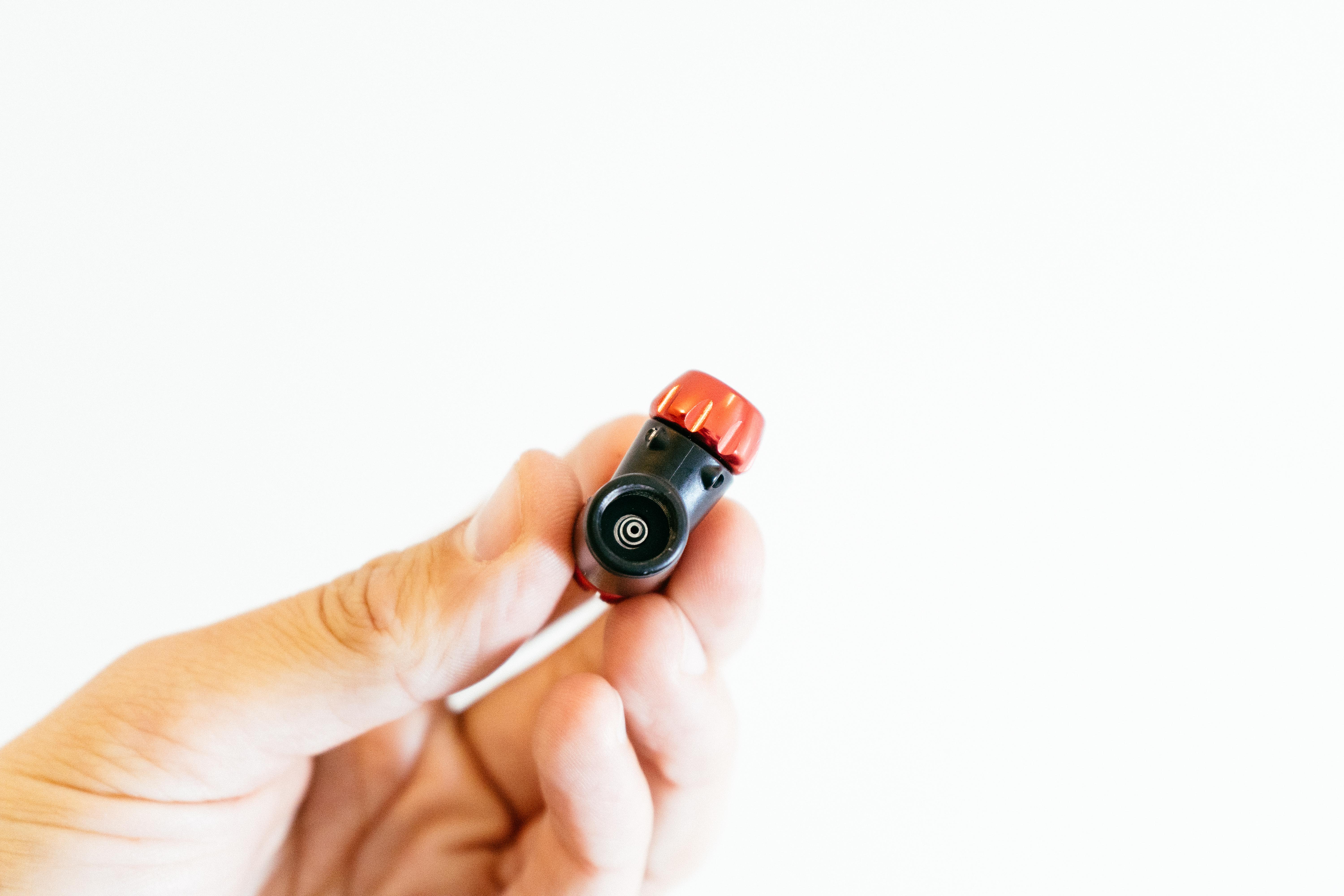
11. Silca Eolo IV
Specifications
Reasons to buy
Reasons to avoid
✅ You want some degree of control over your CO2 flow: The built in regulator allows you to control the flow of carbon dioxide, meaning you can avoid over-inflating and having to back off after.
✅ You want a really small inflator: It's tiny. Even with a canister too it's about as small as inflation devices get.
❌ You want hand protection from freezing cartridges: There's no protective sleeve to protect you from the chilling Joule-Thomson effect whereby gasses get colder as they expand.
❌ You want a low-waste solution to inflation: CO2 cartridges are recyclable, but they are disposable by their nature. If you want an environmentally friendly solution then stick to a pump.
I don't personally care for CO2 inflators. I think they're unnecessarily wasteful, especially when many pumps can get your tyres to the pressures you actually want them, even more so now road tyres are getting wider by the year too.
That being said, they do have their place, even in my on-bike toolkit. For racing (anything without the support of a team car, so I mean gravel racing or just your semi-competitive sportive in this) they are a lot faster than a mini pump, but they are a one shot system and if you cock it up you're done for. Personally, for general riding, I carry both, keeping the cartridge for any situation where a tubeless tyre unseats.
Of all the inflators I've tried while writing the guide to the best CO2 inflators the Silca Eolo IV is the one I actually take with me in my saddlebag. It's well made, as Silca products tend to be, and it's also pretty no nonsense. No included cartridges, and while this is annoying it also means you can choose whether you want small or big ones.
There is also no included protective sleeve. As the compressed carbon dioxide expands it rapidly cools, and ice quickly forms on the head and cartridge so watch your fingers. In my experience the protective sleeves are easily lost anyway and so even on those that do come with them I just... don't have them.
What you get here is a tiny product with easy gas modulation, which relates to a better experience when inflating. It also comes in gravel specific olive green, which I'm sure is key for some gravelleurs.
Best for Tubeless Setup
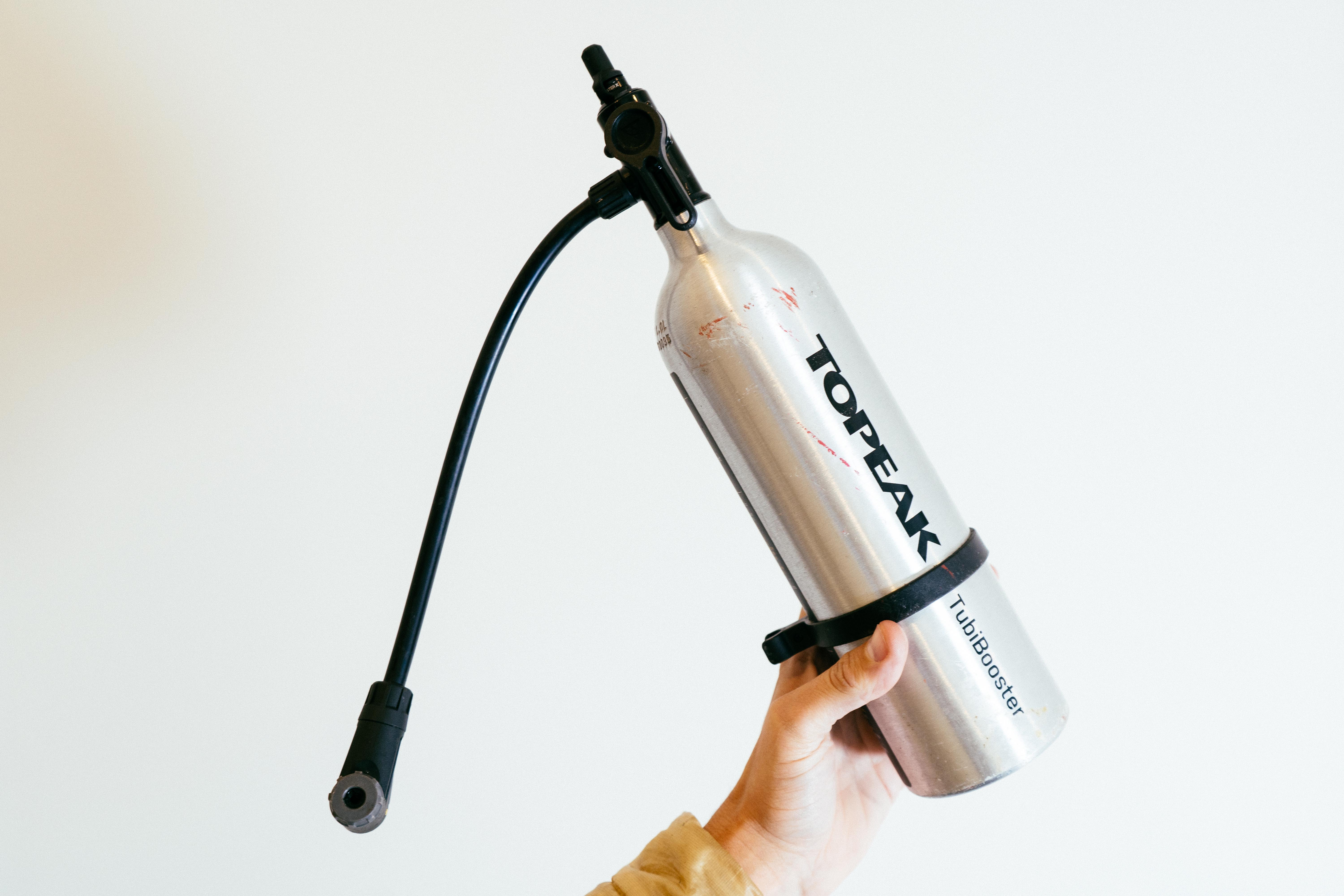
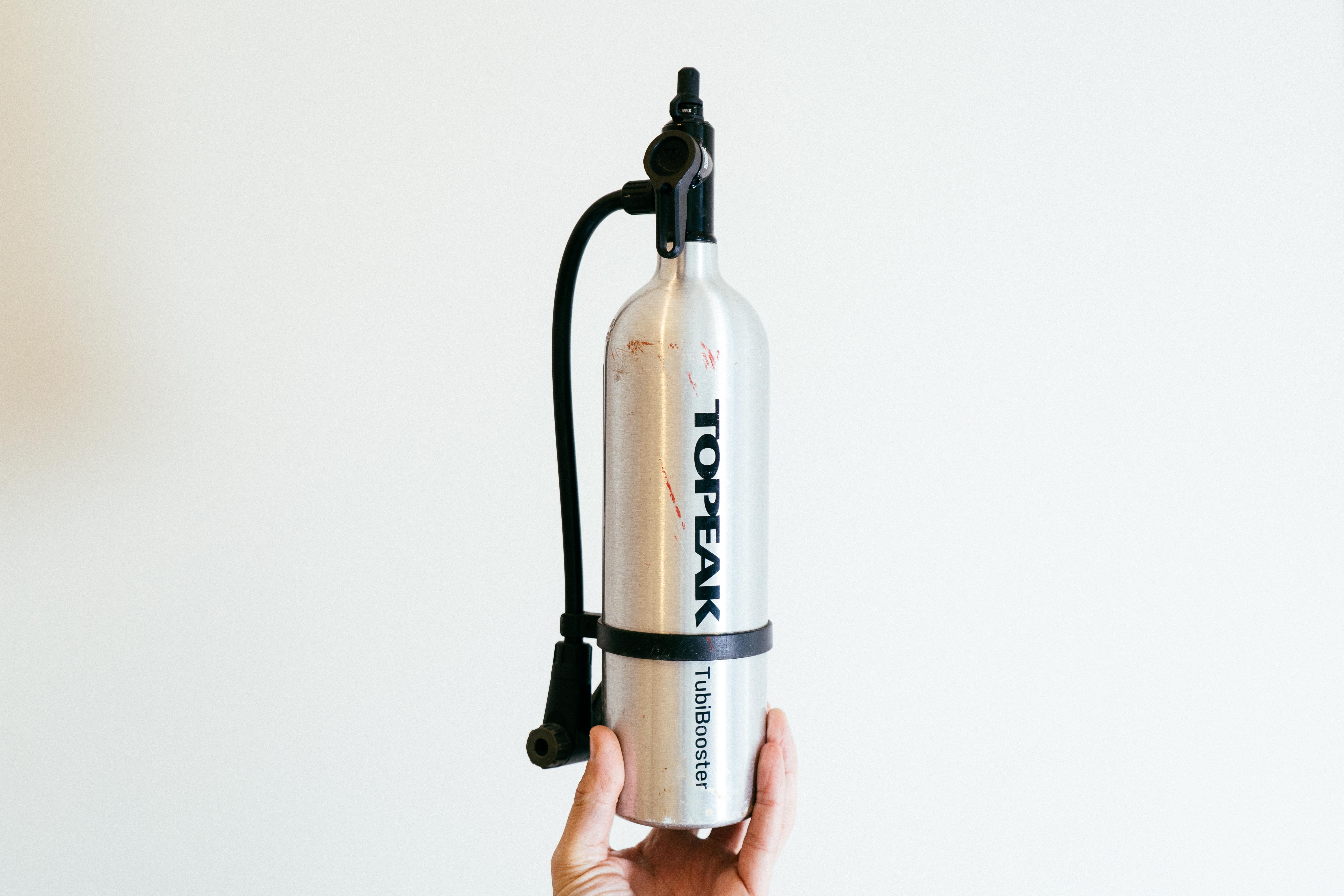
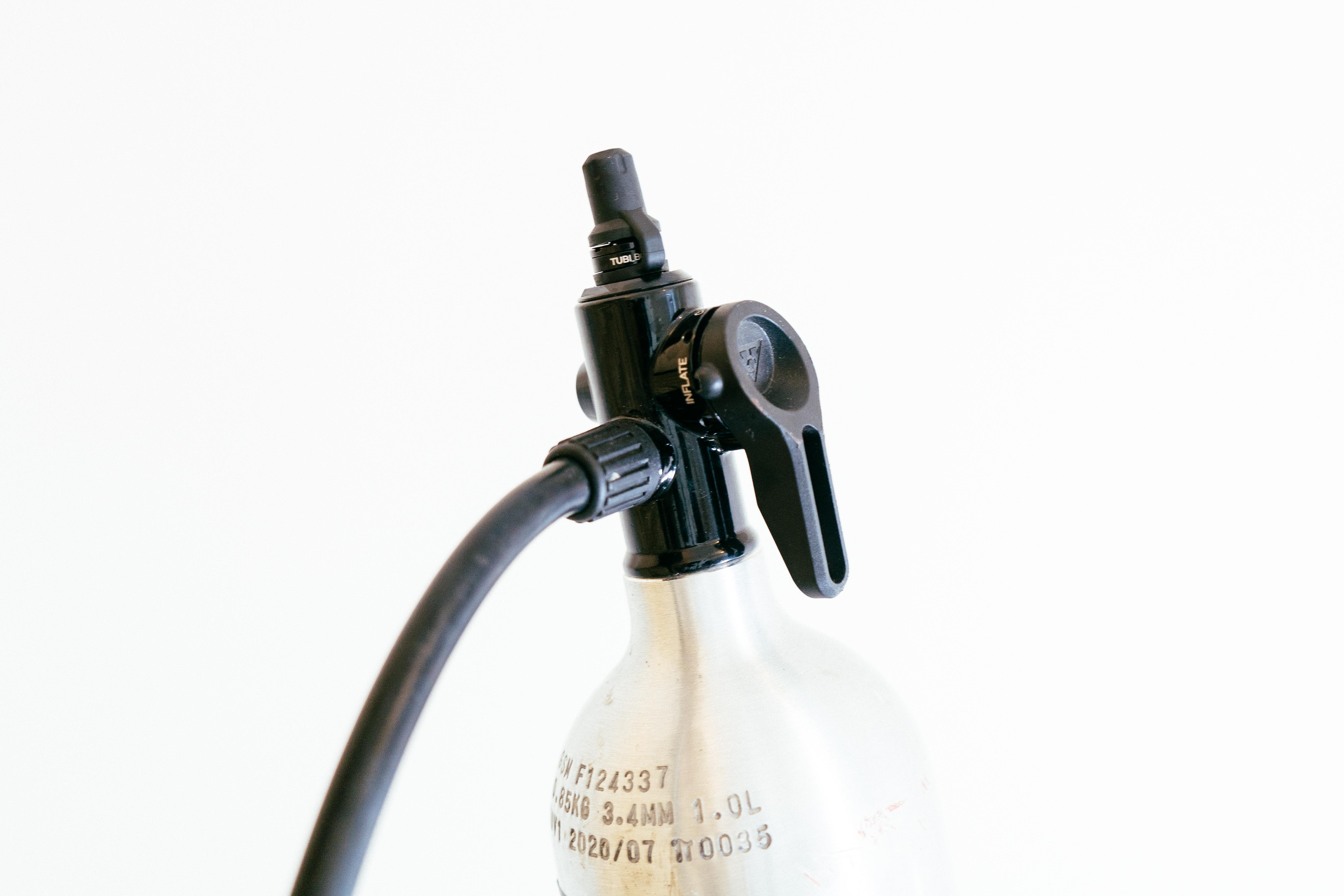
12. Topeak Tubibooster X
Specifications
Reasons to buy
Reasons to avoid
✅ You want to setup tubeless at home but don't want to buy a new pump: The Tubibooster X works with the pump you already have to help make seating tubeless tyres a breeze.
✅ You want a semi-portable solution: Want to help a friend set their tyres up? This is a little more portable than a giant air-chamber floor pump if your friend already has a floor pump.
❌ You want a one-device solution: It's a little more convoluted than the easy air chamber floor pumps.
❌ You don't already have a decent floor pump: If your only pump is a mini pump then this isn't for you. You need something that can easily reach 120PSI; if you don't I'd just buy an air chamber floor pump.
The easiest way to set tubeless tyres up is with a compressor, but most of us aren't going to buy one of them for occasional home tubeless swaps. Air chamber floor pumps, with built in compressors that you charge up, are a common, but relatively expensive solution and if you already have a decent floor pump it's a bit galling having to buy another one just because tyre technology has moved on.
Enter the Tubibooster X; a standalone compressed air chamber. Simply attach the floor pump you already have to the top, charge it up, attach it to your valve, and dump all the air in and listen for the satisfying PING of a freshly seated tyre bead. I've been using mine for a few years now and it's never let me down.
It's not perfect. The hose is annoyingly short meaning it does often topple over, but it is small and portable, and when not using it I can just use the Joe Blow to top my already set up tyres with air.
It does rely on you already having a decent pump. If you've only got a mini pump then it's going to be totally useless, and so if you are leaping with both feet into tubeless for the first time and are also buying a pump then just get one with an air chamber built in.
How to choose
It may appear like the humble bicycle pump is a simple creation. They all pump air from outside my tyres into my tyres, right? More or less, yes, but mostly thanks to differences in tyre sizes and the relative pressures used, there are distinct differences between bike pumps.
In short, you have floor pumps, ideal for use at home before you set off. These deliver air fast and have an accurate gauge to tell you what pressure you're running. While out and about you naturally can't cart something that big around with you, so a mini pump or a frame pump is the next best thing.
These tend to be either low volume but high pressure (for road bikes), or high volume but low pressure (for gravel and MTB). You can mix and match to an extent but we'll get into that later. Frame pumps sit somewhere in between, offering a higher volume of air per stroke, but also higher pressures too.
Should I carry a pump on my bike?
Absolutely. A mini pump or a frame pump should be with you at all times on every bike ride. I make sure I always leave the house for a ride with one packed. You can get away by using the best CO2 inflators, but they're one-hit. If you run out of gas you're going to be in trouble, so even then we'd say you should have a mini pump with you anyway, along with tyre levers, a spare inner tube, and a bike multi-tool.
How do I fix a puncture?
This differs depending on whether you are running inner tubes or tubeless sealant, but in short you let all the air out, lever the tyre off with some tyre levers, take the inner tube out, find the hole, stick a patch on it, then reverse the process and inflate with your pump.
There's more to it than that, though. Luckily we've got a guide on how to repair an inner tube that covers everything in a lot more detail.
Can I use a gravel pump on a road bike?
Gravel pumps add more air into the tyre per stroke, but cannot reach the high pressures needed for road tyres, so we wouldn't recommend taking a gravel mini pump out with you on a road ride. Some mini pumps have high-pressure switches though, making them much more multi-purpose.
Road mini-pumps will take longer to inflate a gravel bike tyre, especially if it's a large one, but will definitely be able to produce the pressures required if you have the patience, so while we wouldn't take a gravel pump on a road ride, we would take a road pump on a gravel ride.
Frame pumps will happily do either job.
What is PSI and BAR?
How much a tyre or inner tube is inflated is expressed in usually one of two measurements which are pretty universal in the bike world. BAR is the metric unit of pressure and PSI is the imperial measurement.
BAR is measured in 0.1 increments but PSI is measured in 1.0 increments. 2.0 BAR is the equivalent of 29 PSI. So when hearing or reading about BAR measurements the readings will be lower than PSI. The UK and USA seem to refer to PSI more whilst the pro racing world and much of Europe seem to use BAR.
What pressure should I put in my bike tyres?
This all depends on the tyre width and the system weight (you, plus the bike, plus any luggage). There's an amount of trial and error, but there are loads of easy online calculators that'll give you a good starting point. Key to this is having a floor pump that can show you how much air is actually in your tyres.
Thinking on tyre pressure has changed a lot in recent years though, and harder doesn't actually mean faster, so don't just pump them up to the tyres maximum pressure unless you want a very uncomfortable ride.
Do all bike pumps fit all valve types?
Most, but not all bike pumps will fit both a Presta (the pointy road bike one) and Schrader (the fatter car one) valve. Track pumps will invariably do both, but with mini pumps make sure yours will work with the valves you use.
Tubeless valves tend to be Presta, and so this is becoming the standard for all pumps, but there are some MTB options that will only do Schrader. Likewise, some pumps are Presta-only (and will also inflate the older Dunlop valves sometimes found on budget hybrid bikes), so check which valve type you have and make sure that your chosen pump will work with it.
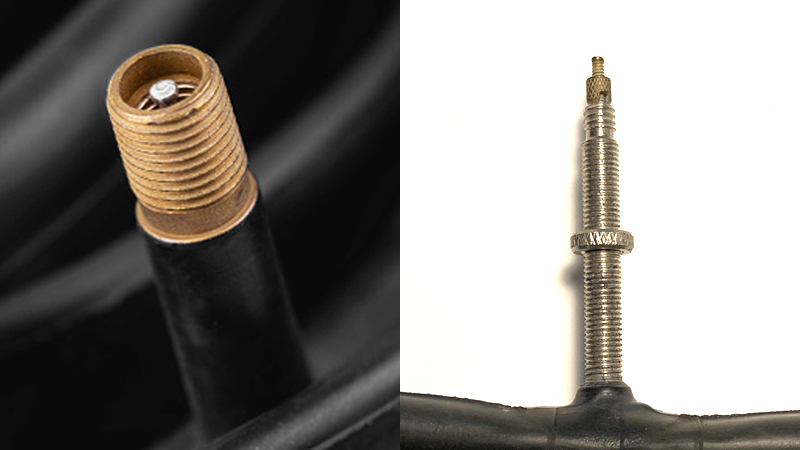
What's better; CO2 or mini pump?
A CO2 inflator will get your tyres inflated extremely quickly, and can even reseat tyres in a pinch. The downside is that the canisters are single-use, so if you take one with you and puncture twice or your tube is still not airtight, you're in trouble at that point. They're also a bit wasteful if you're not racing, and CO2 will also leak out of your tyres overnight, rendering them useless for multi-day trips.
Mini pumps, in contrast, take longer to inflate a tyre with, but the only limiting factor is your strength and energy levels. There is always enough air to pump and it's free. You're also not going to get frostbite from using a pump, unlike some CO2 inflators.
If you're really on the fence I wrote a whole piece trying to work out which is better, a mini pump or a CO2 inflator?
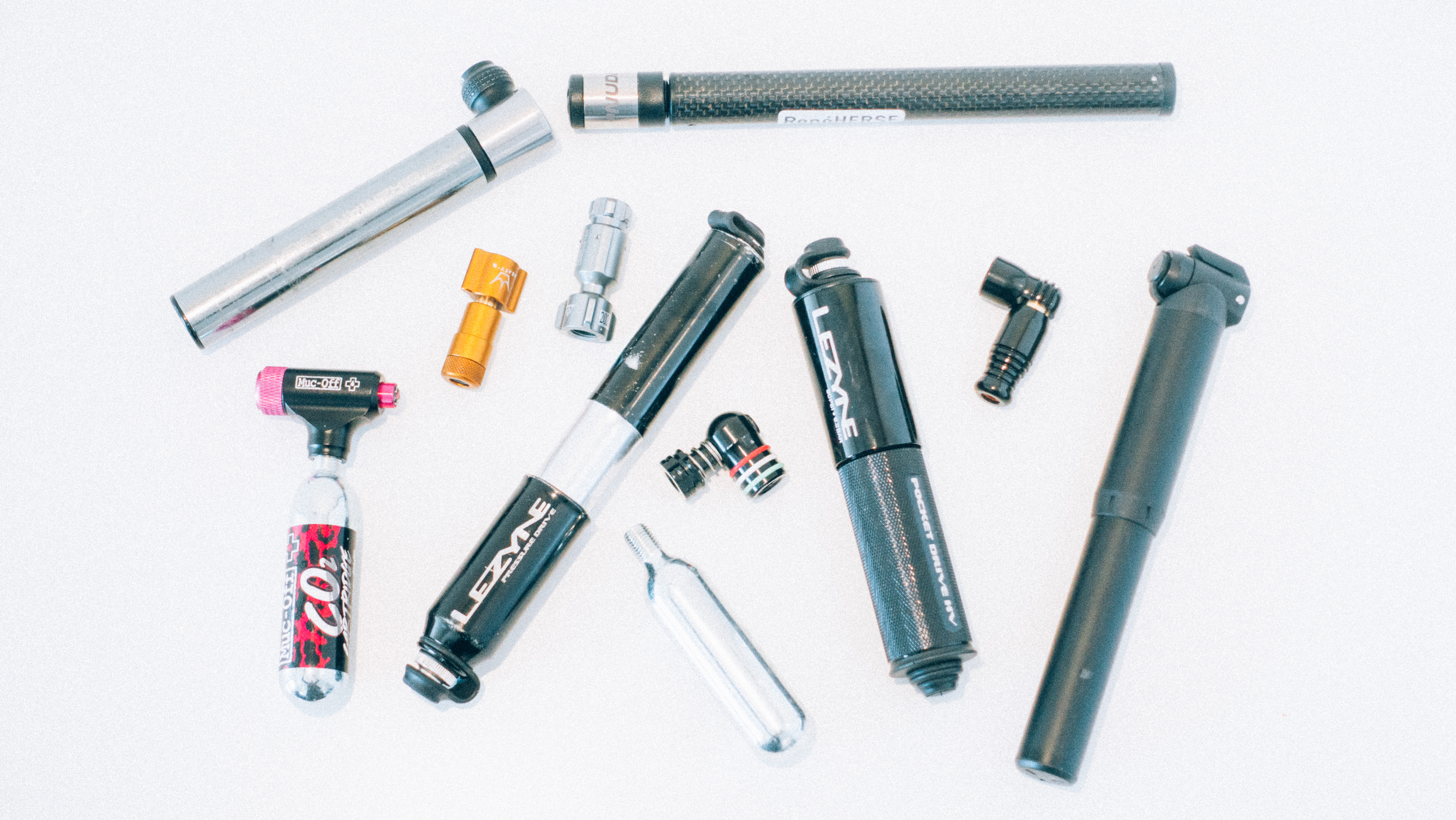
Should I buy a floor pump?
While you can inflate your tyres at home before you head out with a mini pump it'll take ages and you won't get the pressures you want. For a gravel bike it'll take even longer. You could use a car tyre compressor, though these rarely work with Presta valves, but in either case, the one drawback is that you will have no idea what pressure you're running.
A track pump, even a budget one, will allow you to inflate tyres quickly and easily and know what pressures you're running, which is key to producing a consistent ride feel, a faster ride, the right level of grip and protecting your tyres from sidewall damage while out on the road or the trail.
Do I need a reservoir pump?
Reservoir pumps are extremely useful if you need to set up tubeless tyres. Without an inner tube, seating these can be tricky or sometimes impossible using a track pump alone. Reservoir pumps (or other solutions like the Topeak Tubibooster) allow you to deliver a large volume of air in a very short space of time. This pops the tyre bead up onto the rim and allows the sealant to begin its job sealing the tyre.
If you are in the market for a new track pump and are running or want to run tubeless then it's probably a good investment. If you already own a track pump then a separate reservoir like the Tubibooster is definitely a cheaper option and just as effective.
Should I buy an electric tyre inflator for my bike?
Electric tyre inflators like the Cycplus in this guide will save you a fair amount of effort if you regularly inflate a lot of tyres, but they're not a silver bullet. Think of them as a nice luxury item though, rather than a necessity; they can't really do anything a track pump can't do, and when it comes to setting up tubeless tyres they can't provide as much air as quickly as a reservoir pump can.
How do I test bike pumps?
Initial every pump that comes across my desk gets the usual eye over. Ergonomics, features, and things like build quality you can get a good deal of information on just by having a play, especially with a pile of other pumps on hand to compare to.
There's no substitute for actual, repeatable testing, though. Most pumps come with a stated maximum pressure, which you will not get anywhere near unless you're either very strong, very patient, or both. Each pump in the guide will get a road tyre up to at least a pressure sufficient to allow you to get home. Some may take longer than others to get there though.
As well as taking them out riding with me each pump was also pitted against the same 28c Specialized Turbo Cotton Hell of the North tyre with the same latex inner tube. Each was given 100 strokes, with the pressure afterwards recorded using a standalone Topeak pressure gauge. The more pressure it achieved in 100 strokes the faster it is to inflate your tyre.
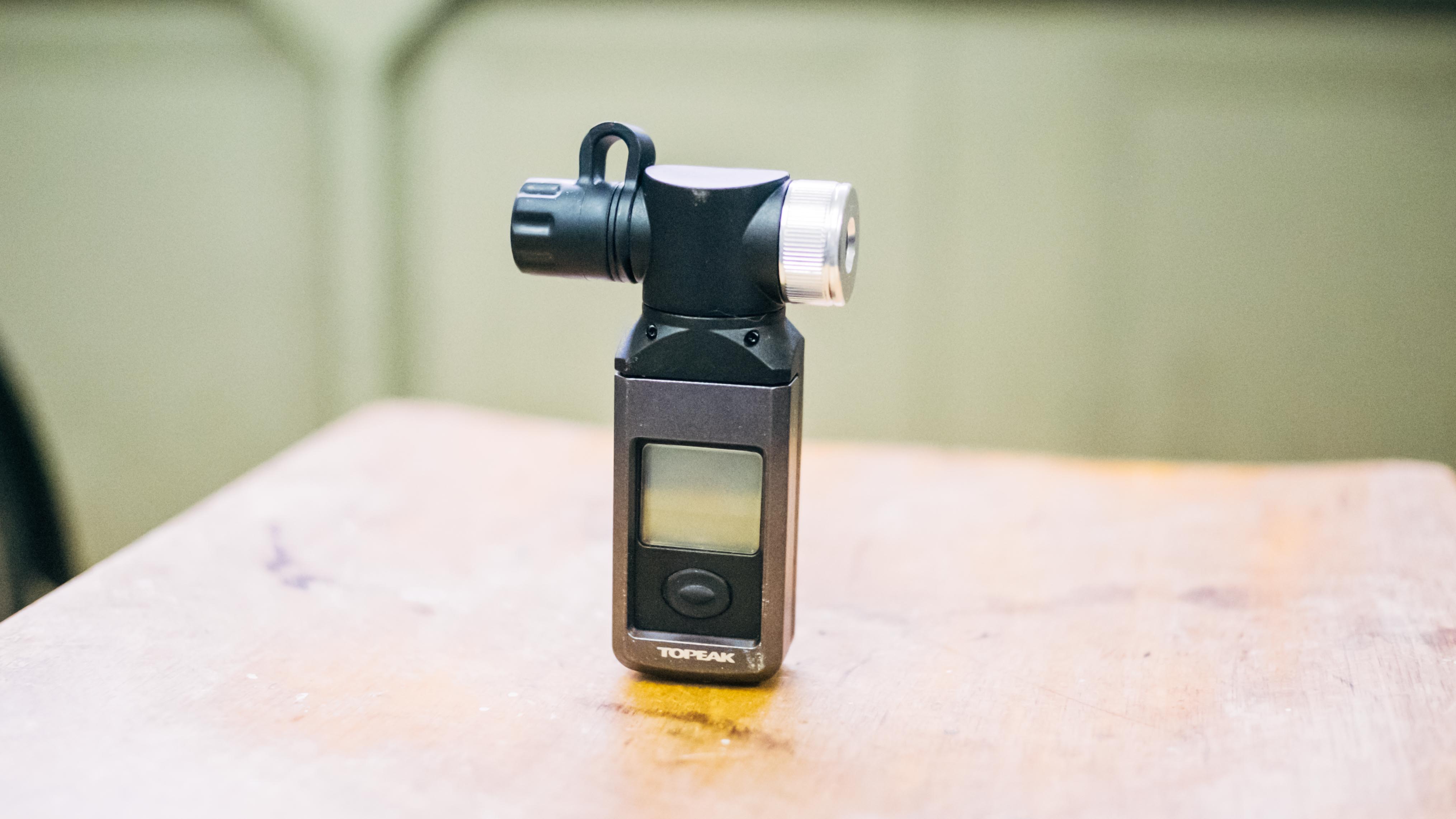
Meet the tester
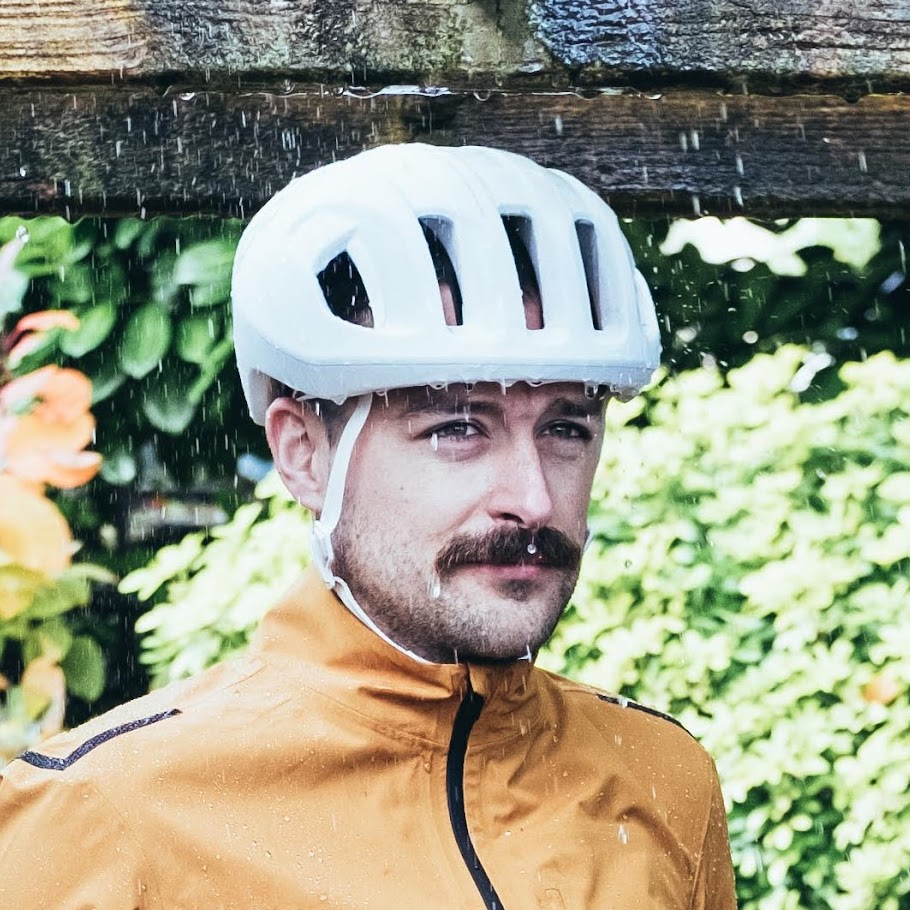
They're often overlooked nowadays in favour of a CO2 inflator, but I'll always go out with a mini pump or a frame pump. I've been let down in the past by some, and over the years have honed in on what is the sweet spot between portability, capacity, and weight. Your own middle ground might sit somewhere else, but I always err on the side of reliability.
The latest race content, interviews, features, reviews and expert buying guides, direct to your inbox!

Will joined the Cyclingnews team as a reviews writer in 2022, having previously written for Cyclist, BikeRadar and Advntr. He’s tried his hand at most cycling disciplines, from the standard mix of road, gravel, and mountain bike, to the more unusual like bike polo and tracklocross. He’s made his own bike frames, covered tech news from the biggest races on the planet, and published countless premium galleries thanks to his excellent photographic eye. Also, given he doesn’t ever ride indoors he’s become a real expert on foul-weather riding gear. His collection of bikes is a real smorgasbord, with everything from vintage-style steel tourers through to superlight flat bar hill climb machines.